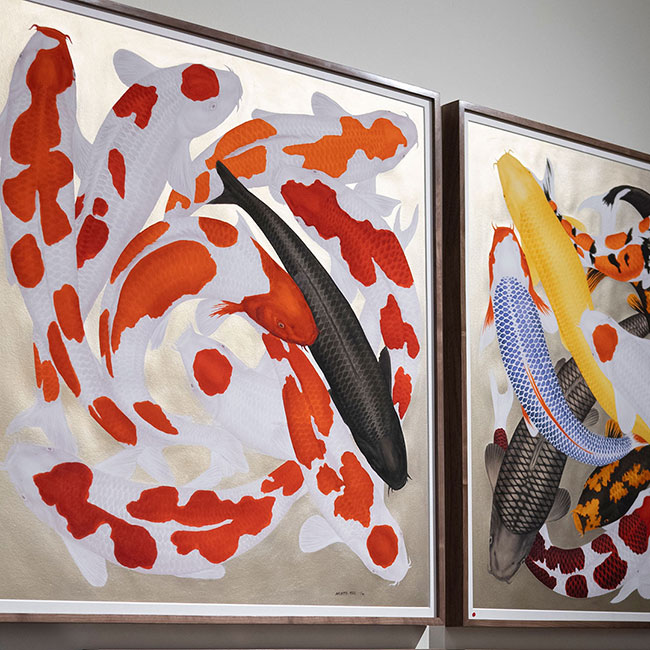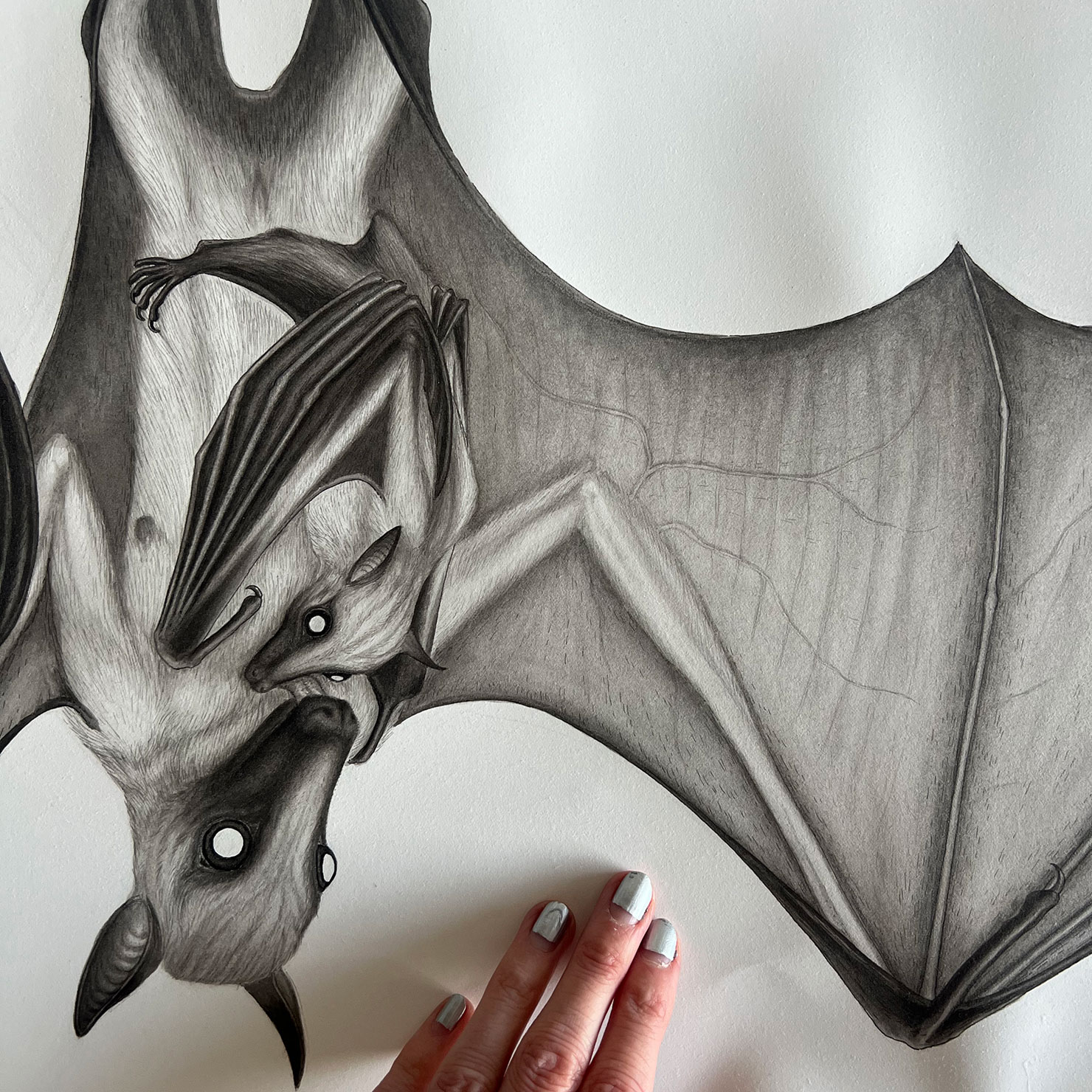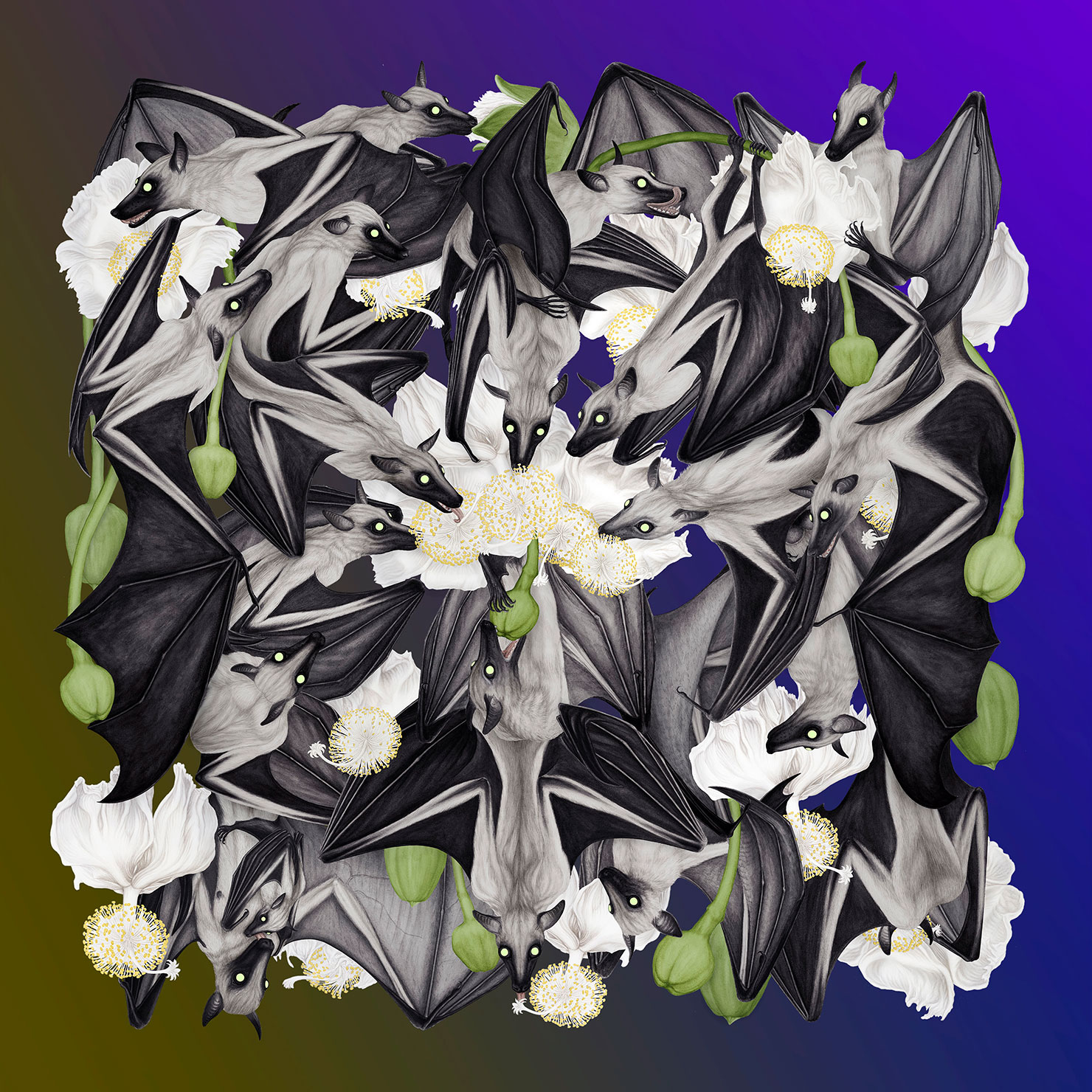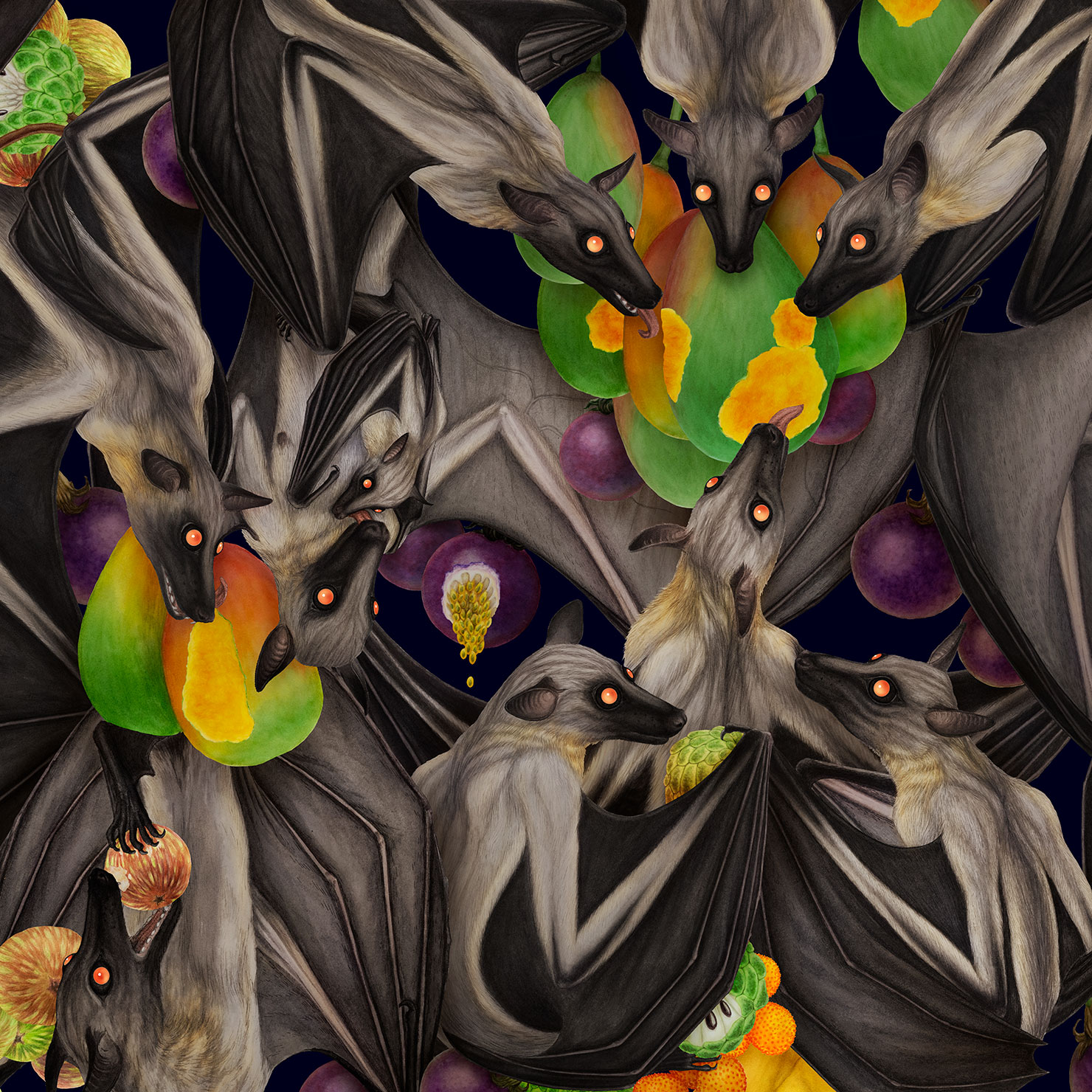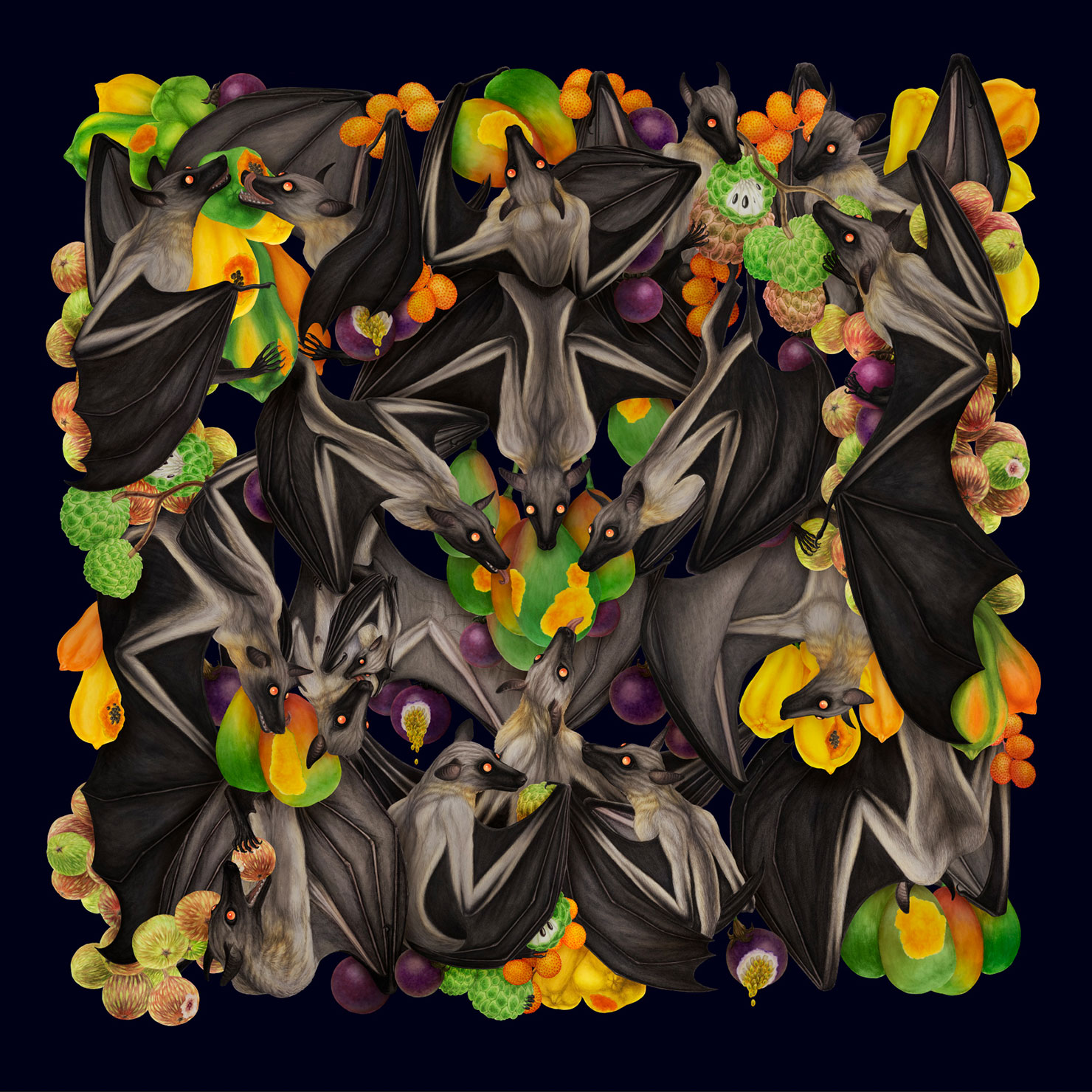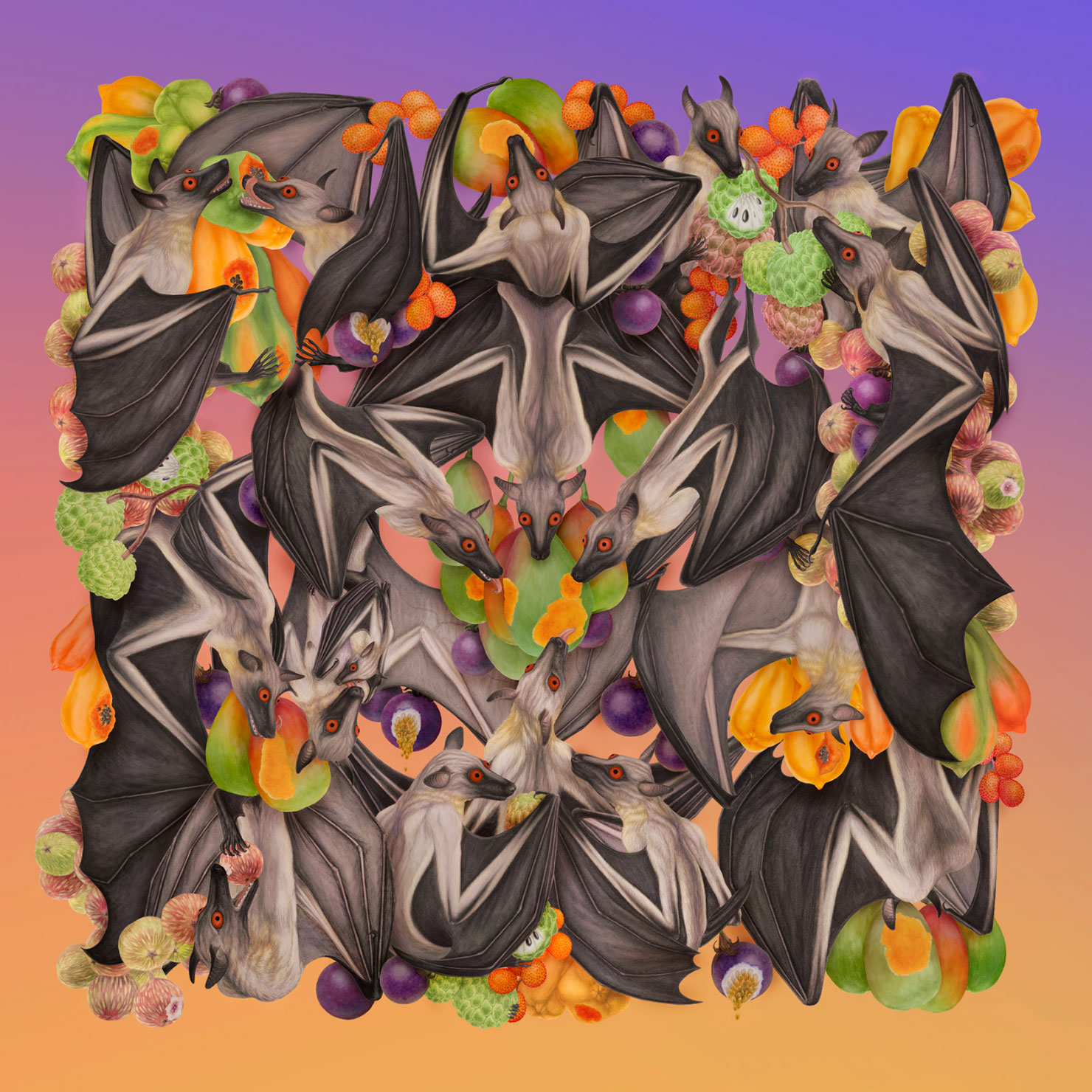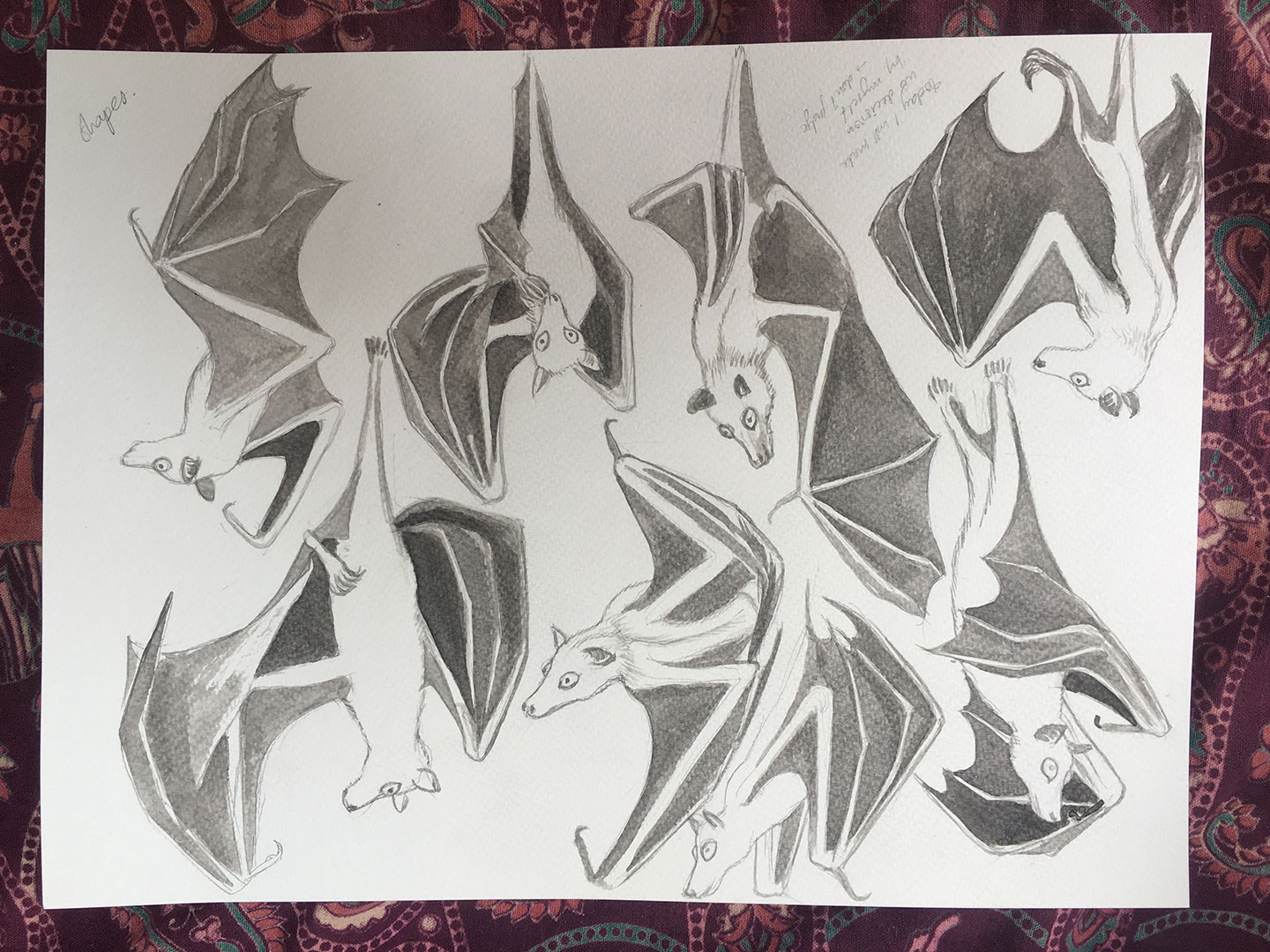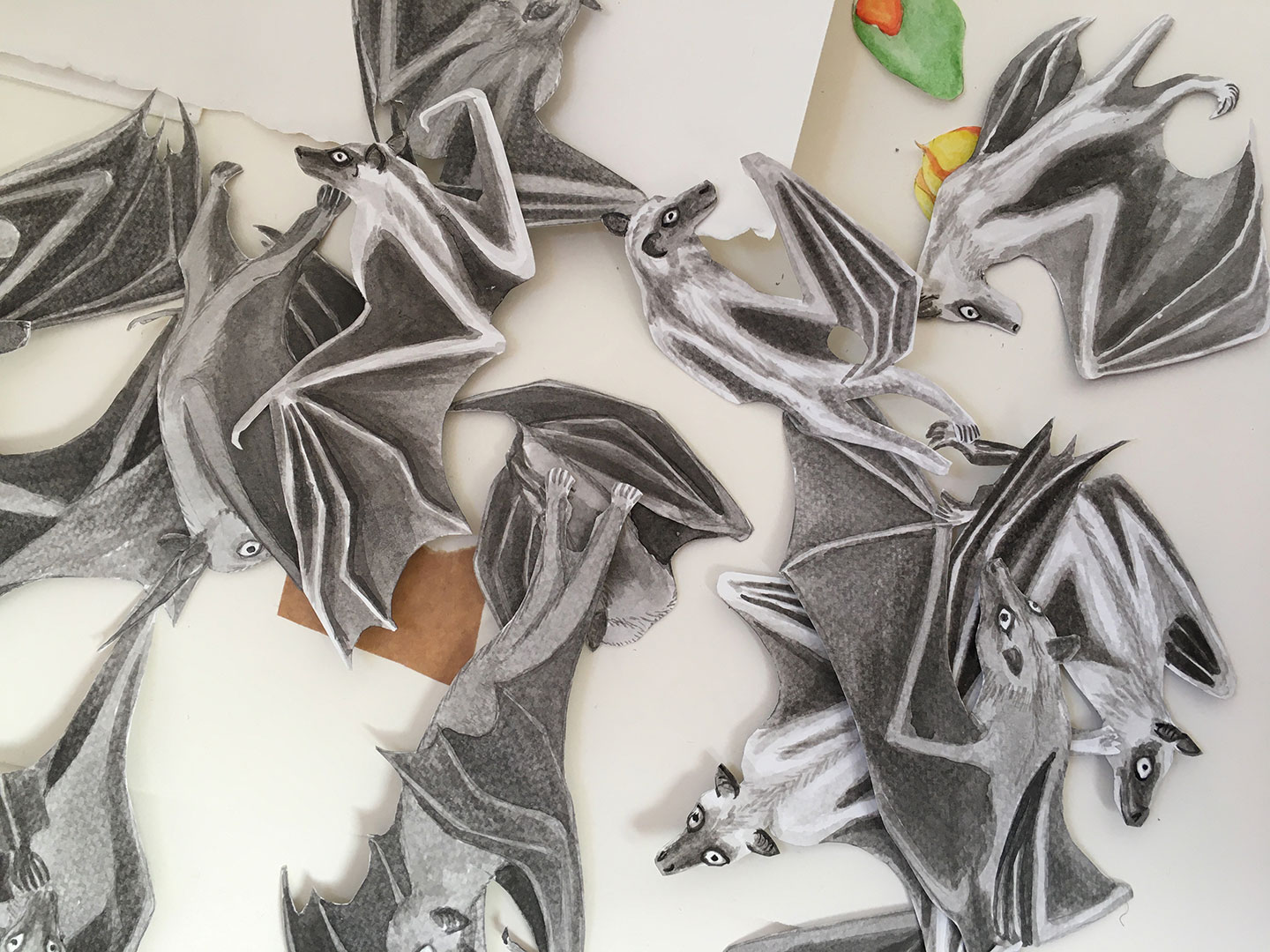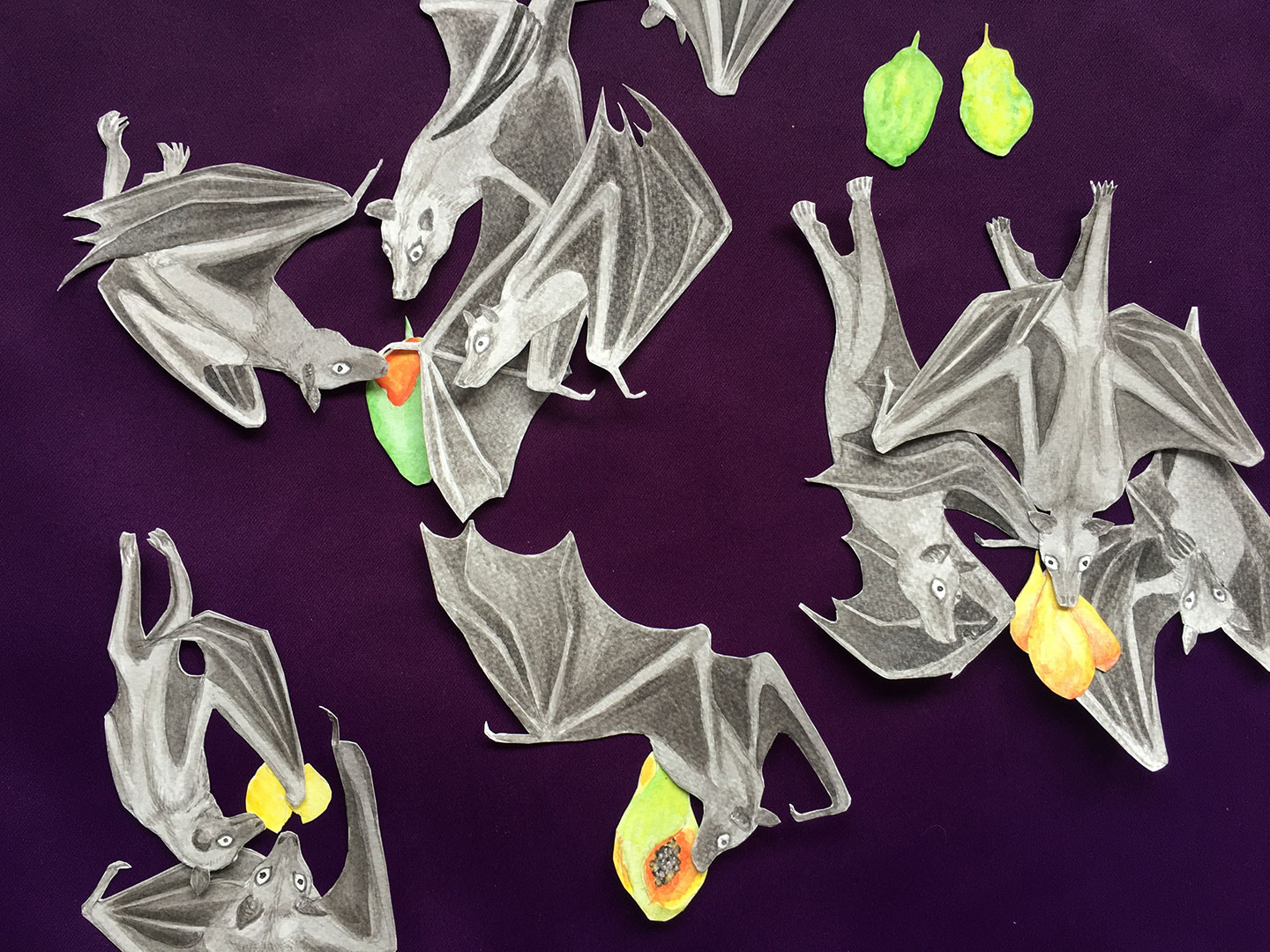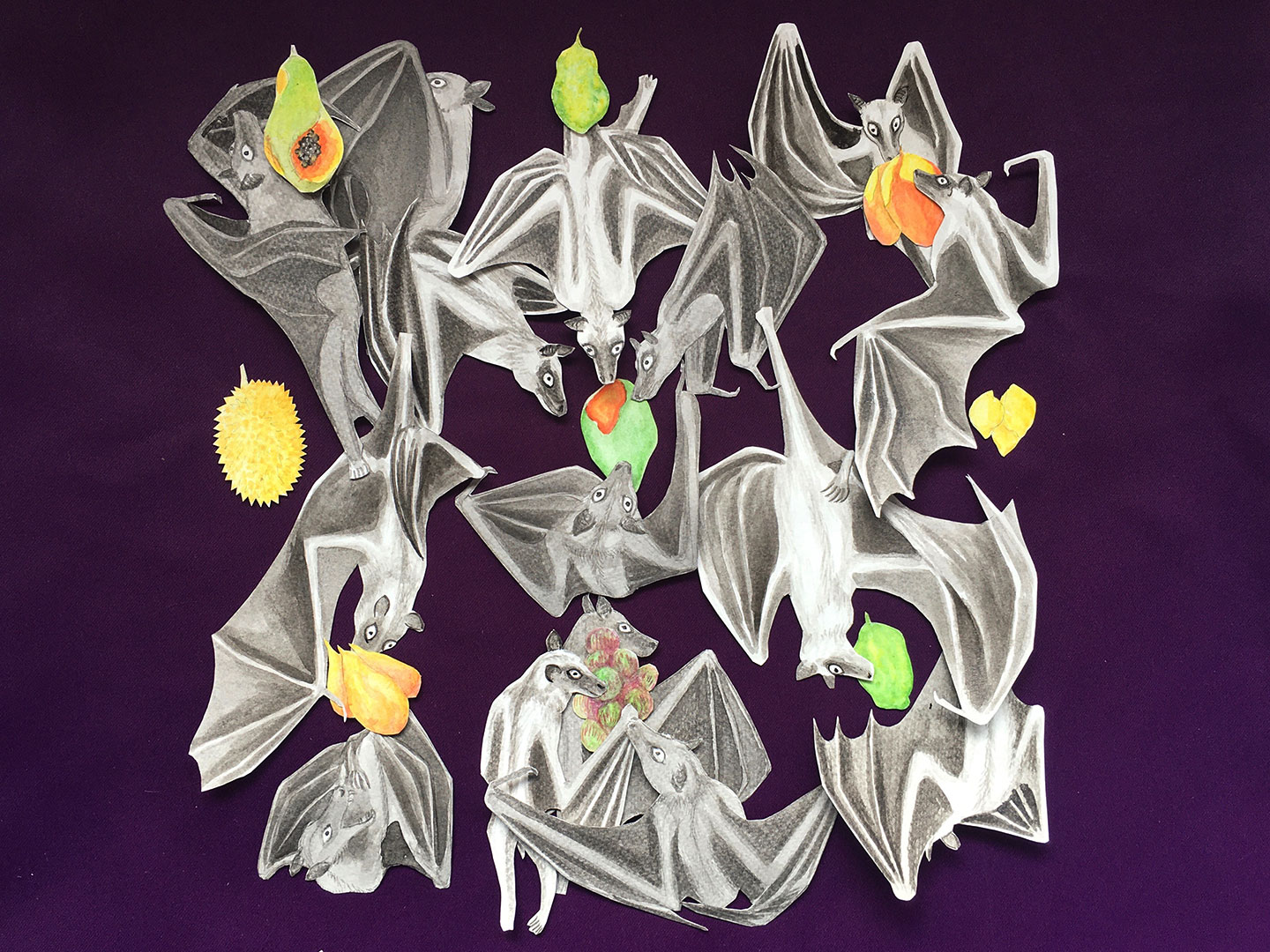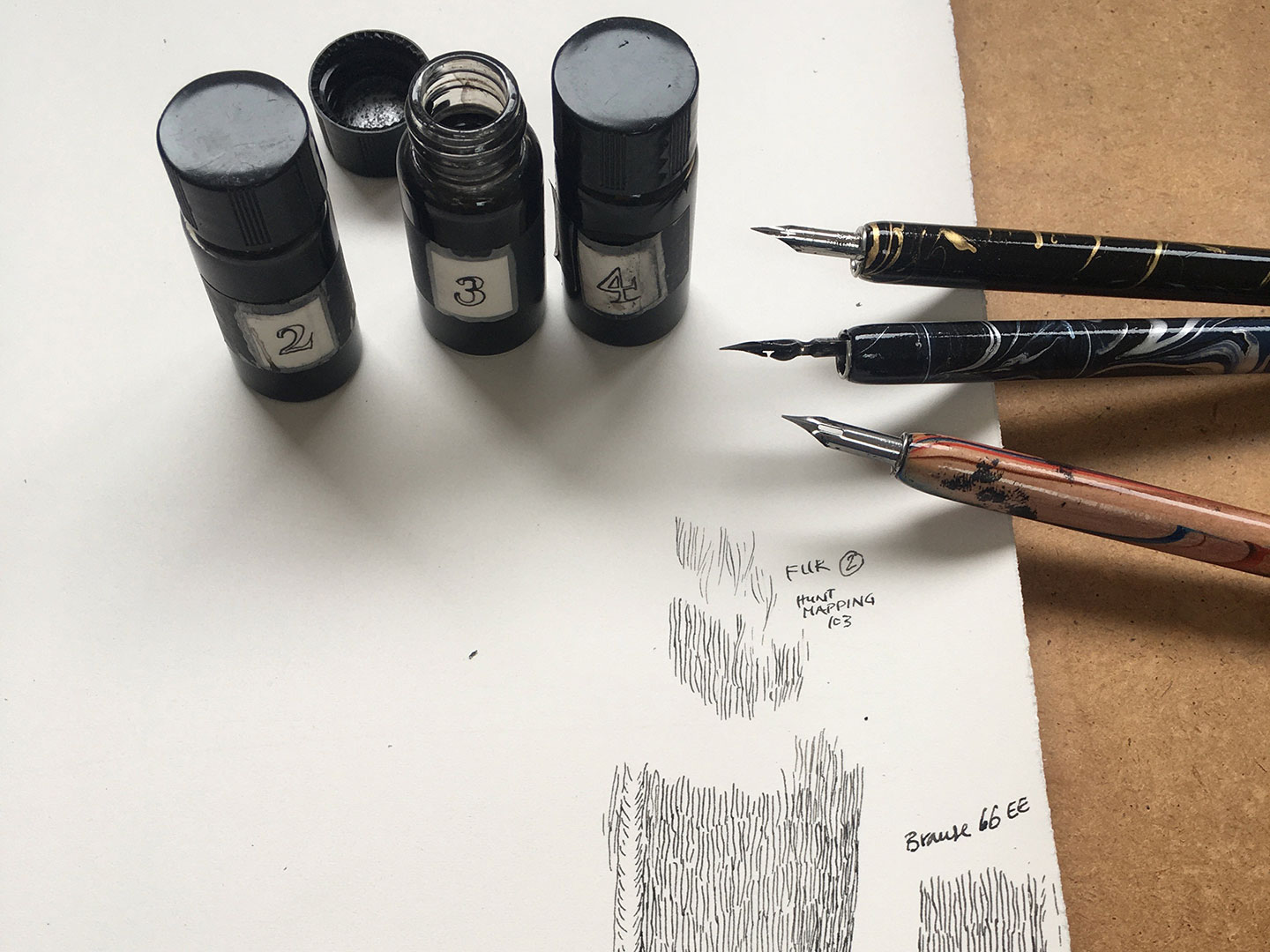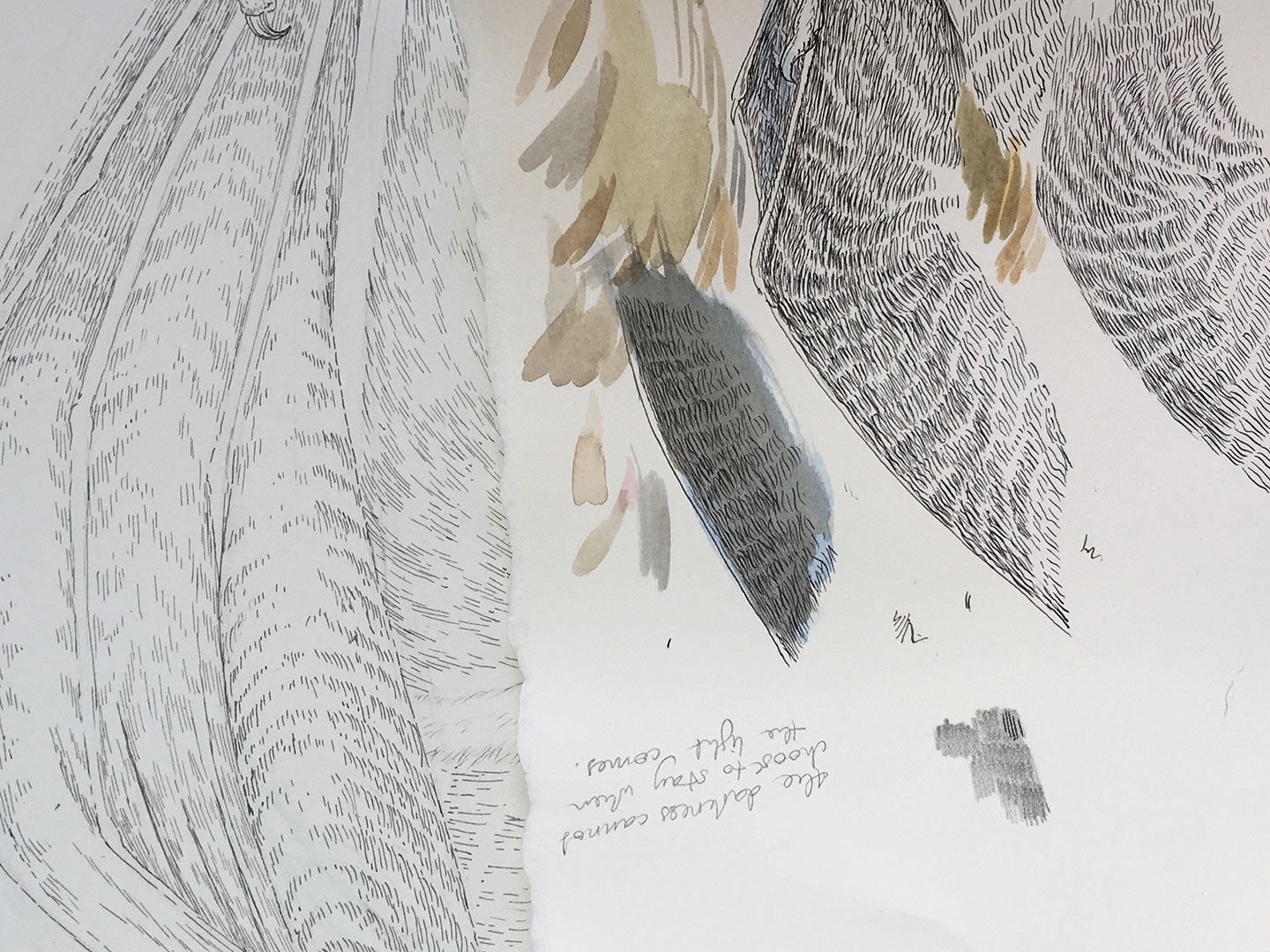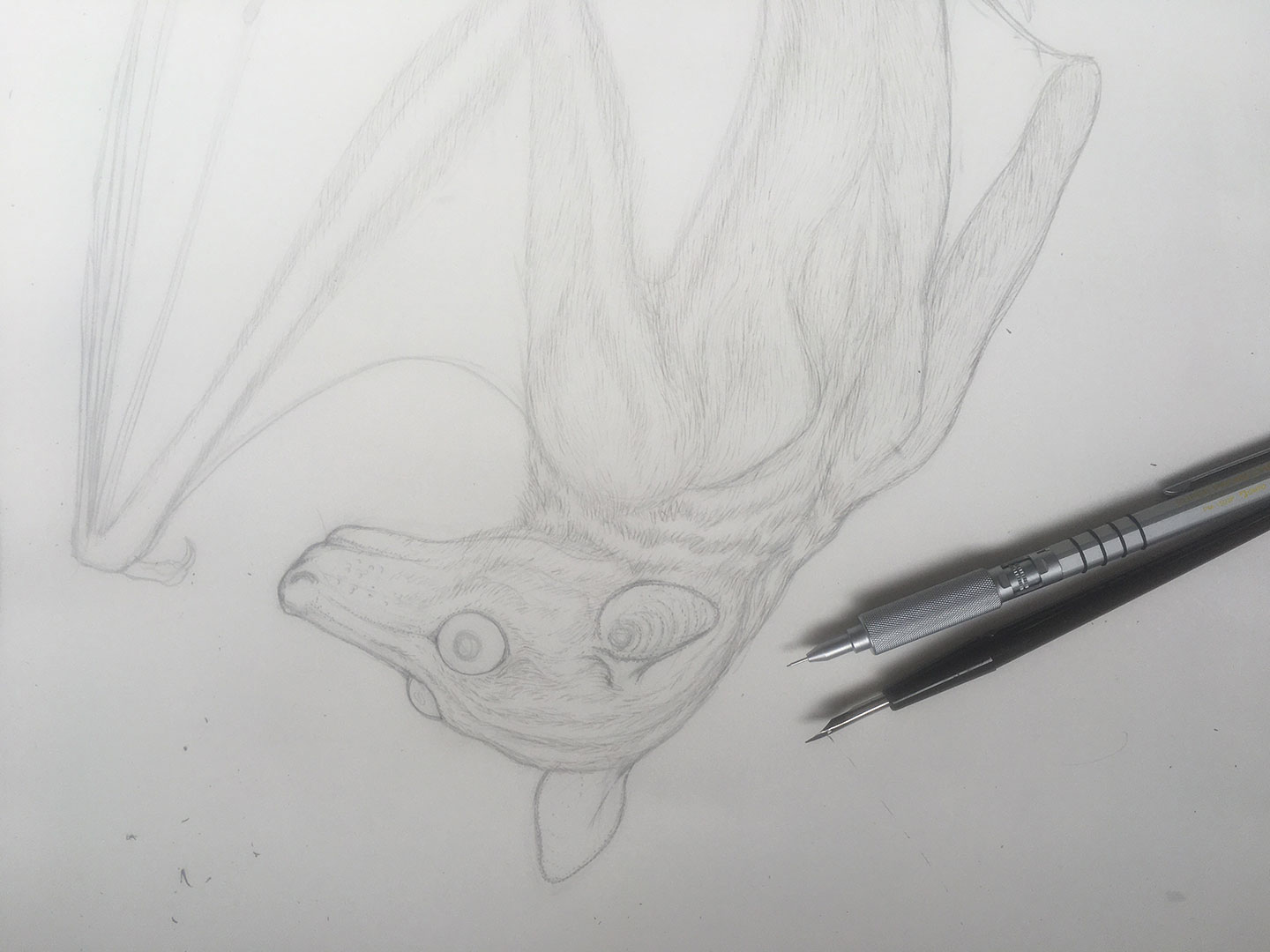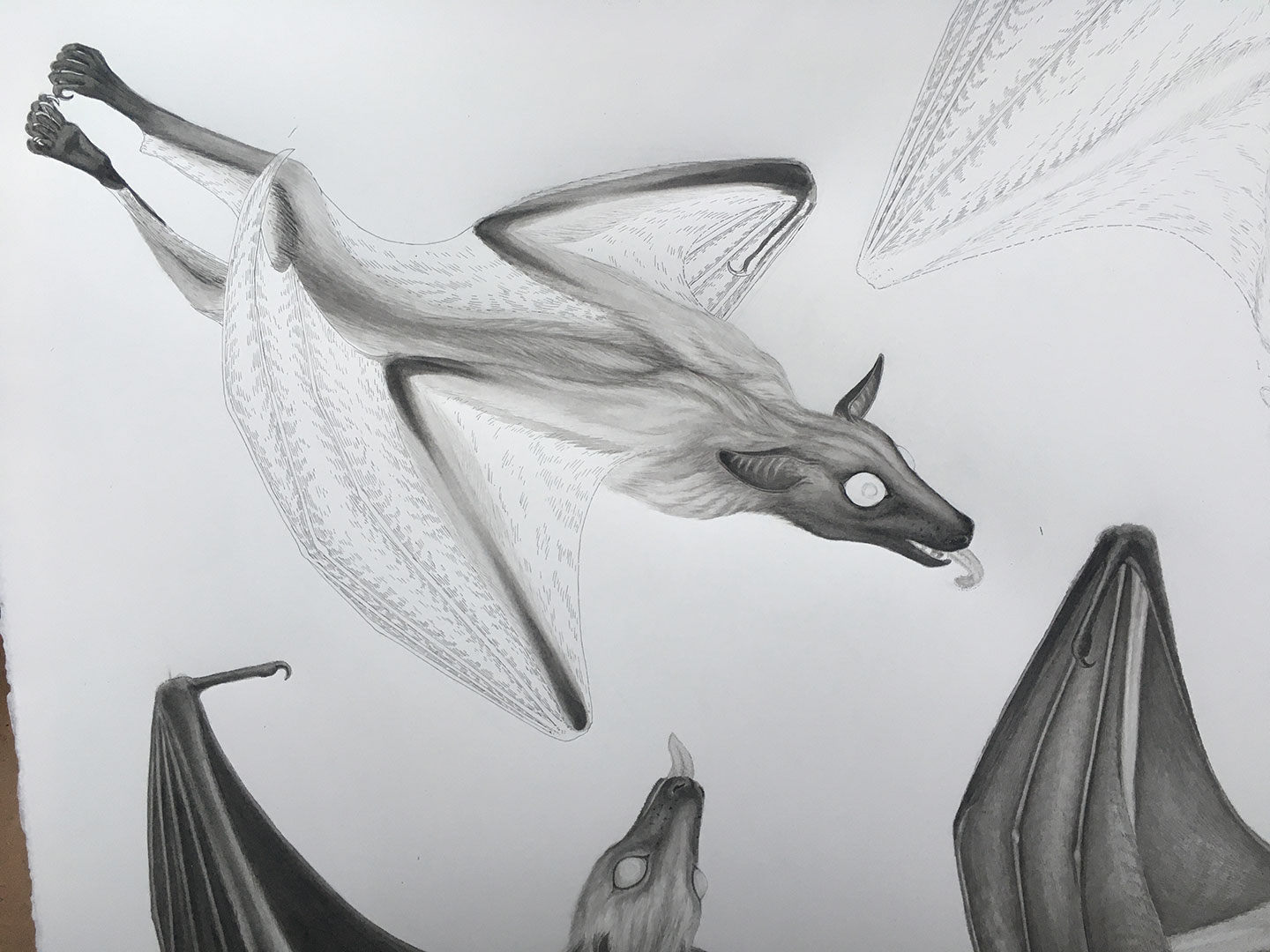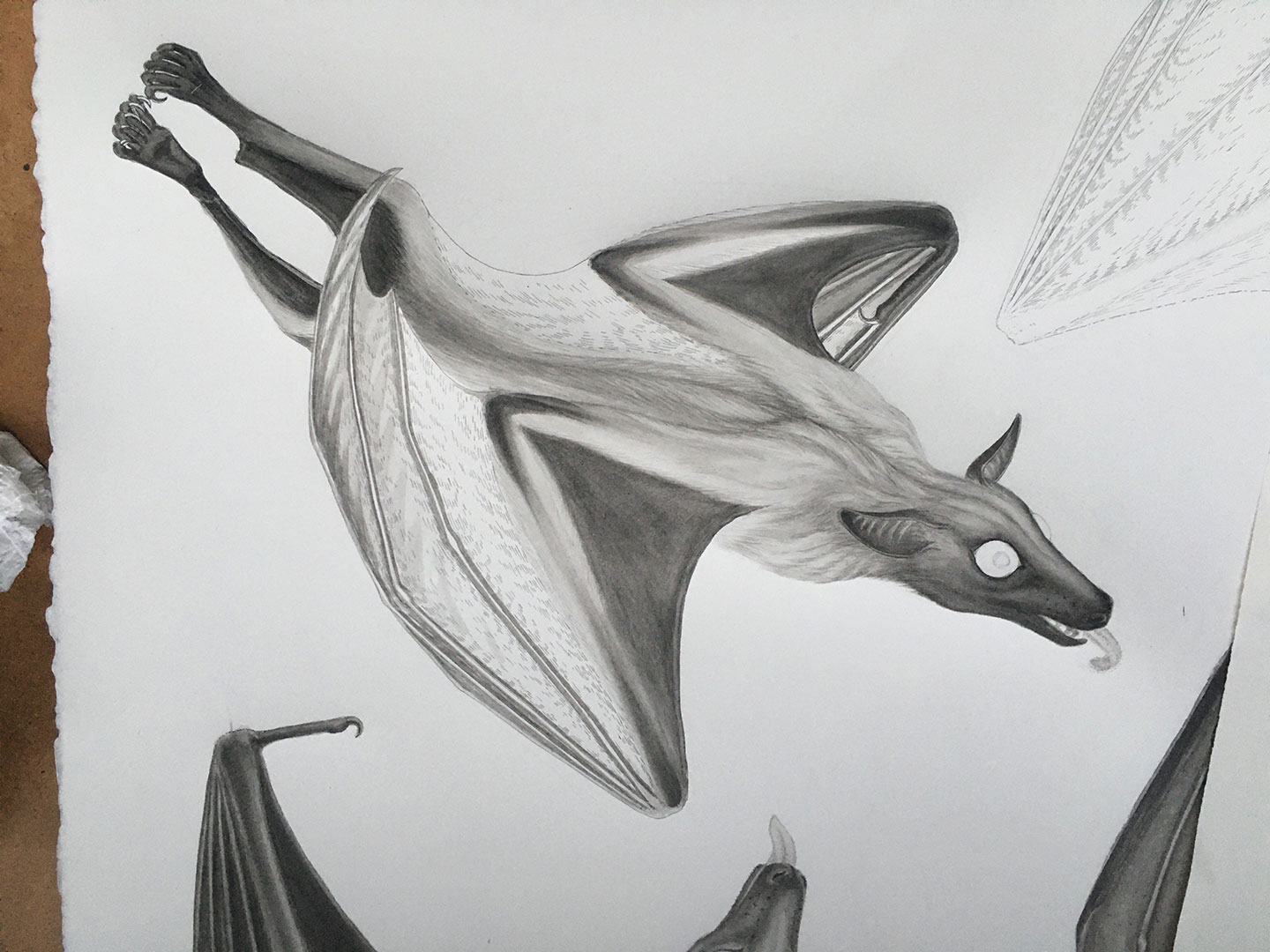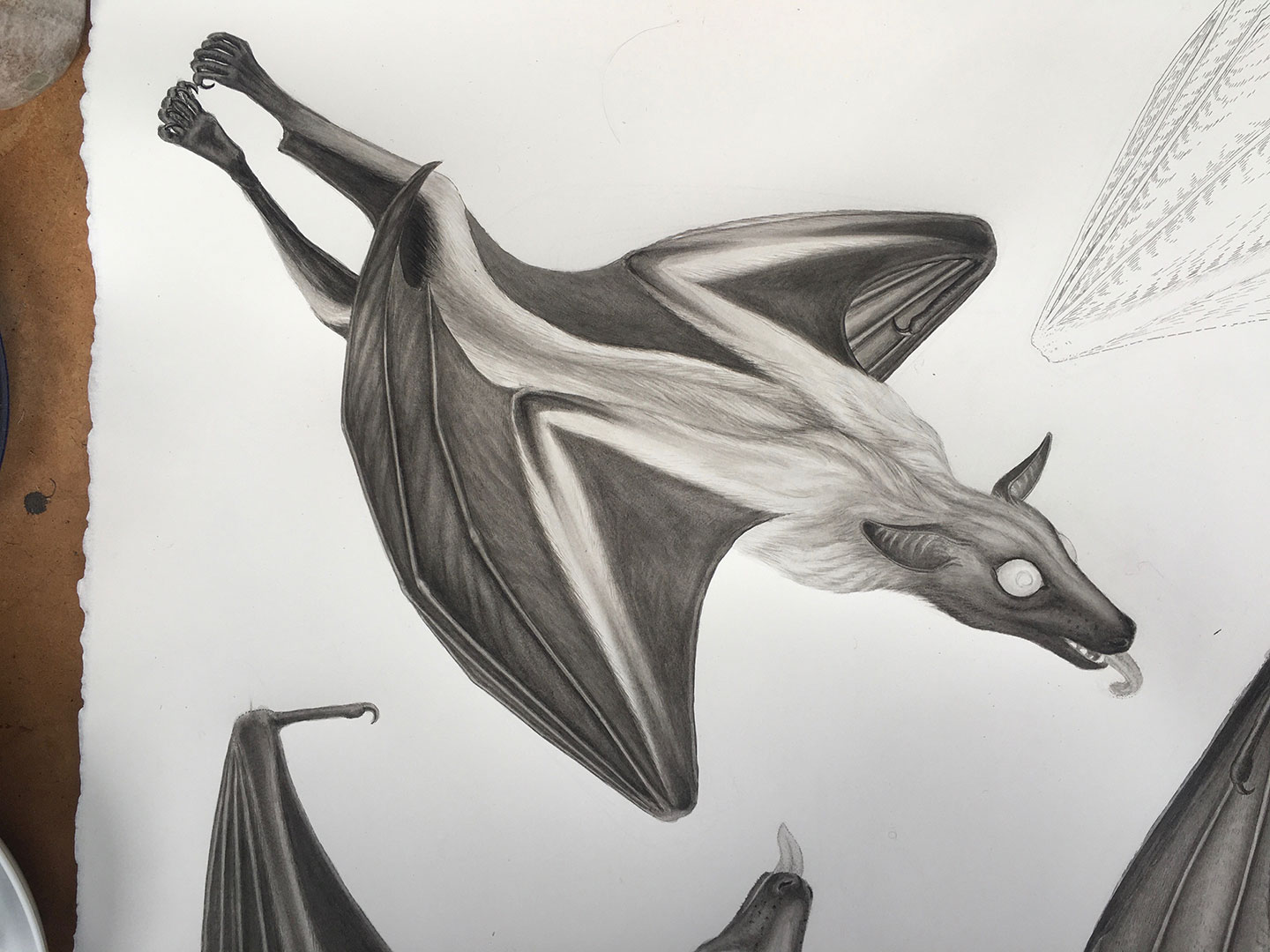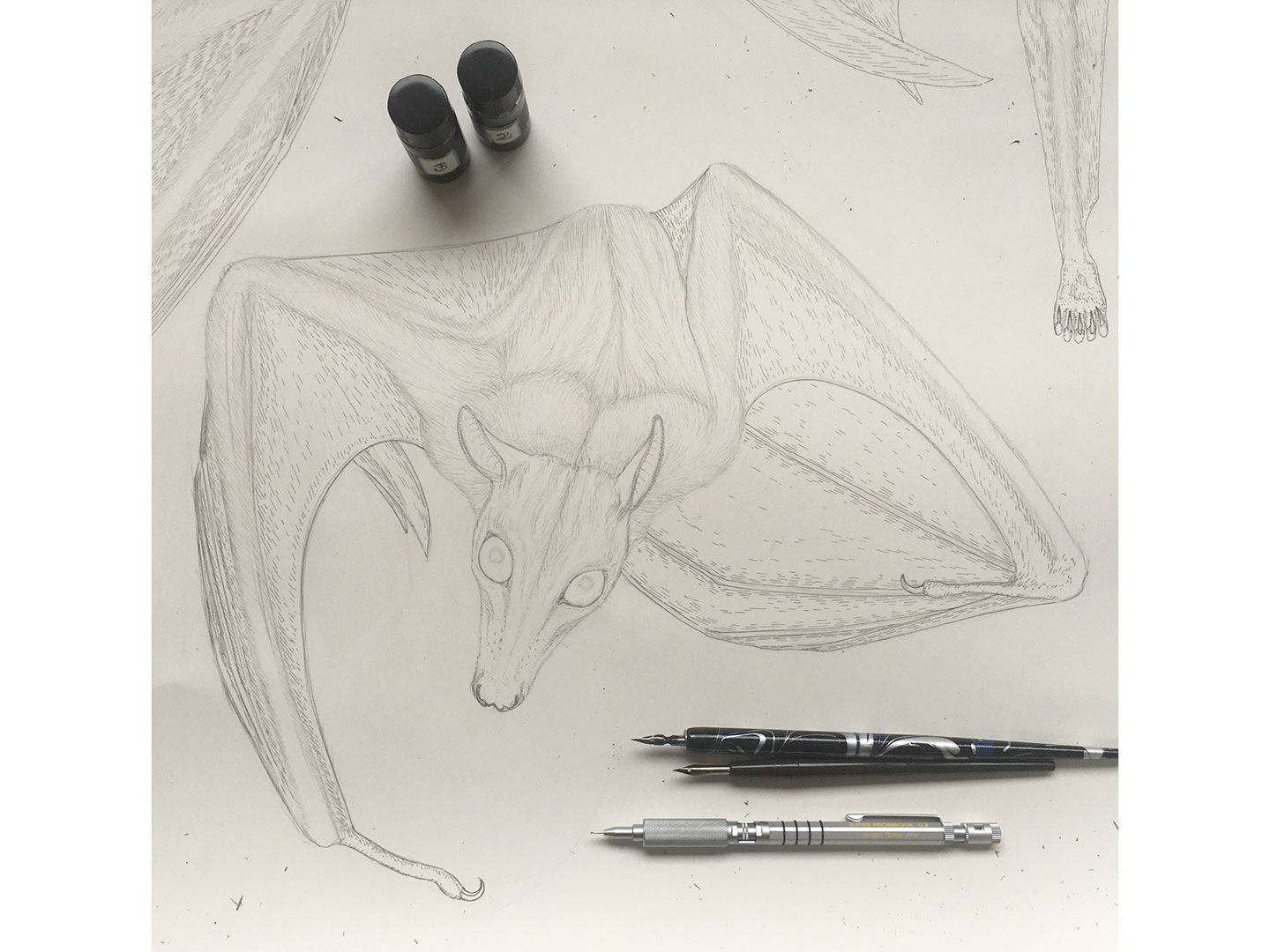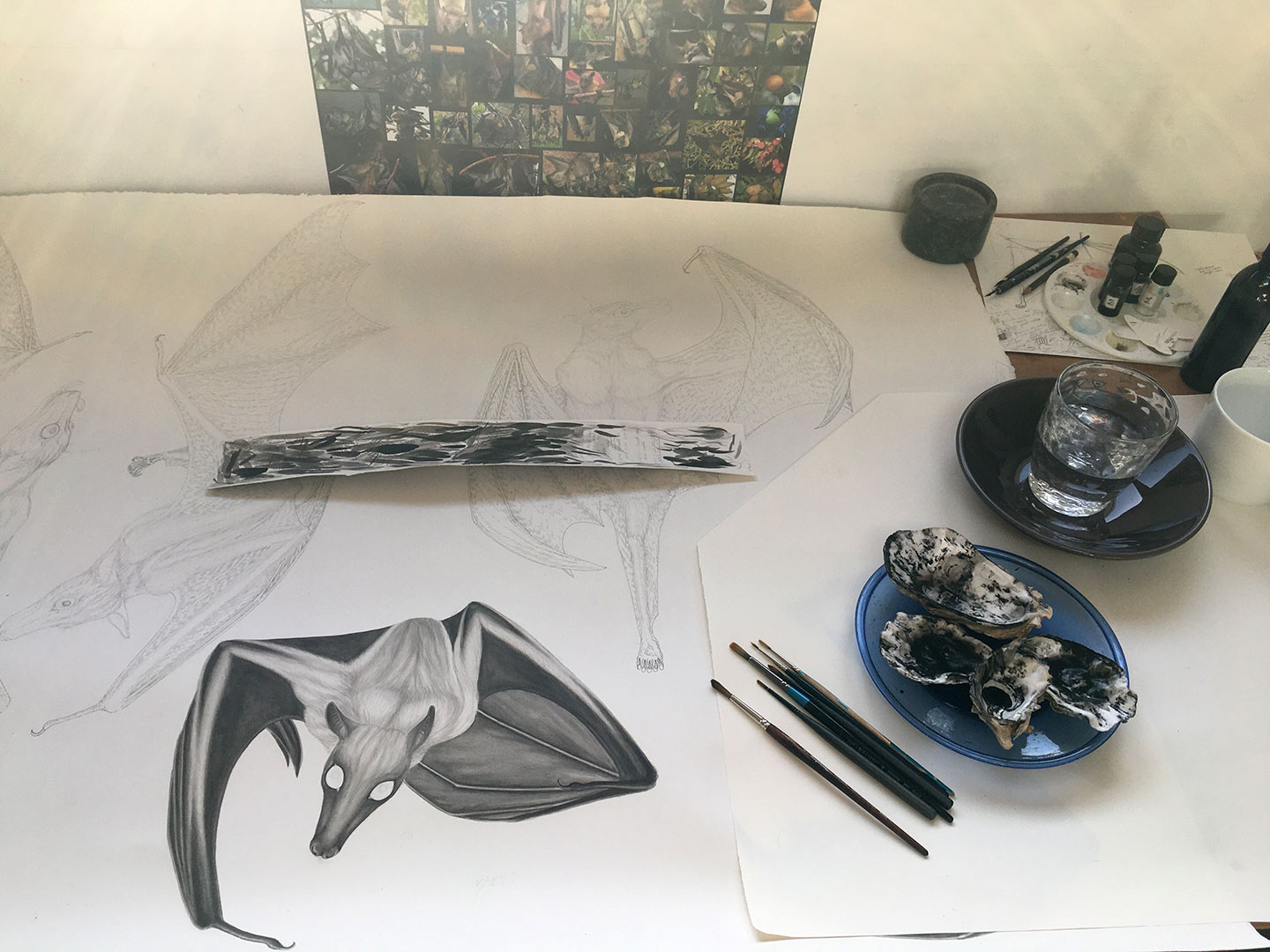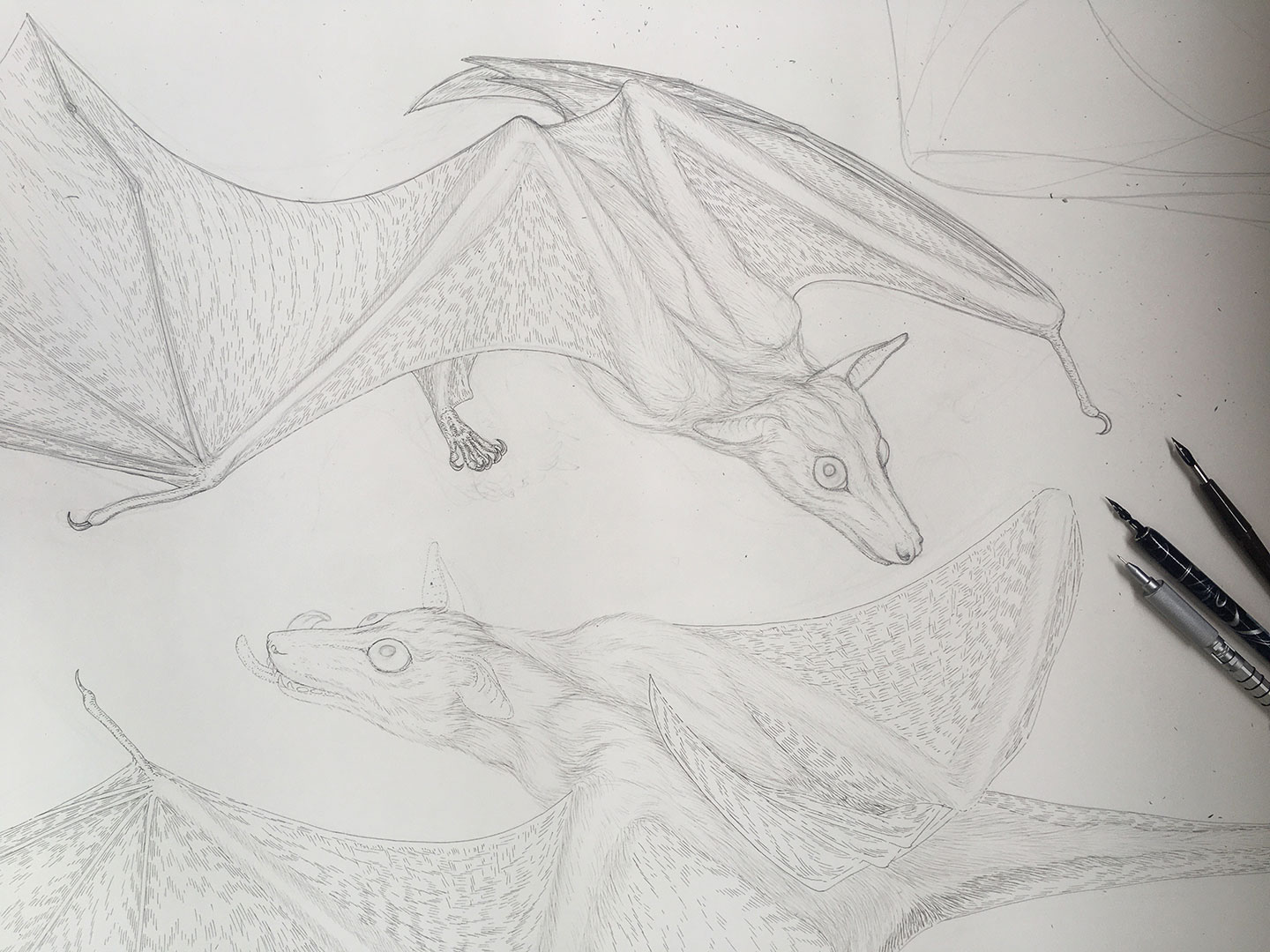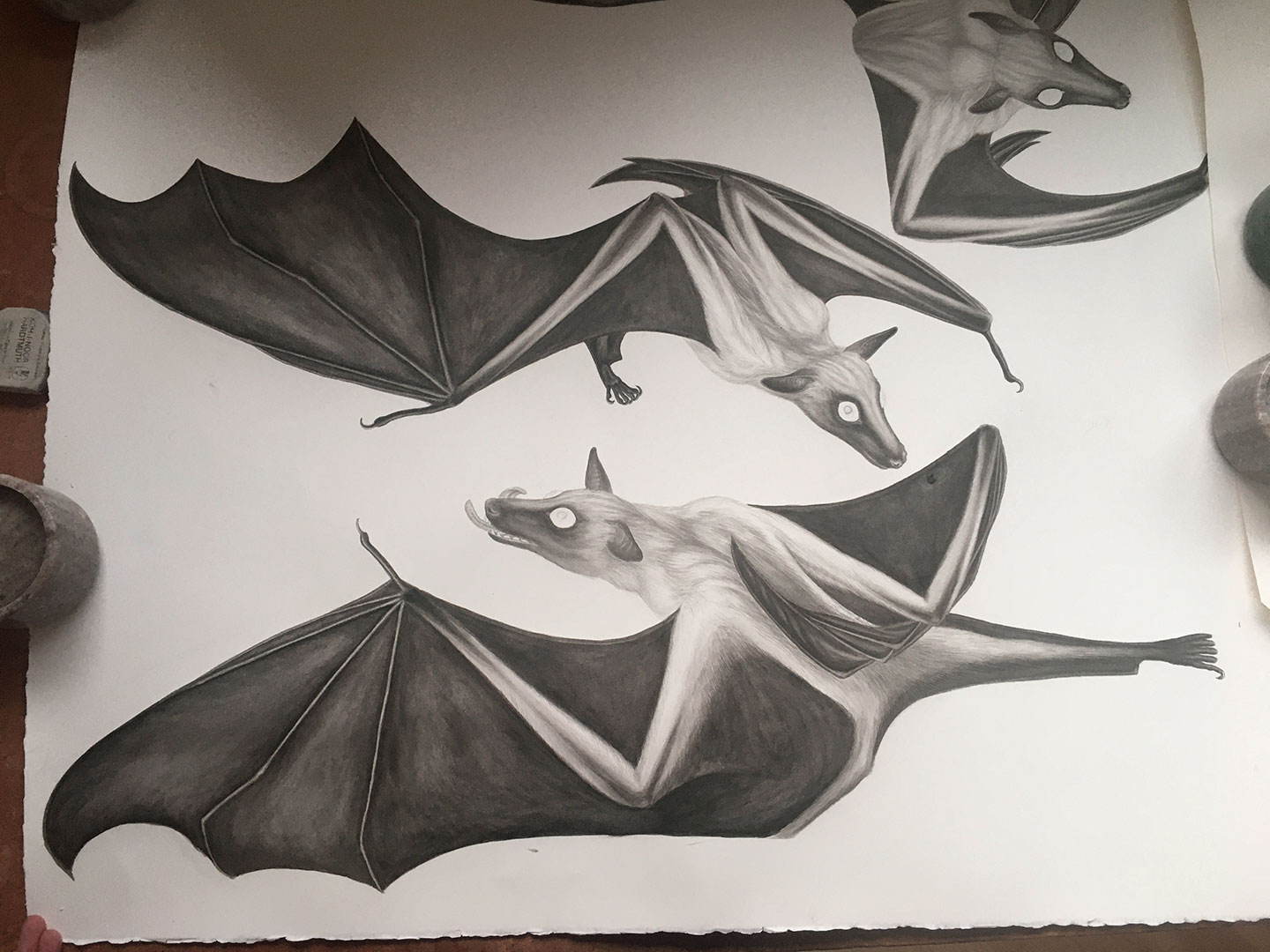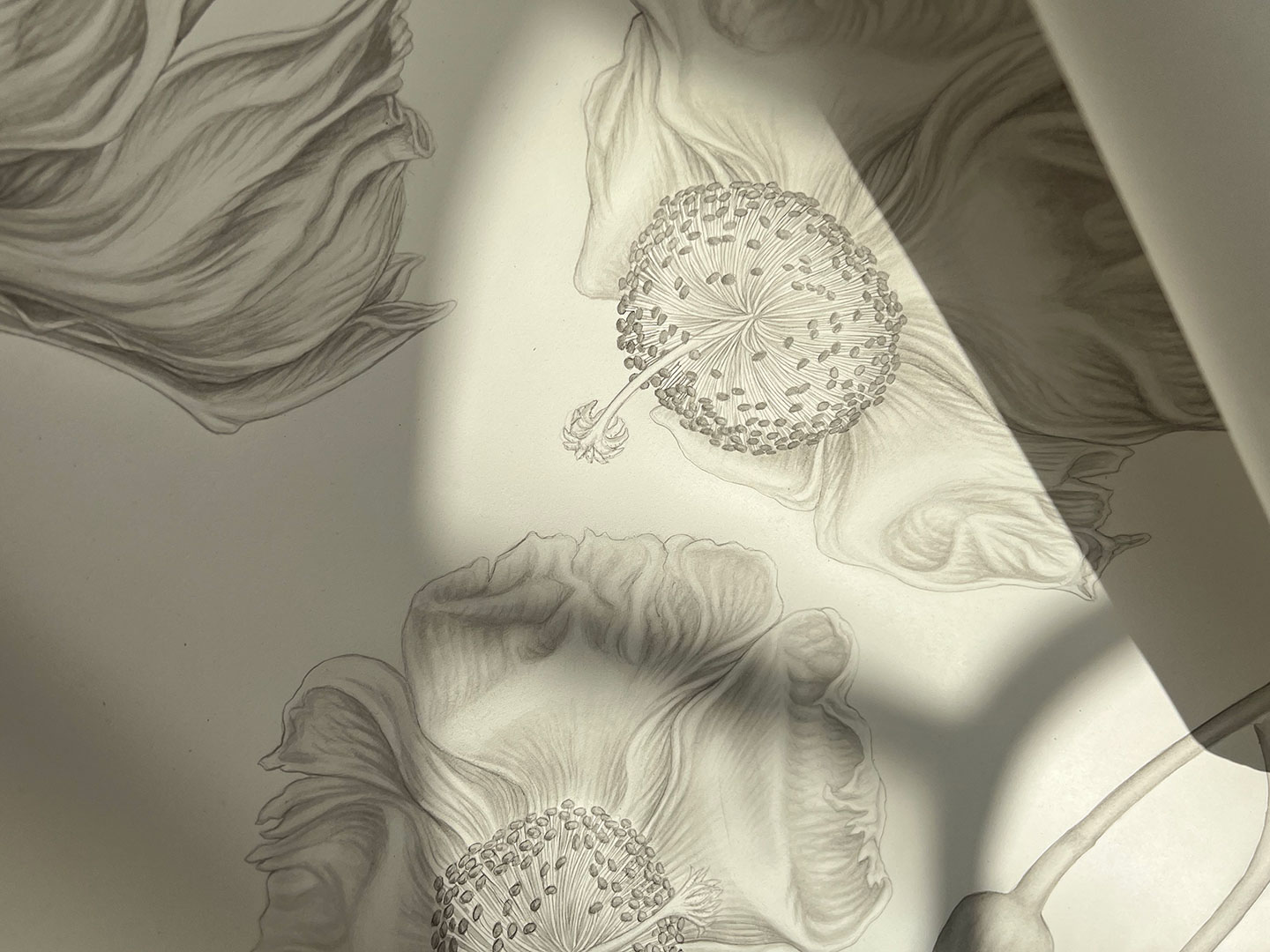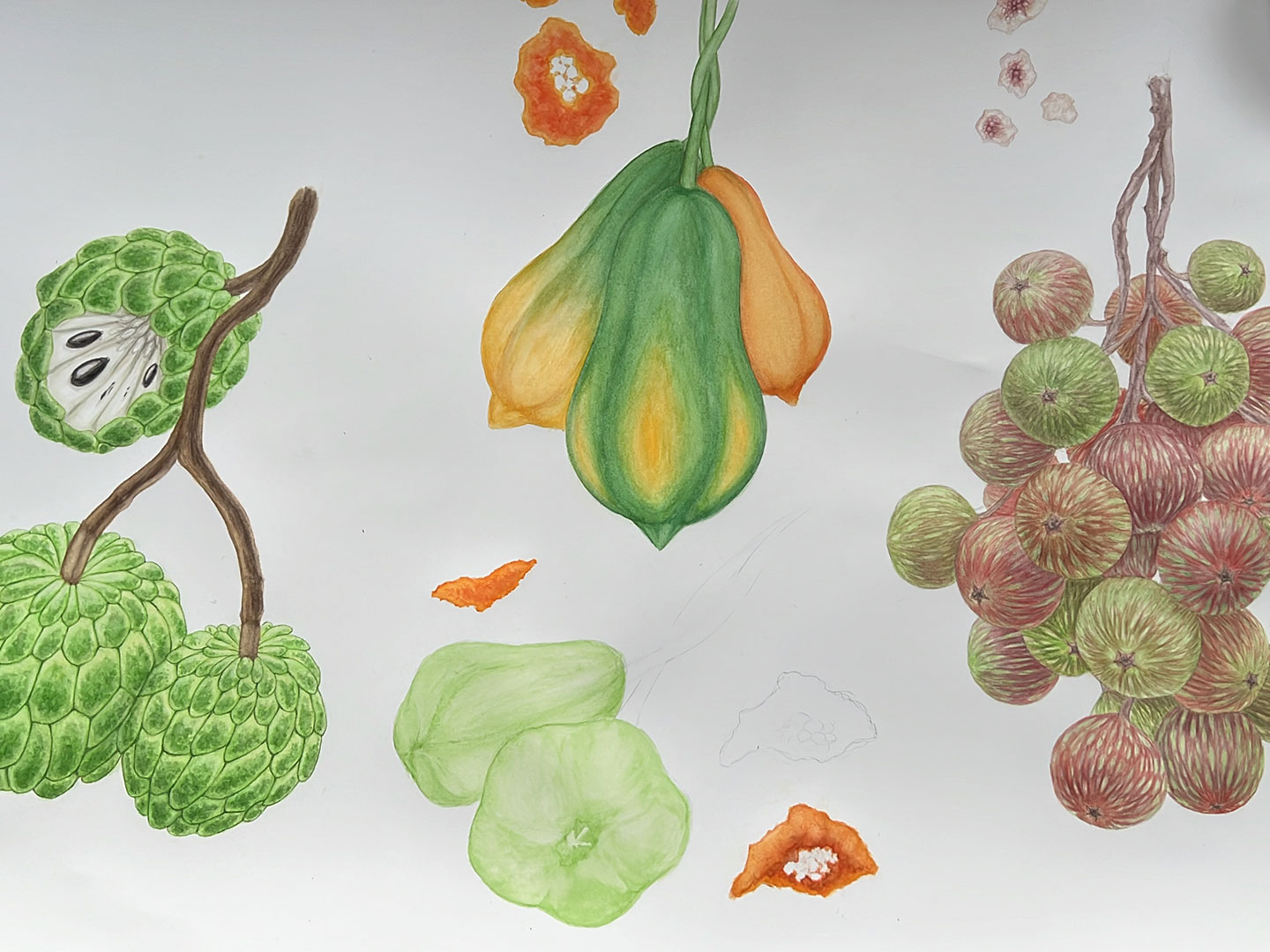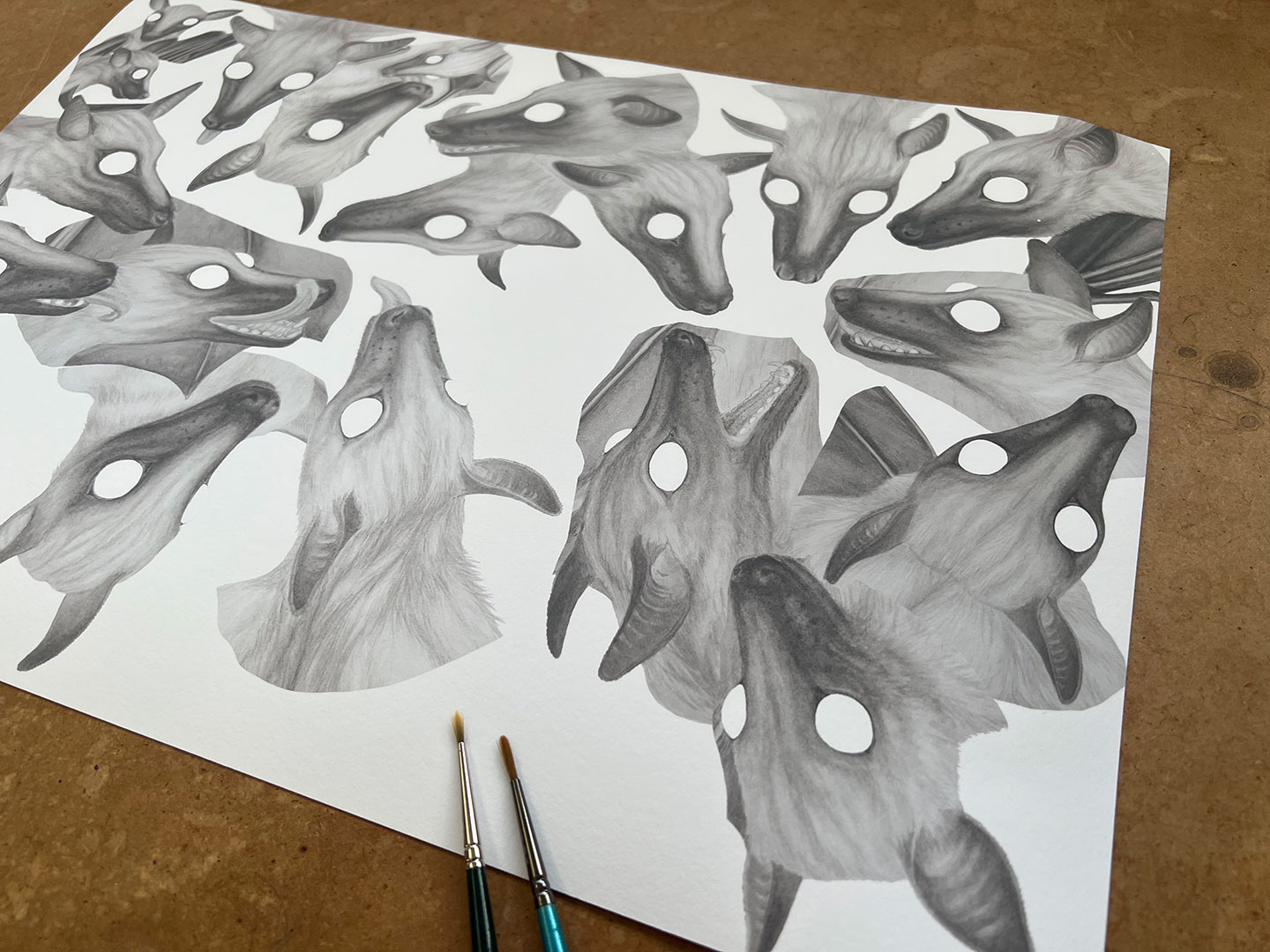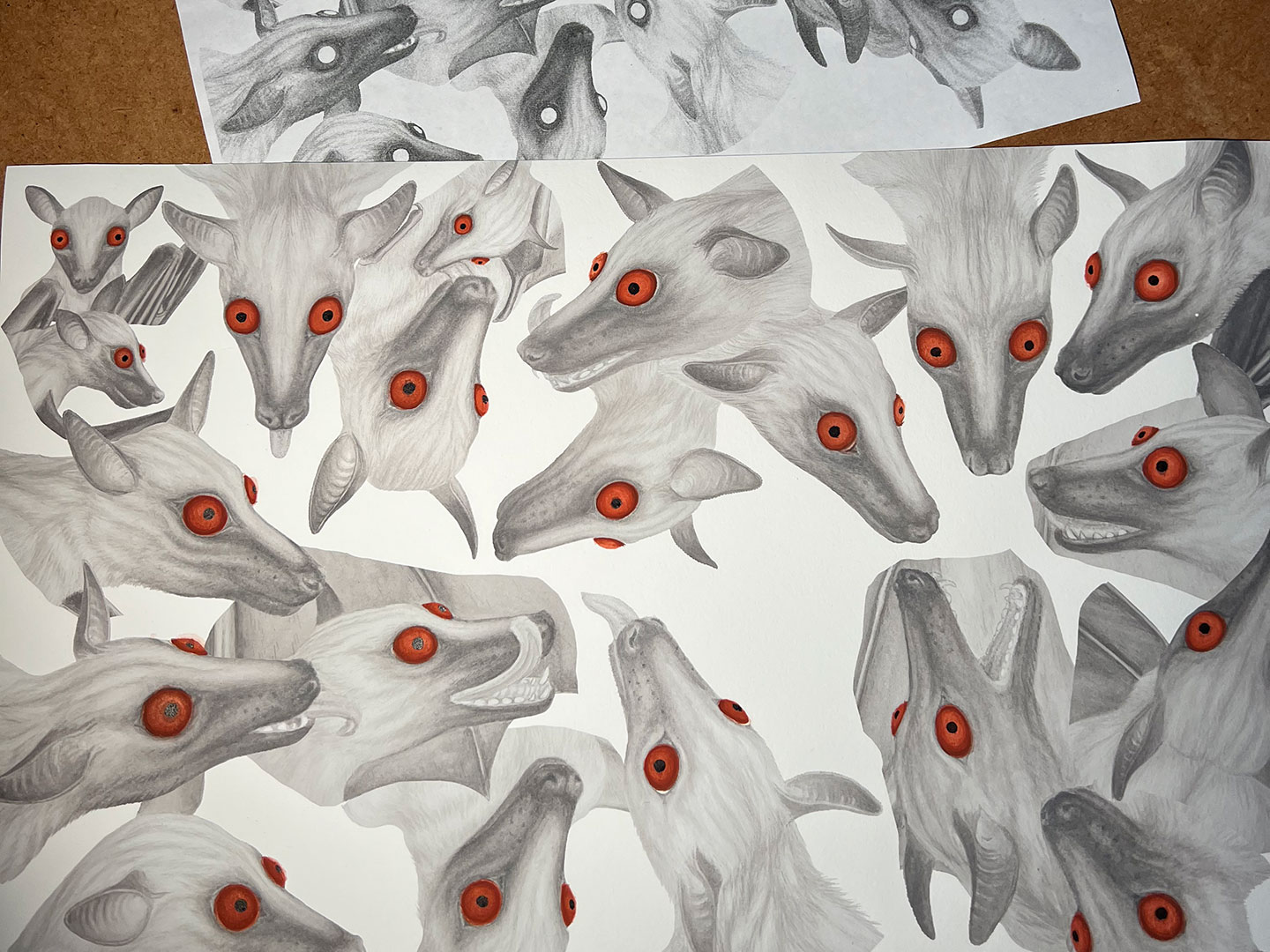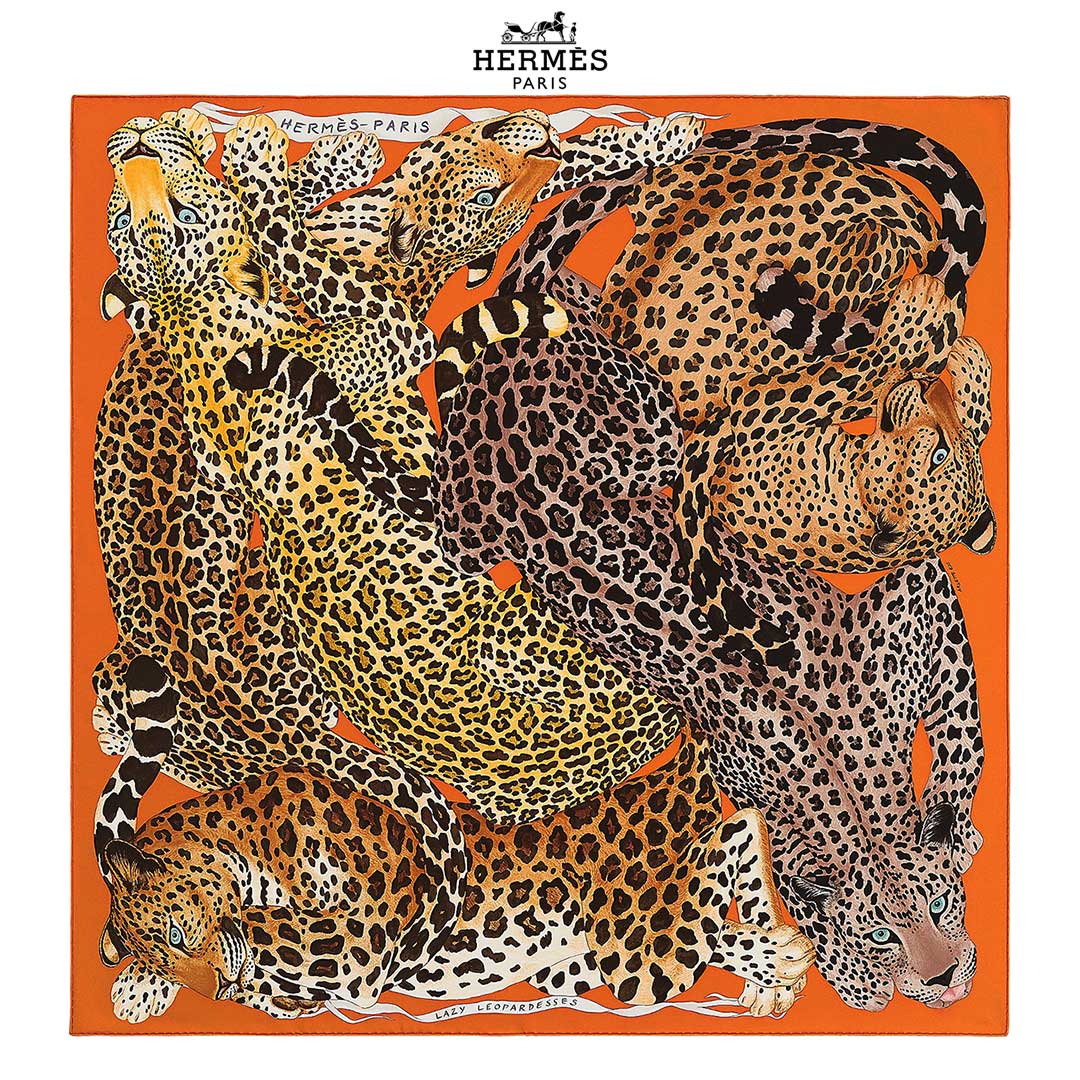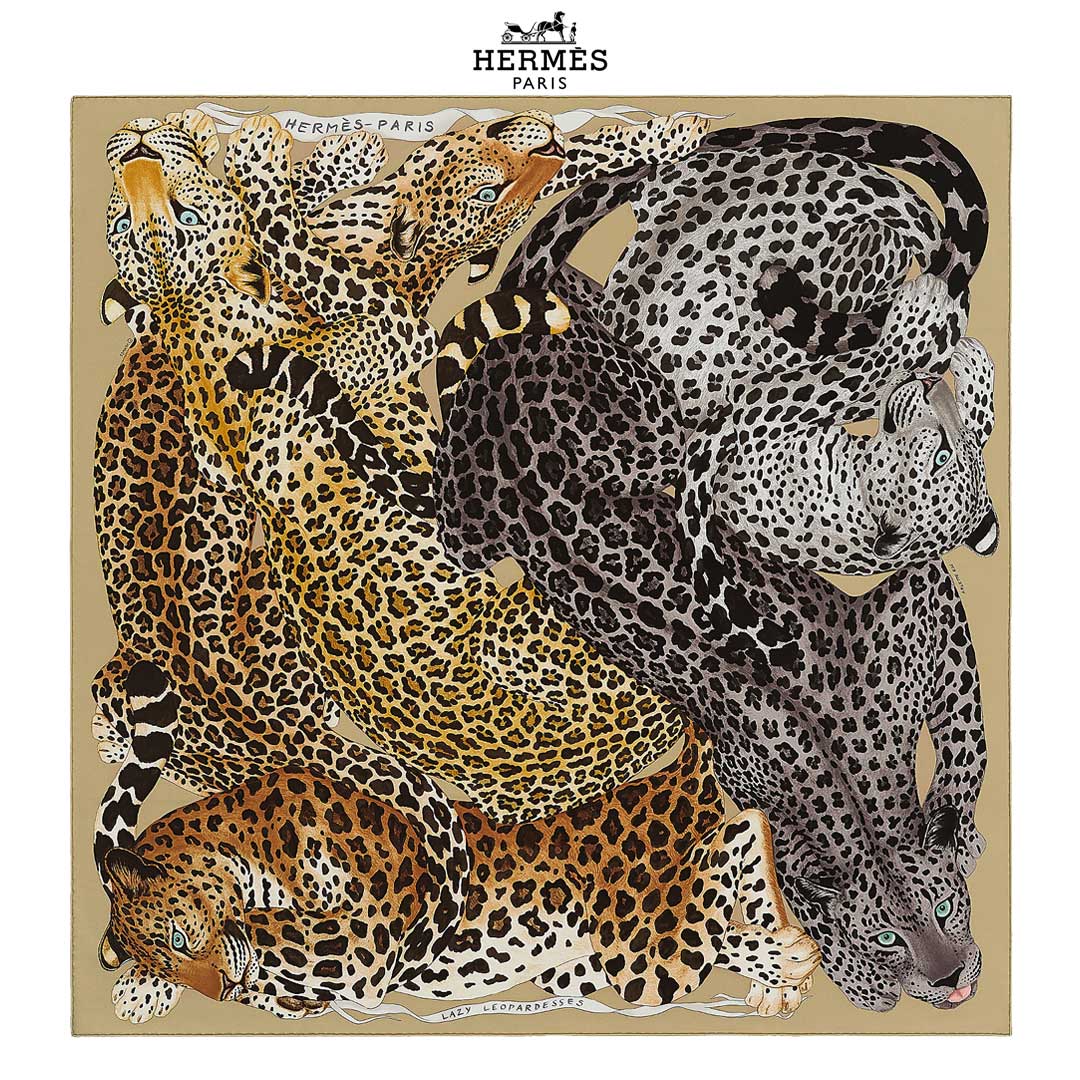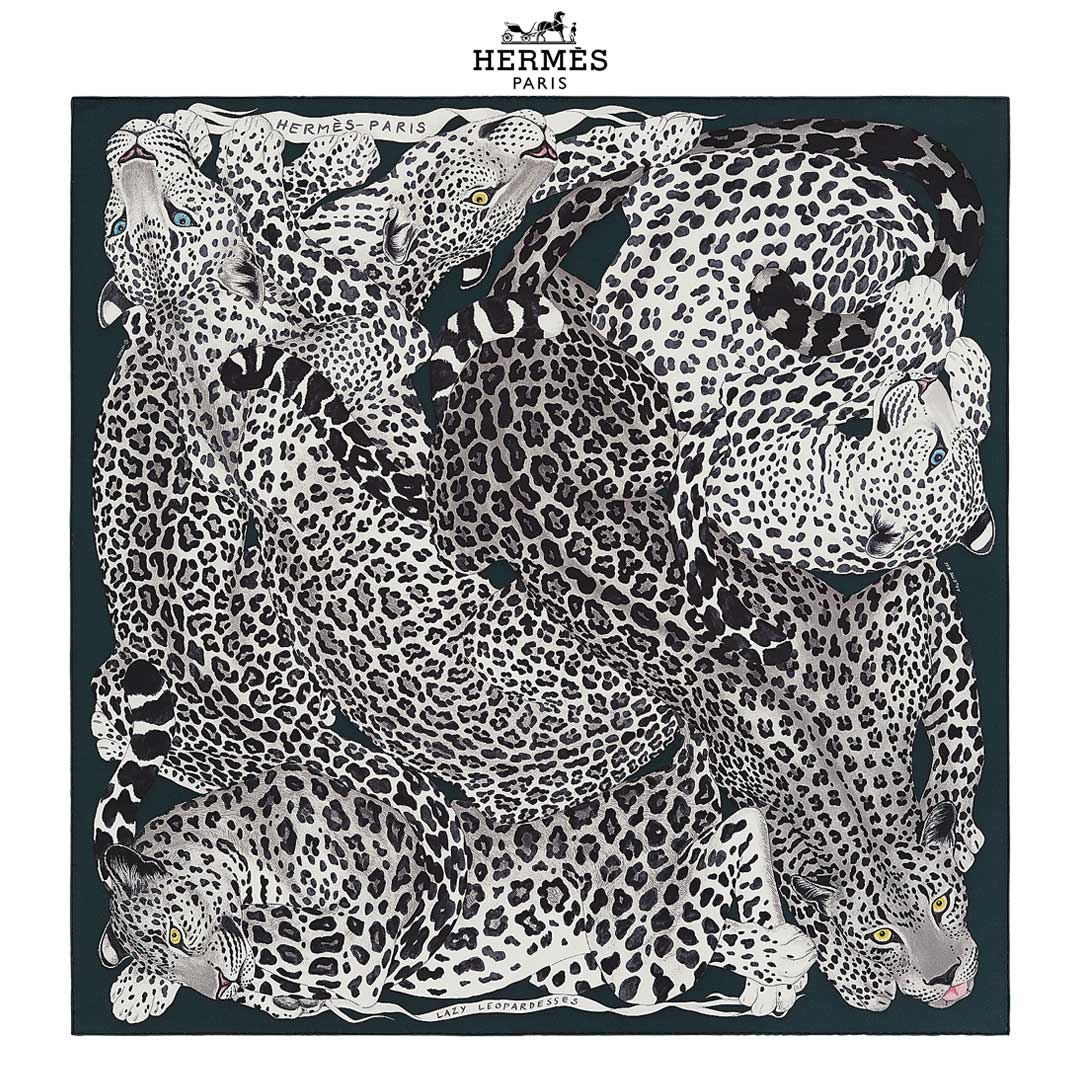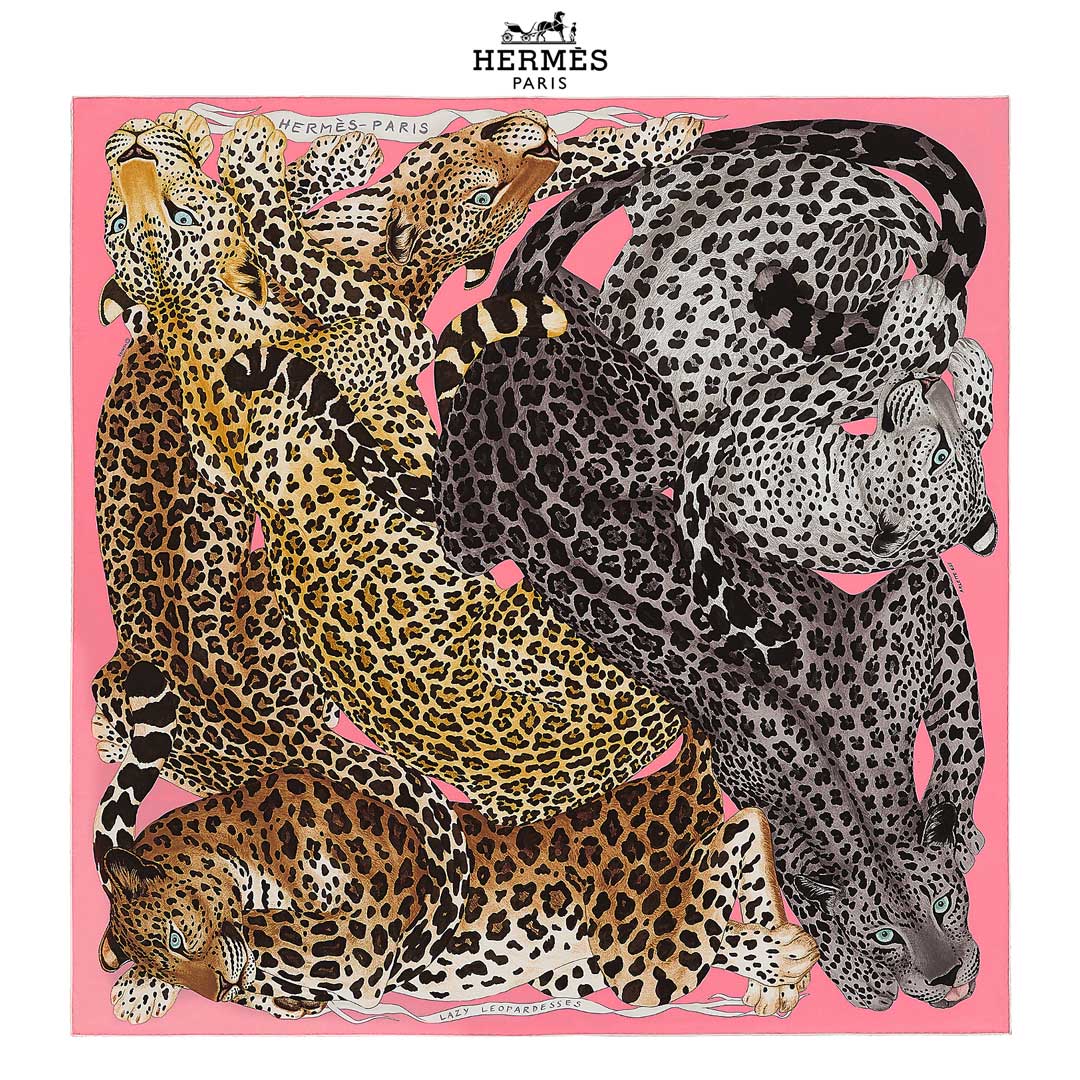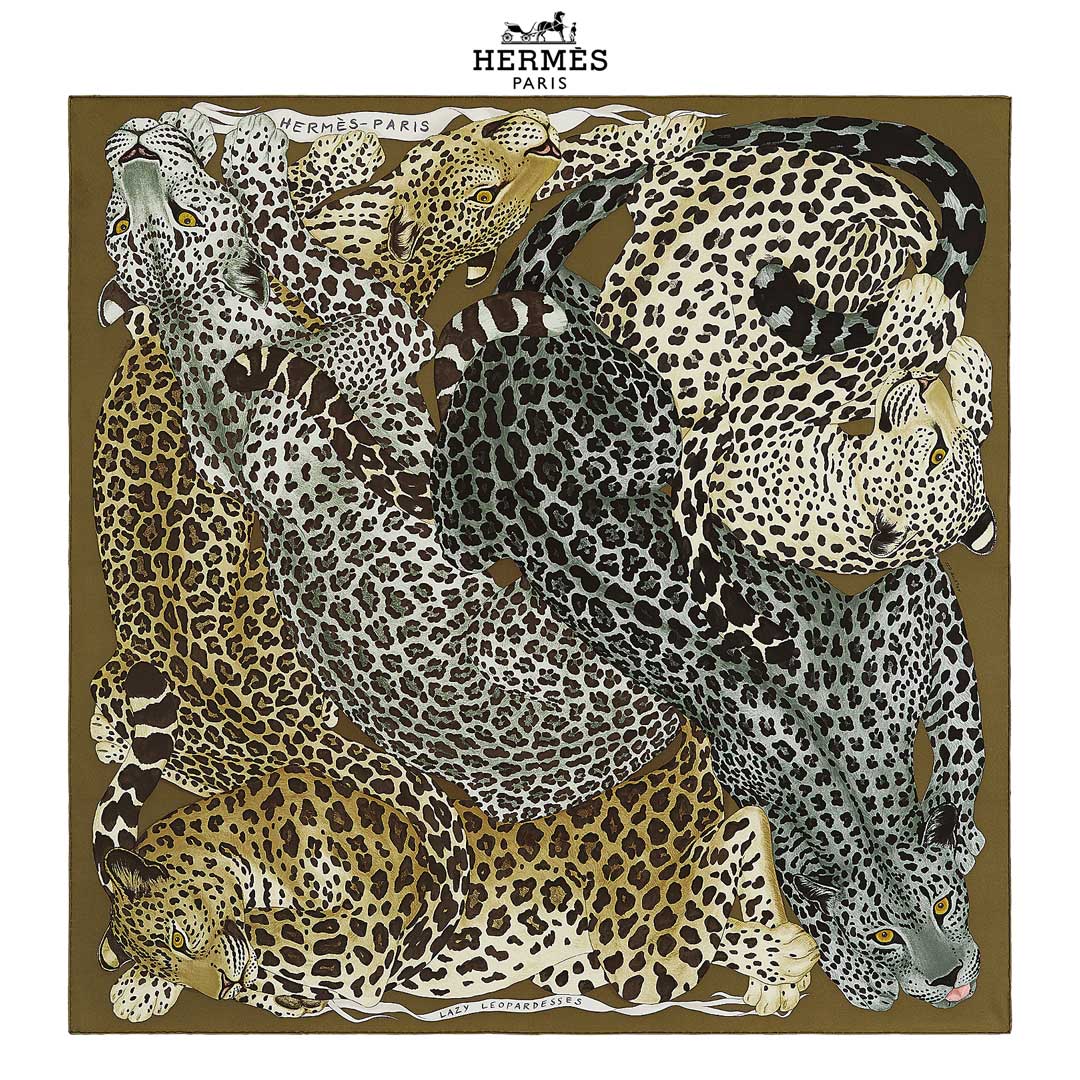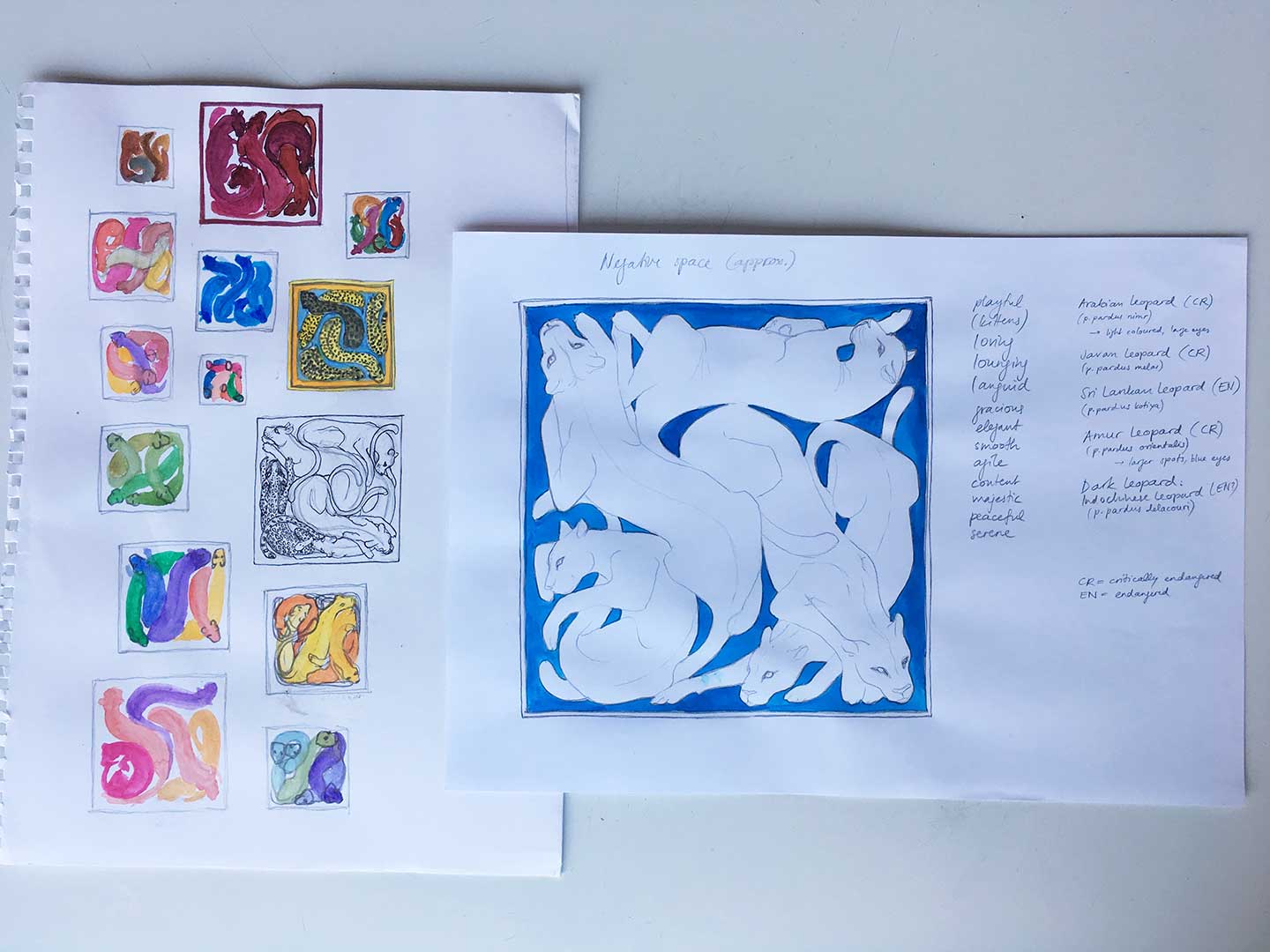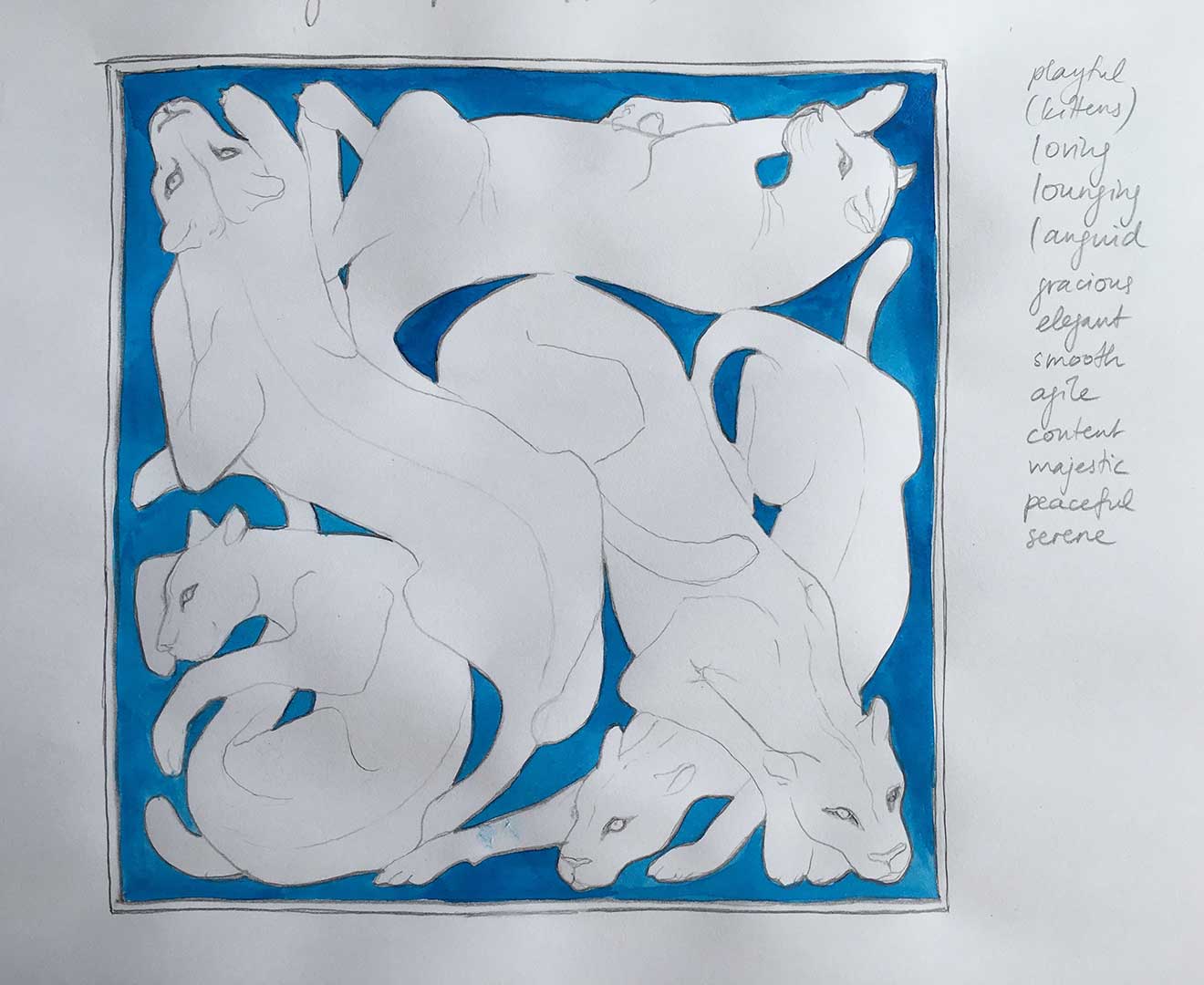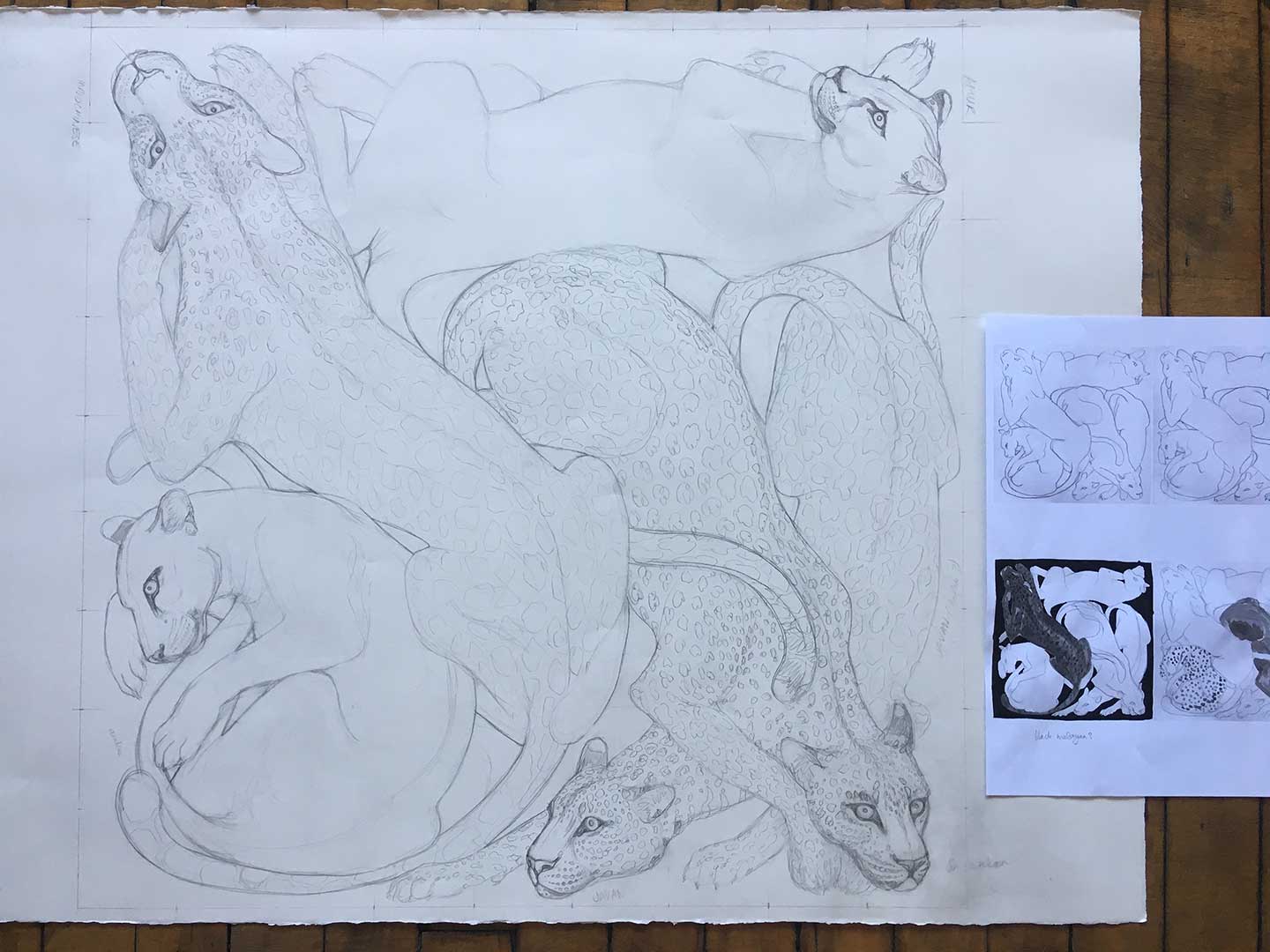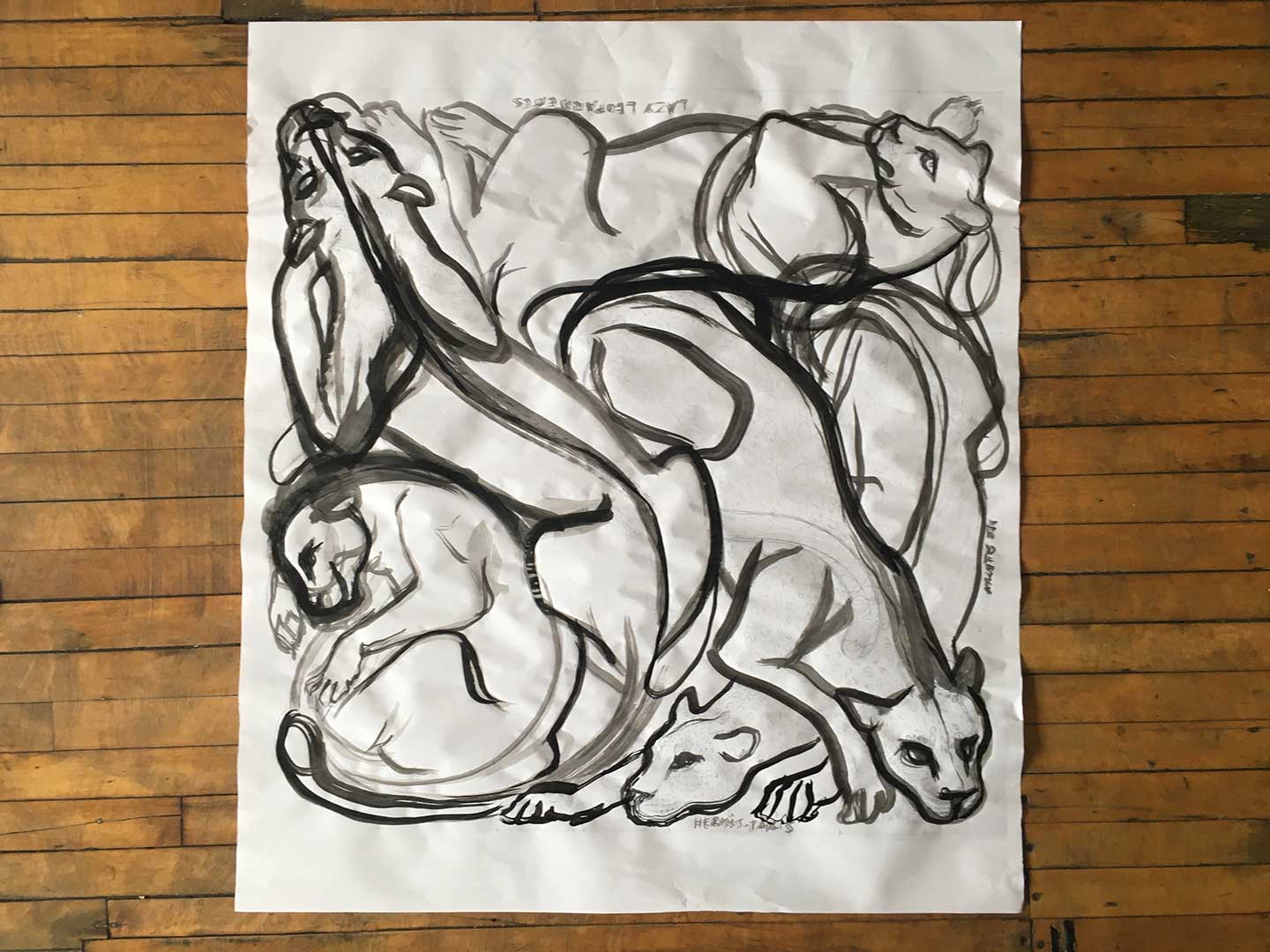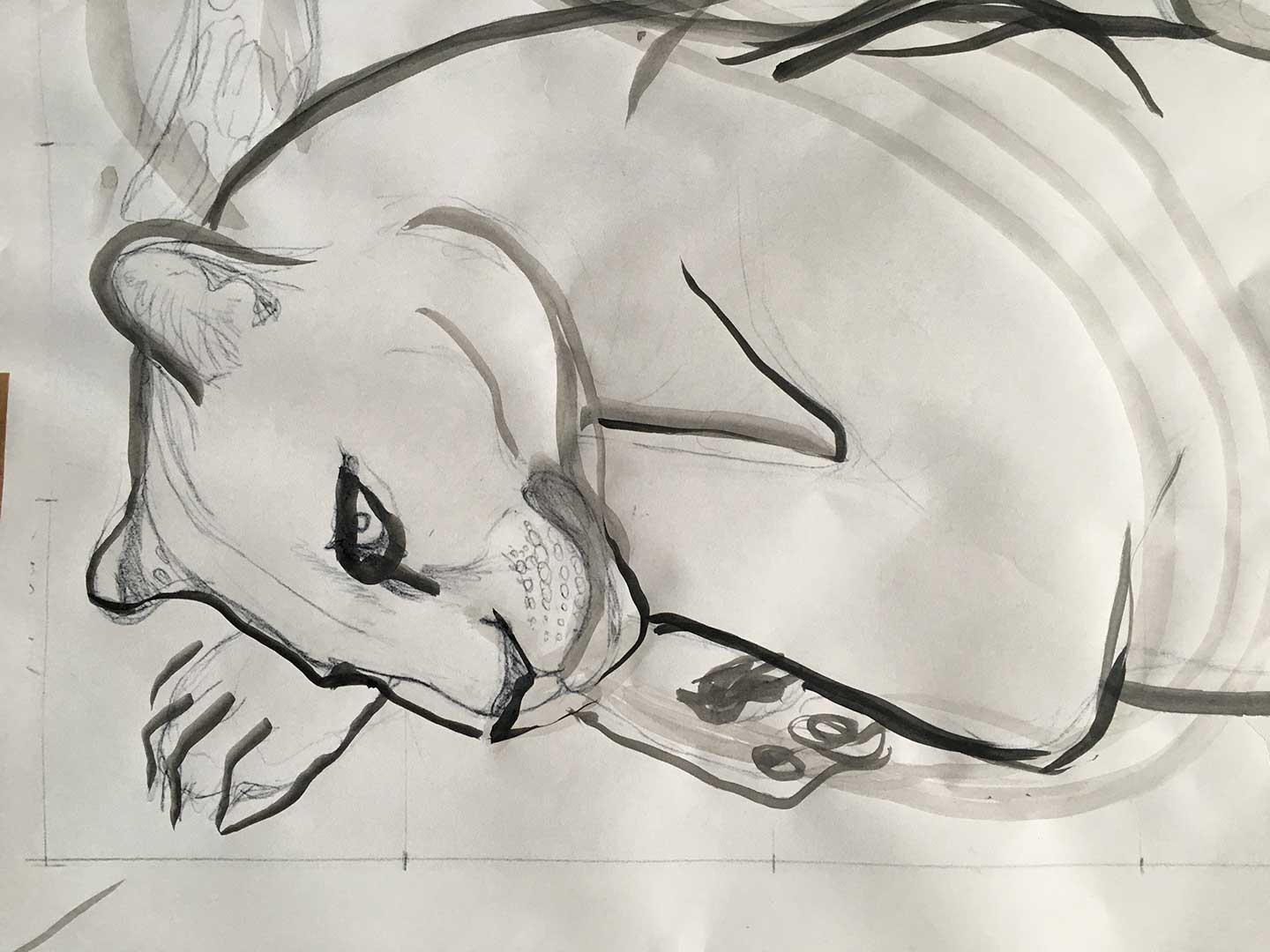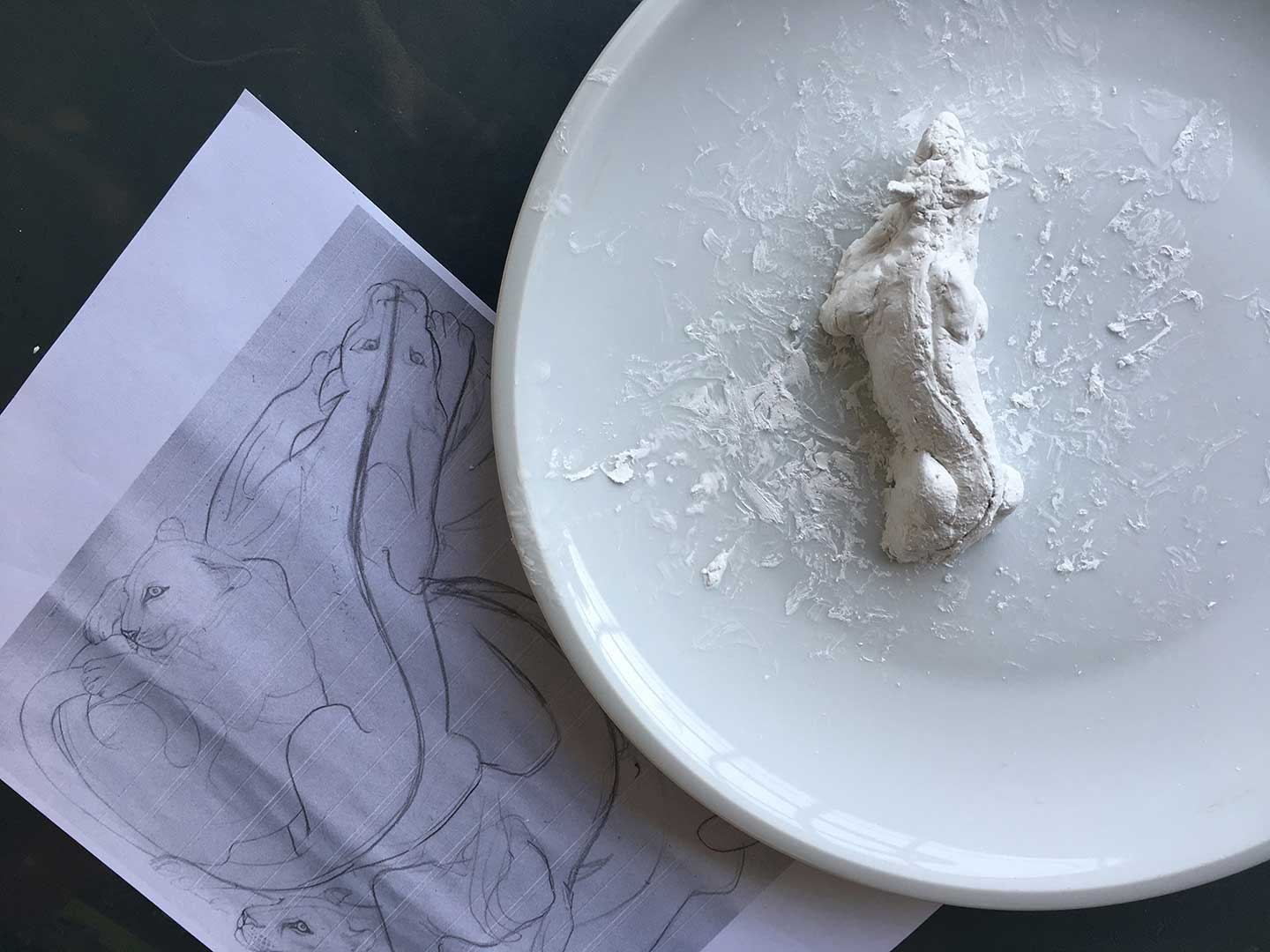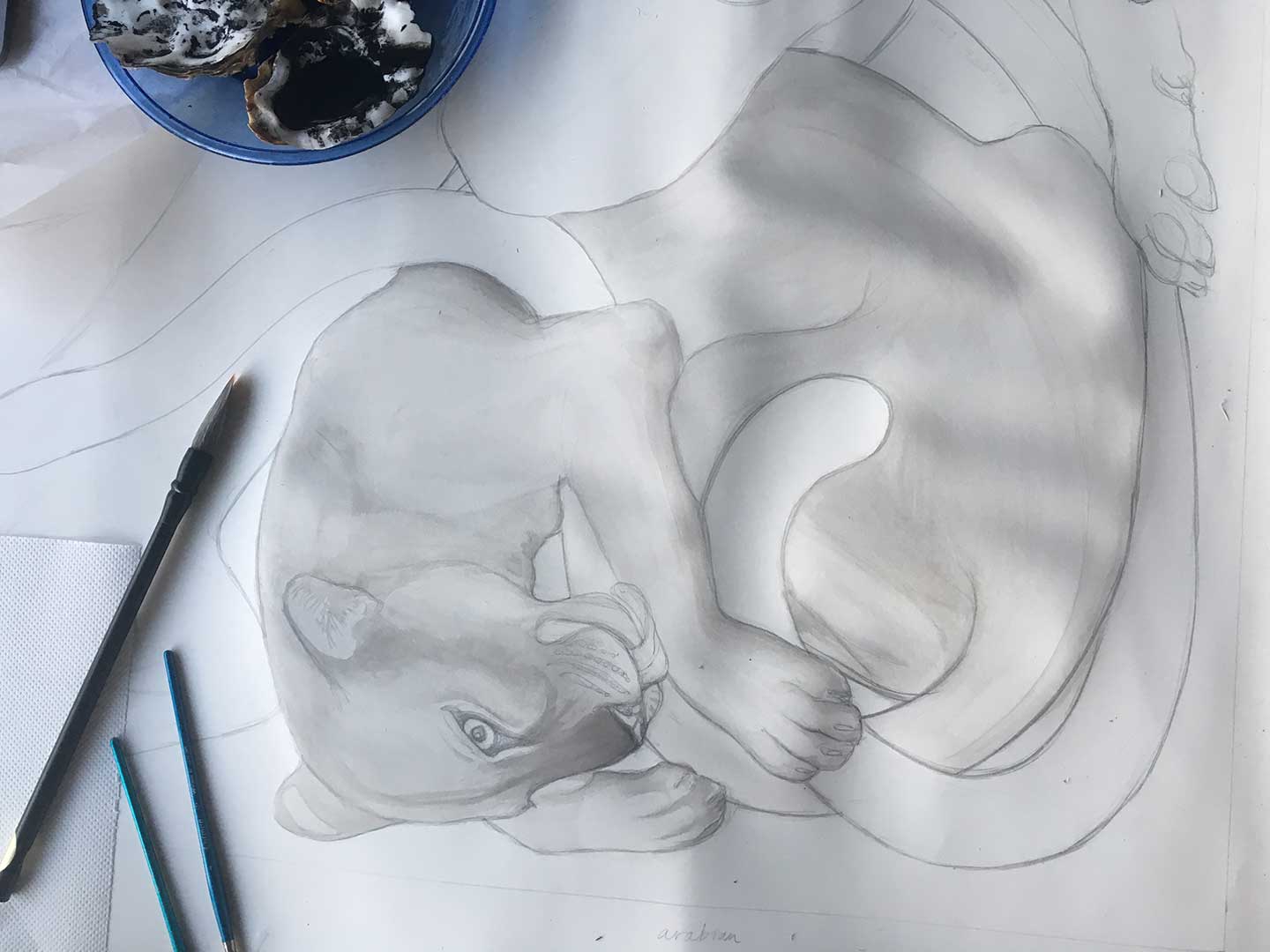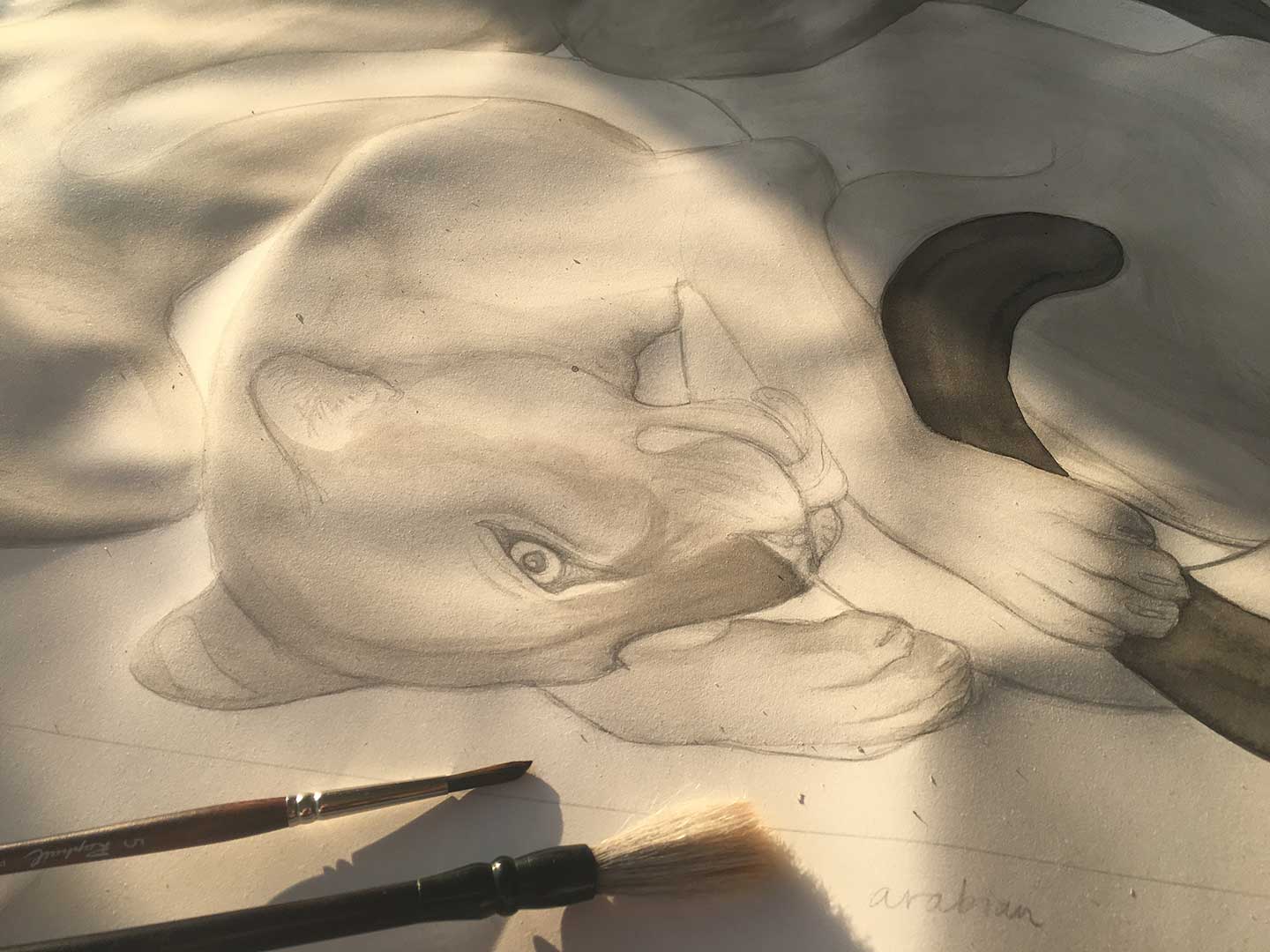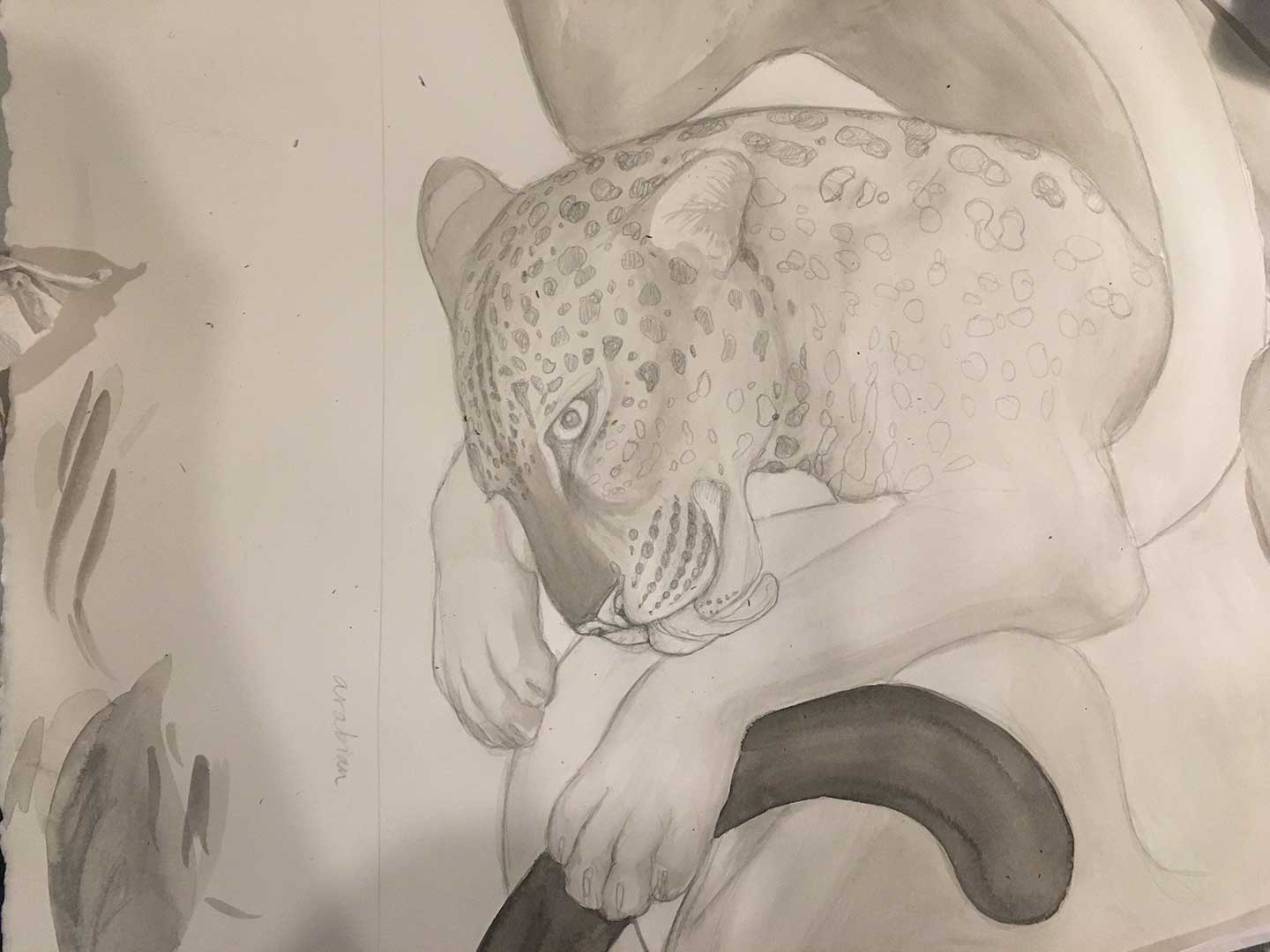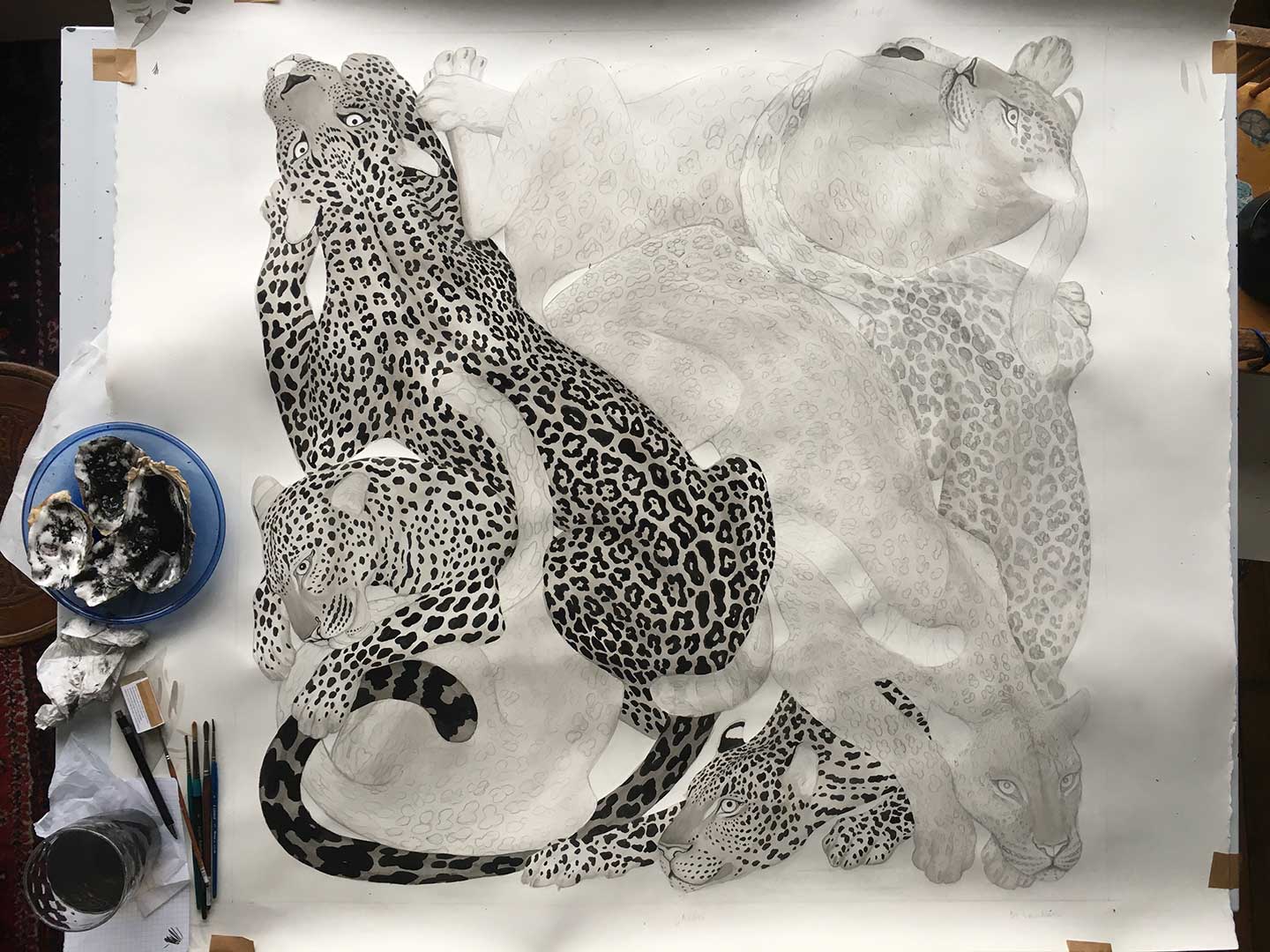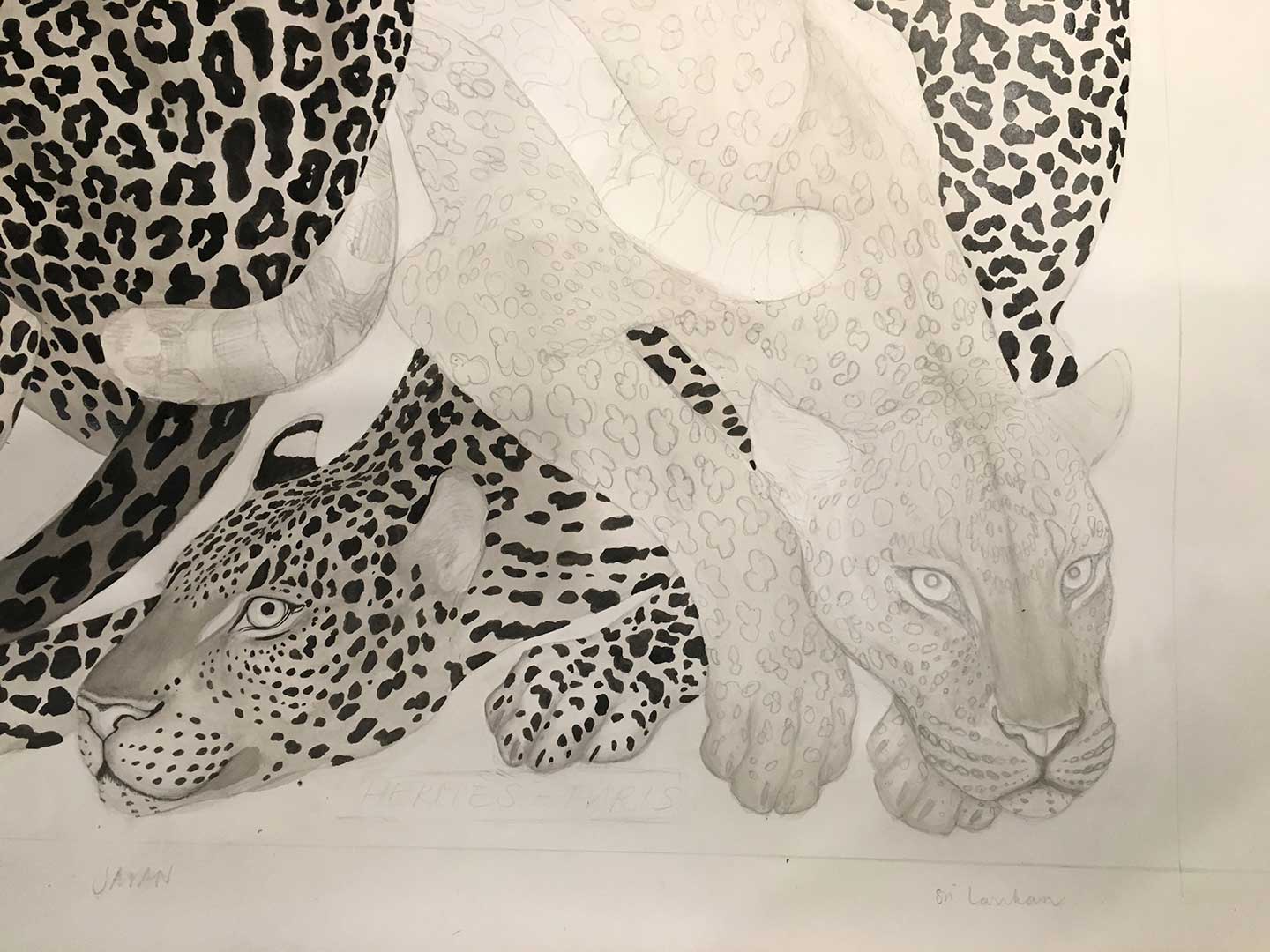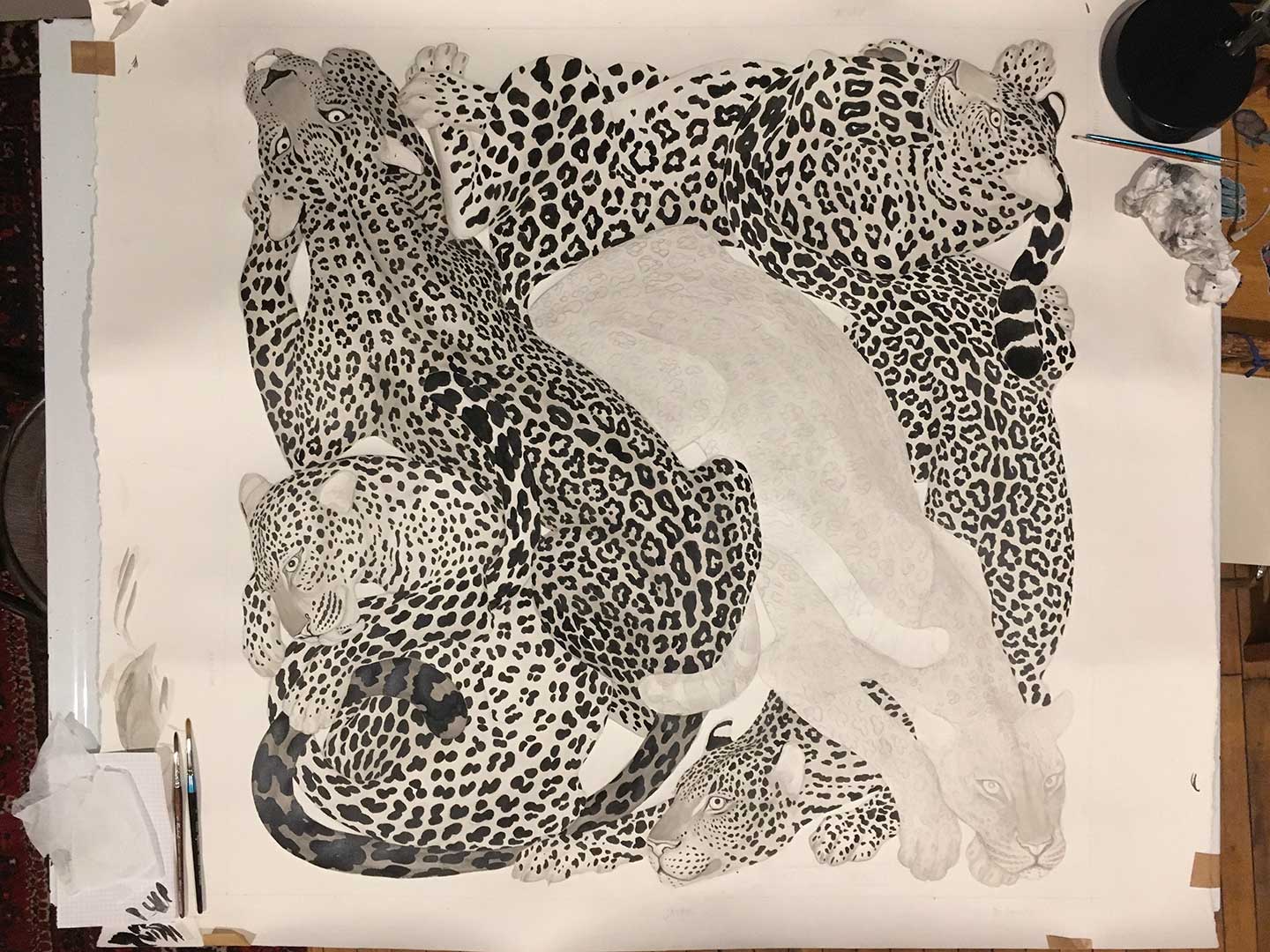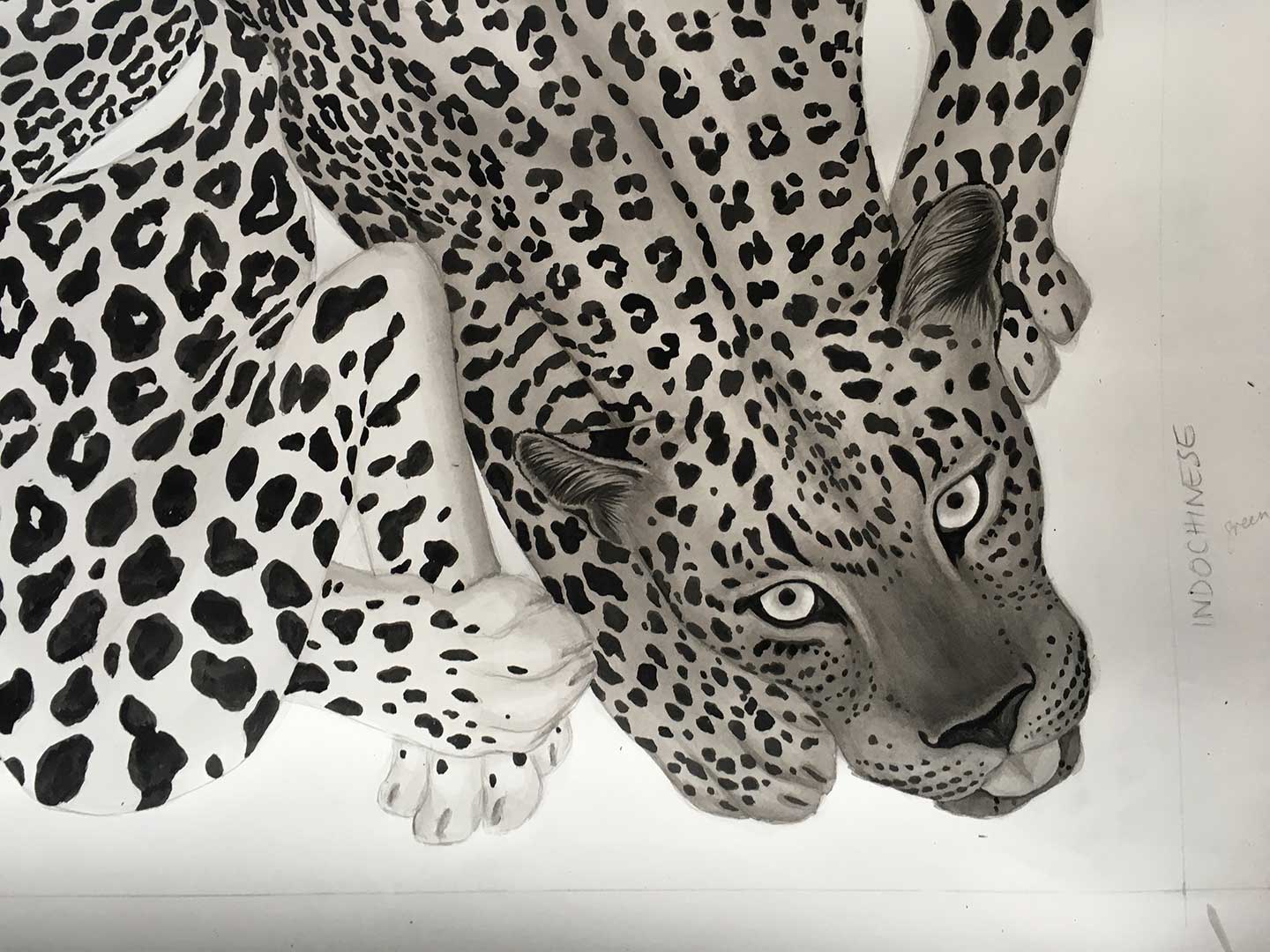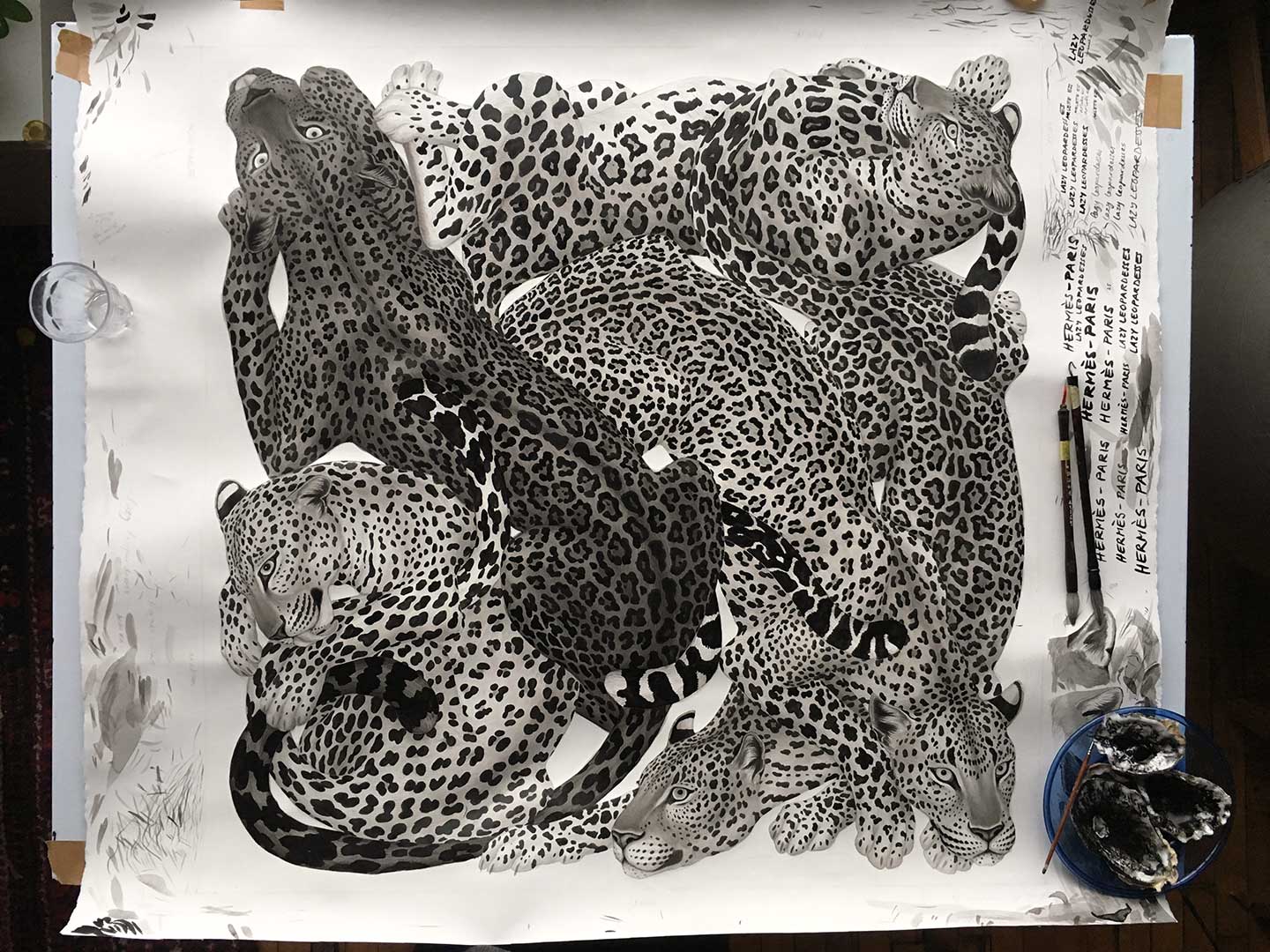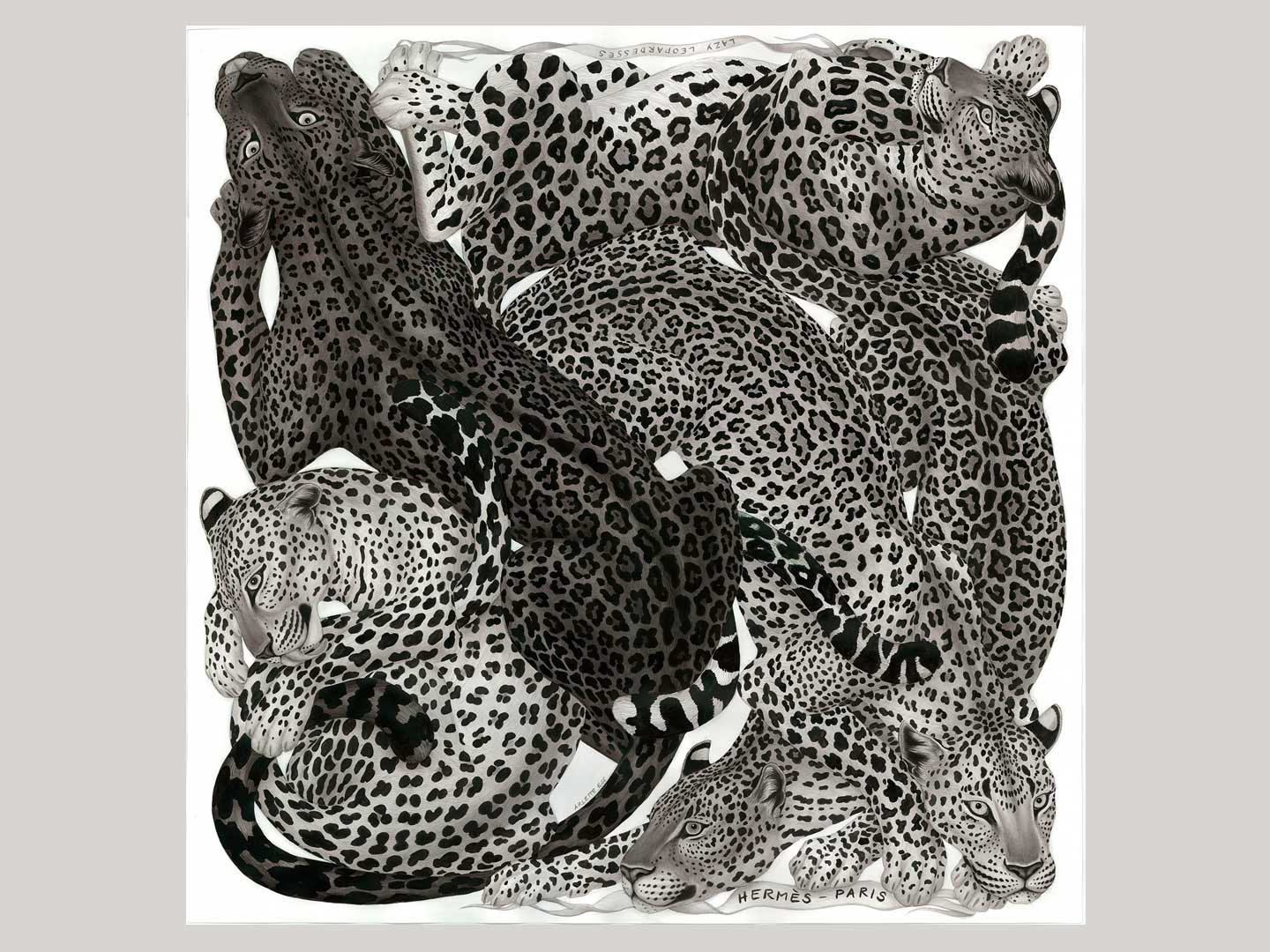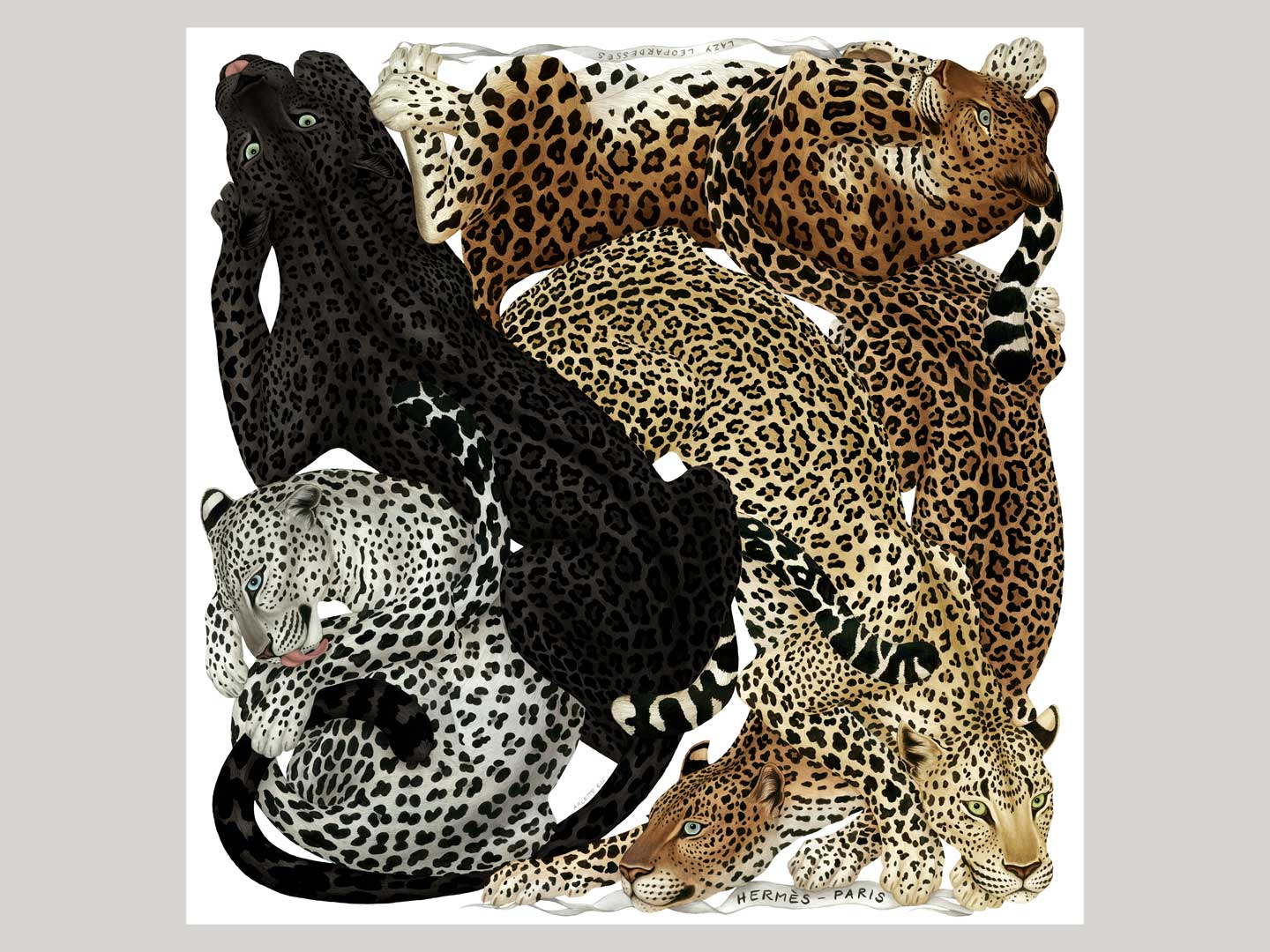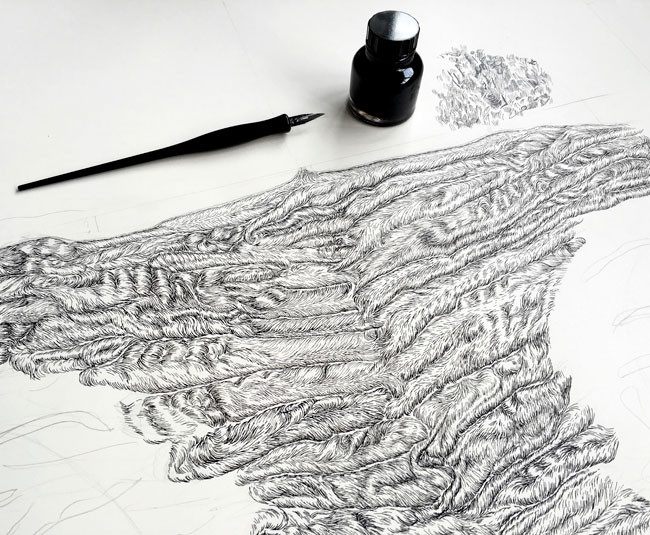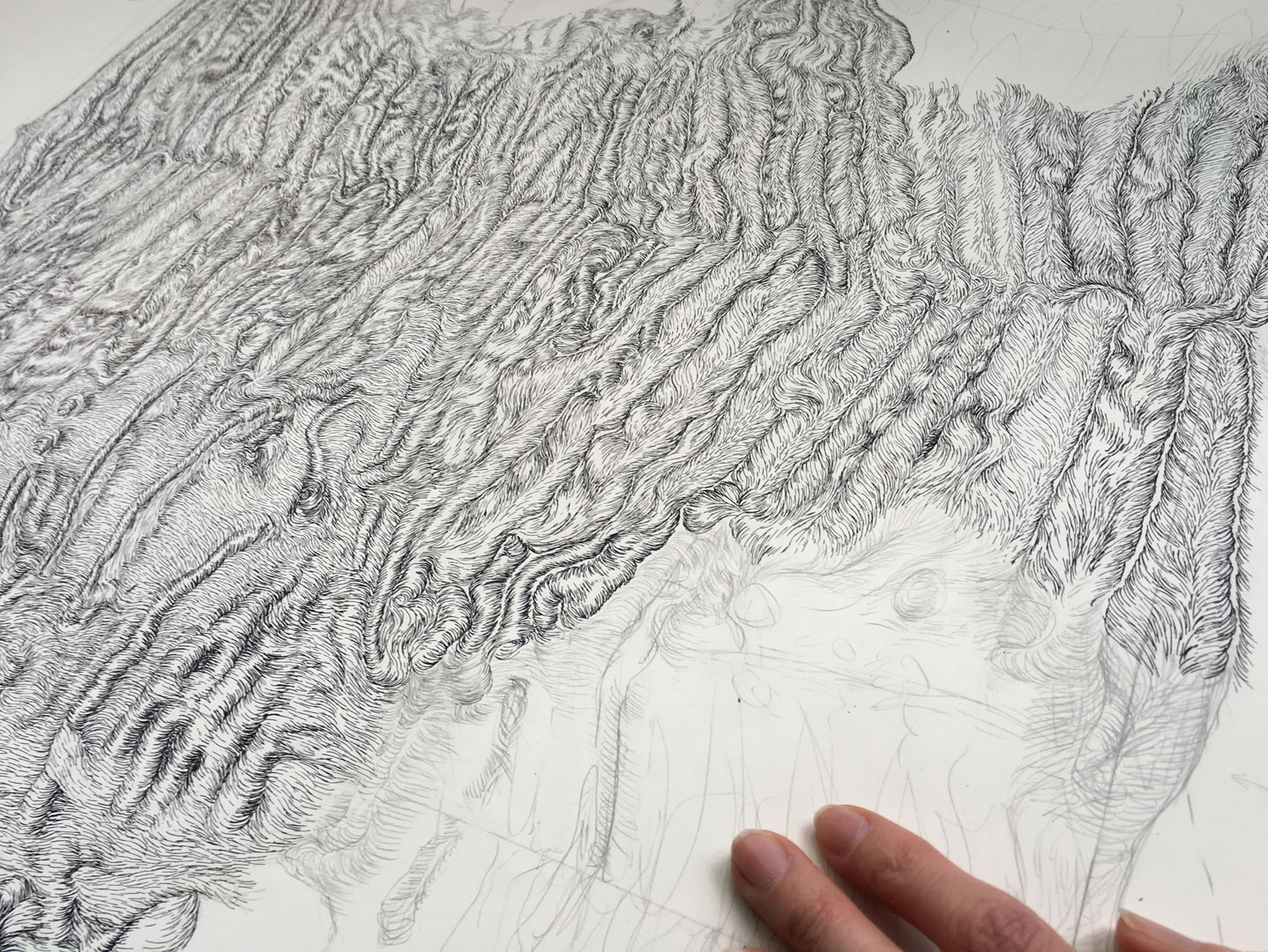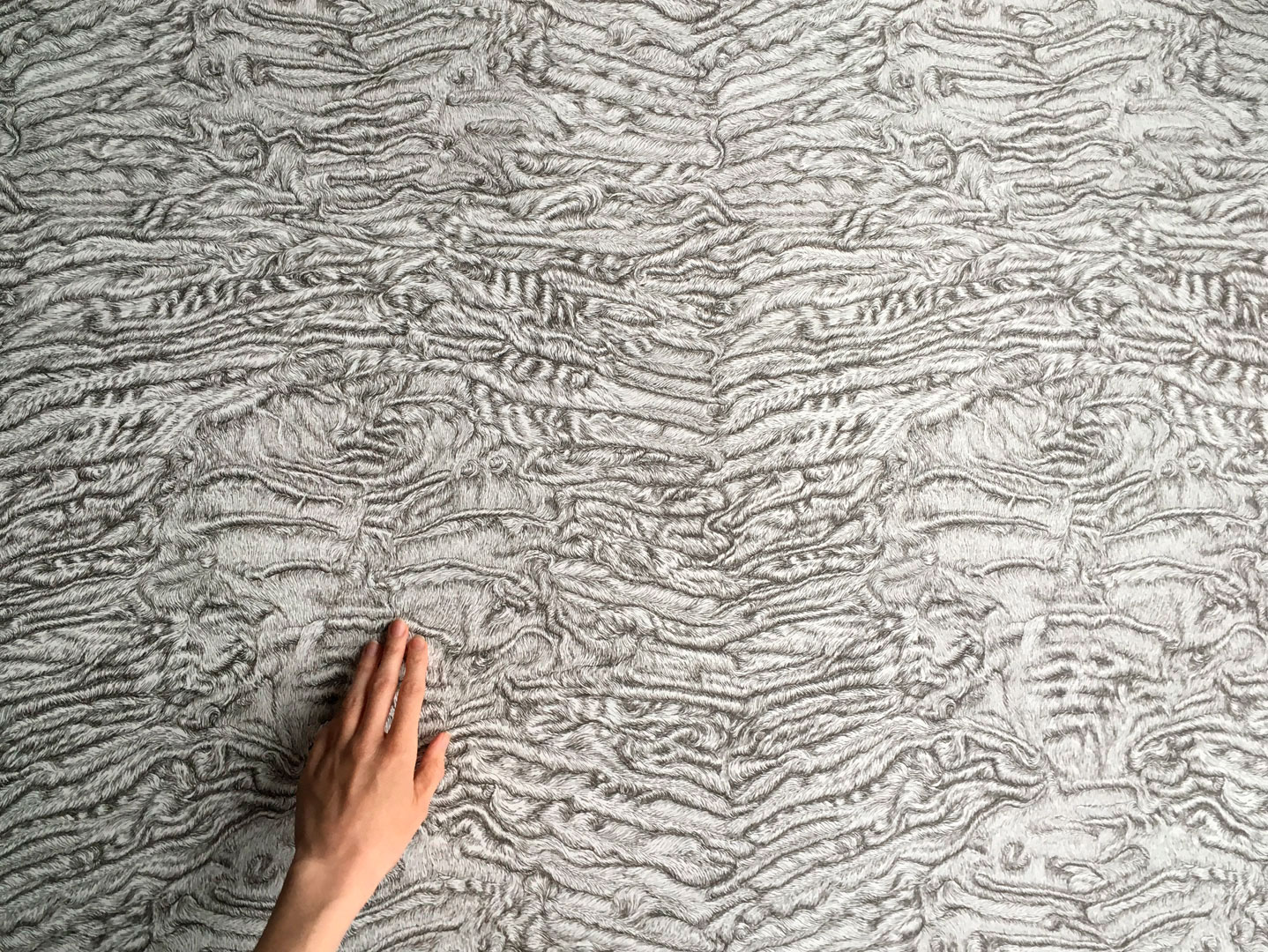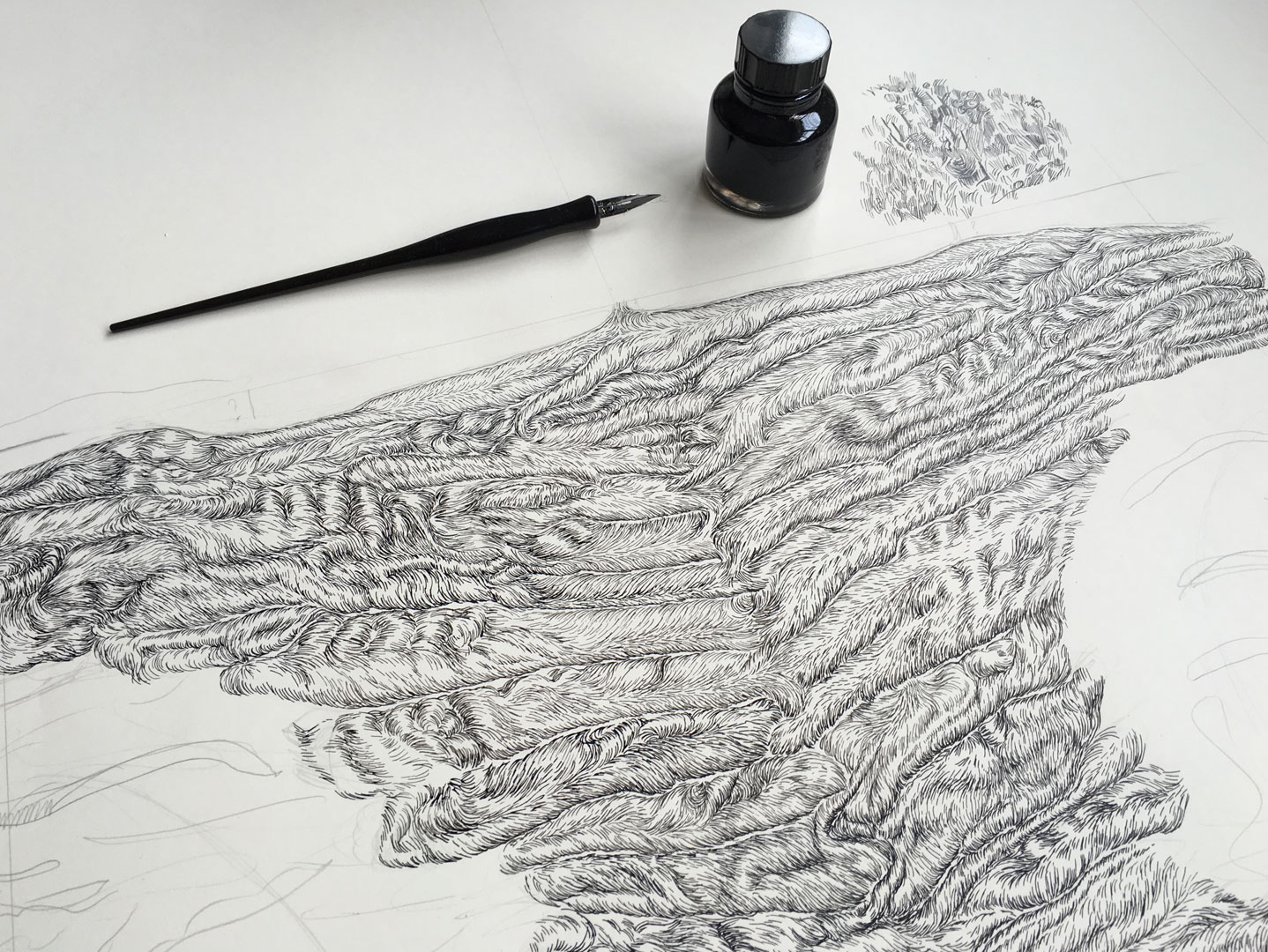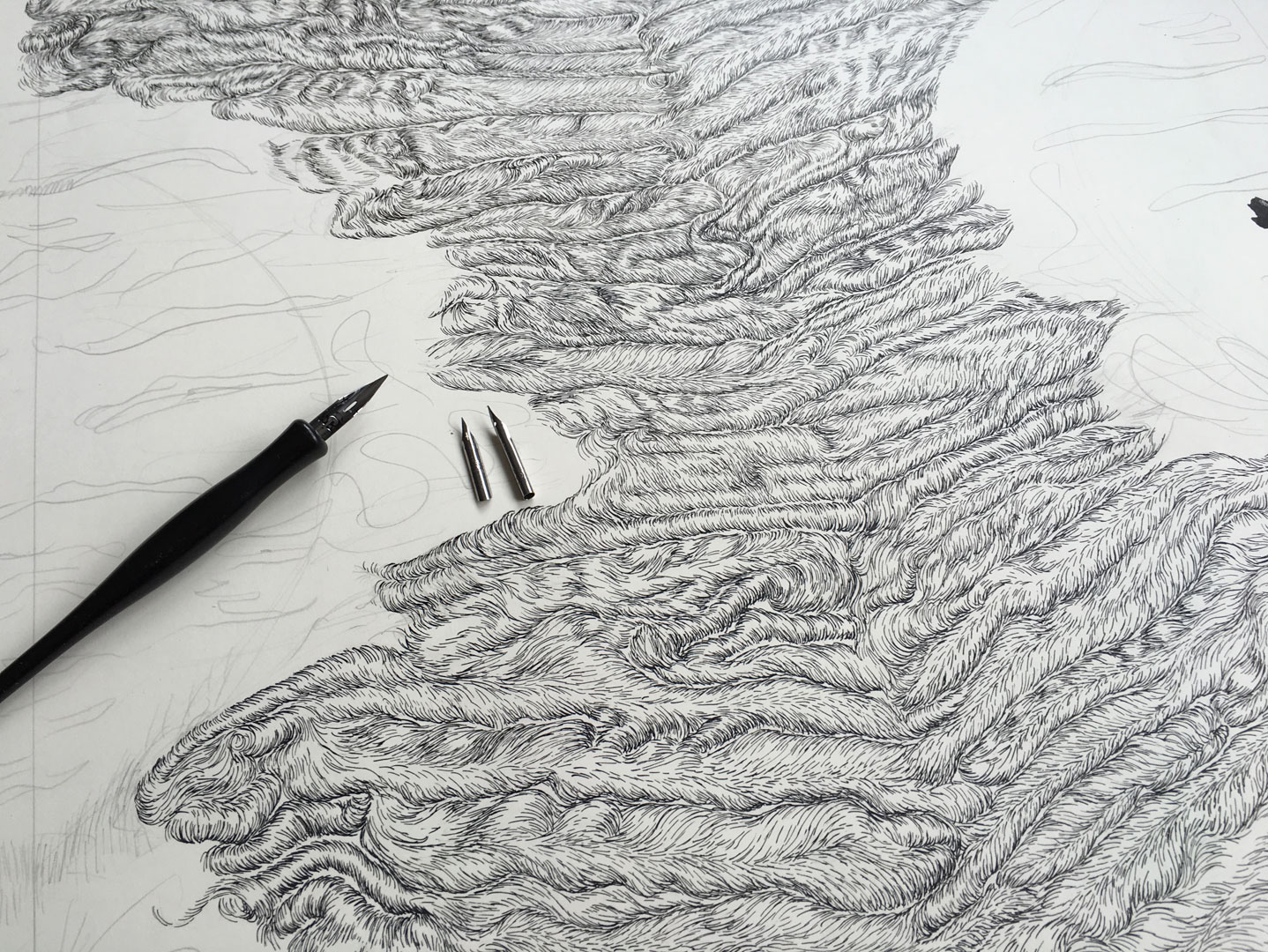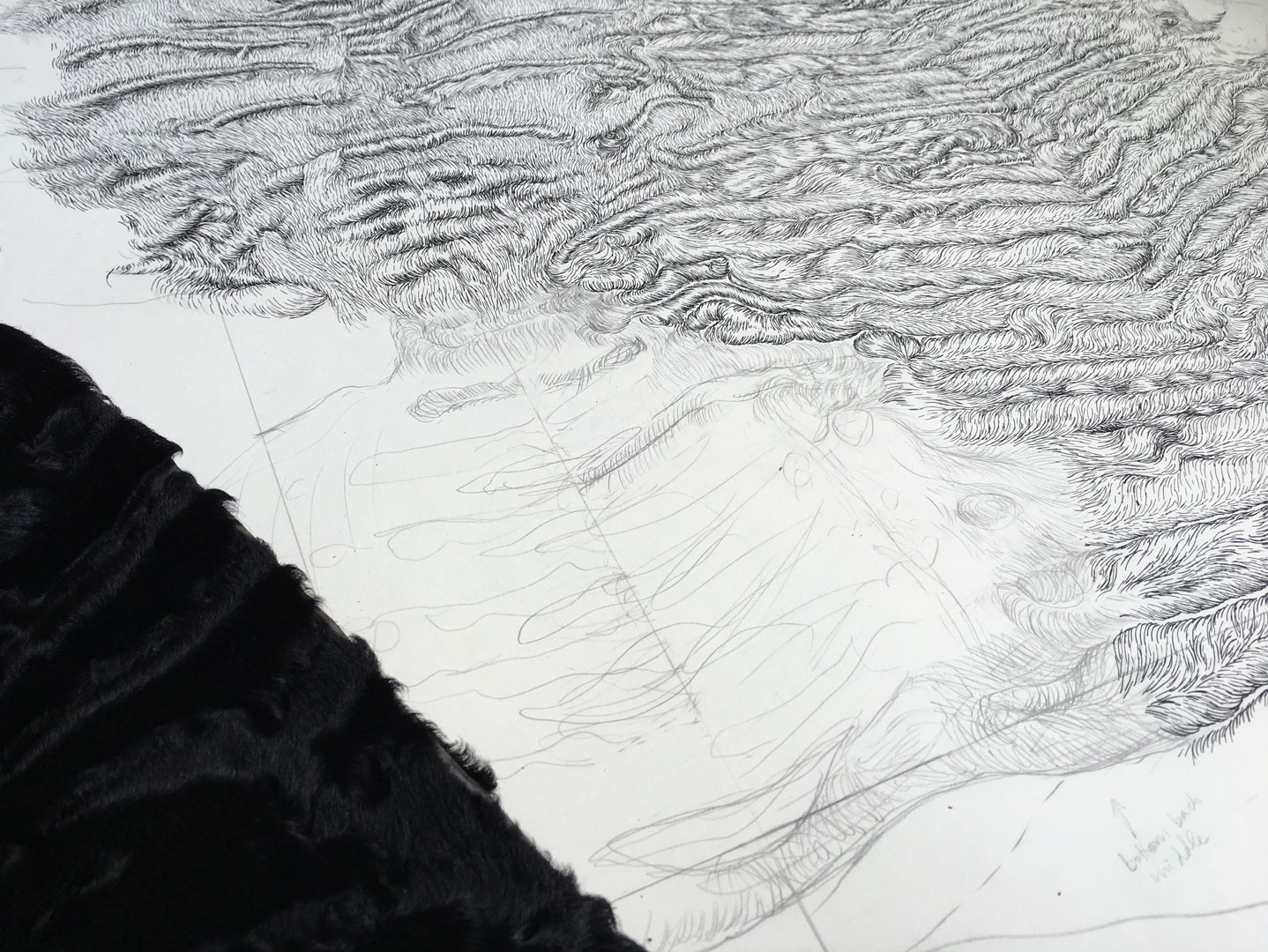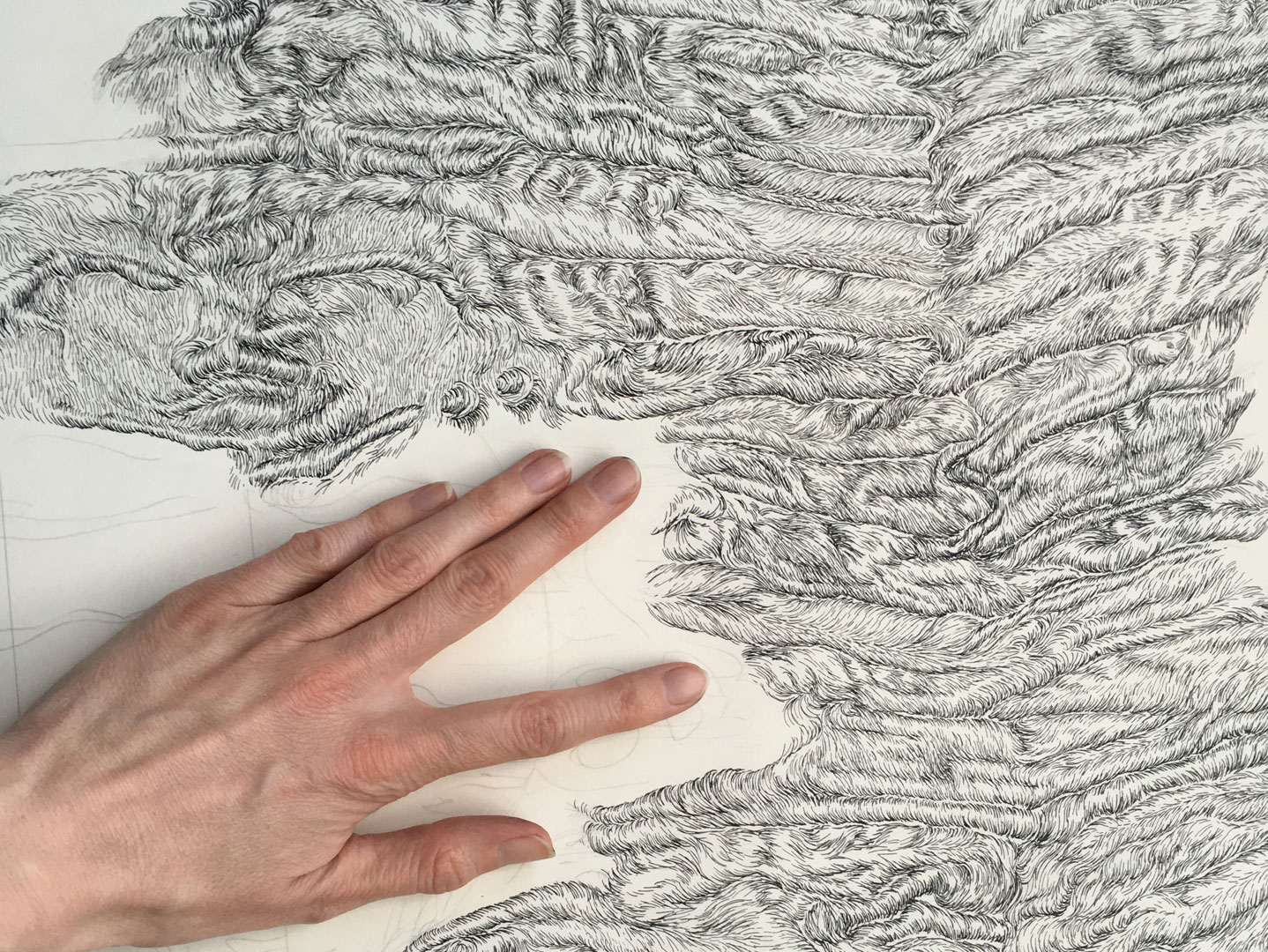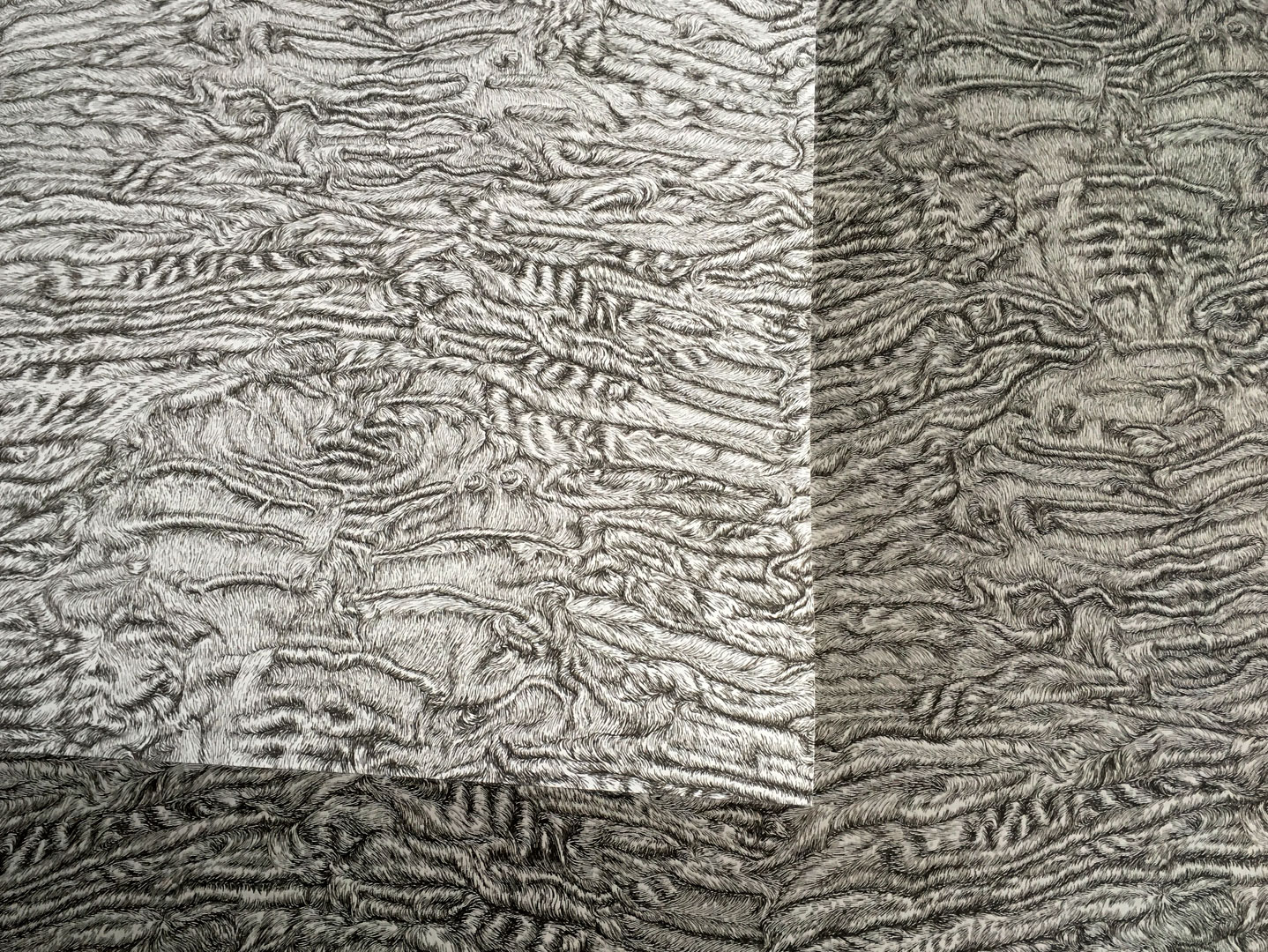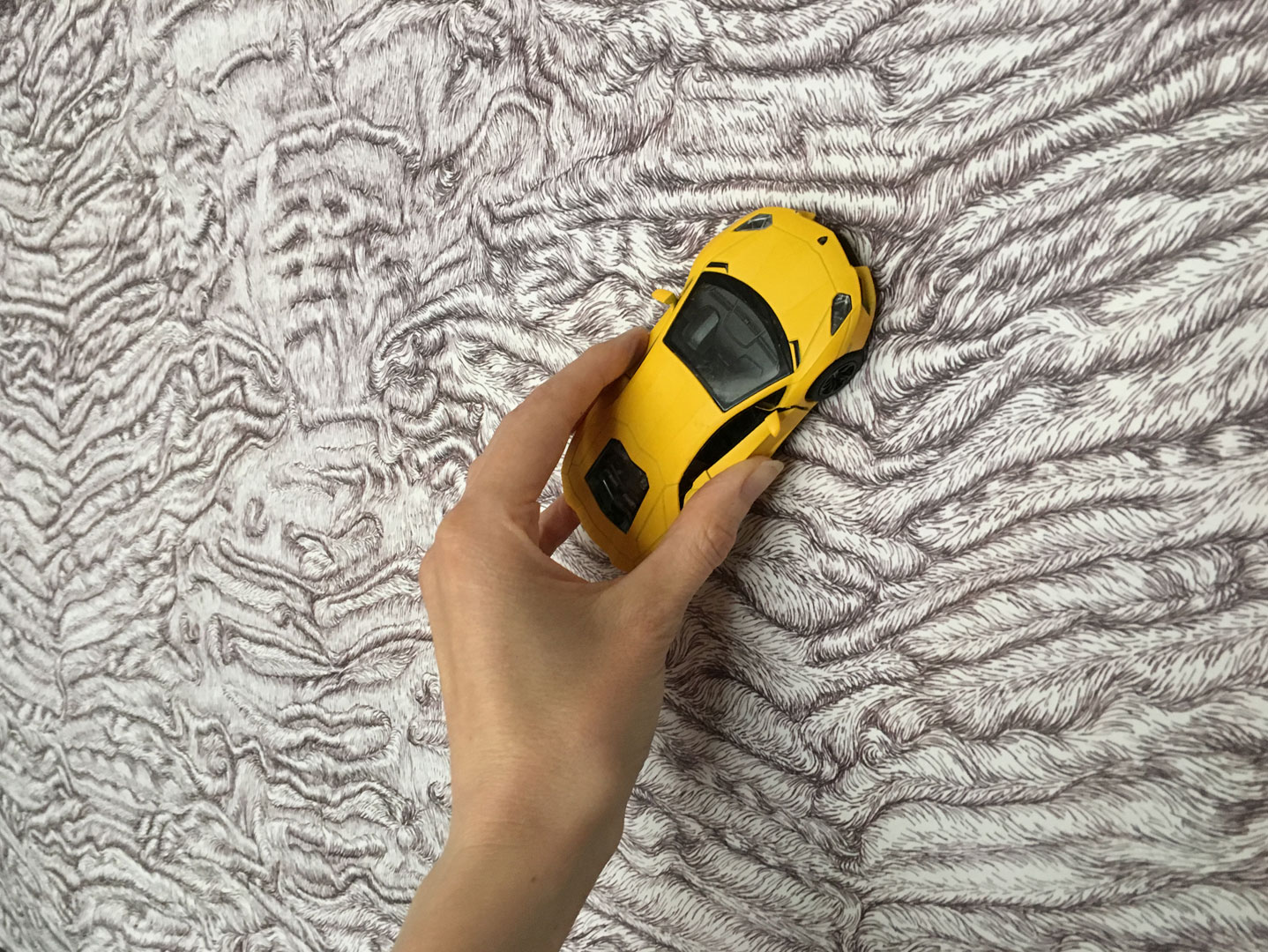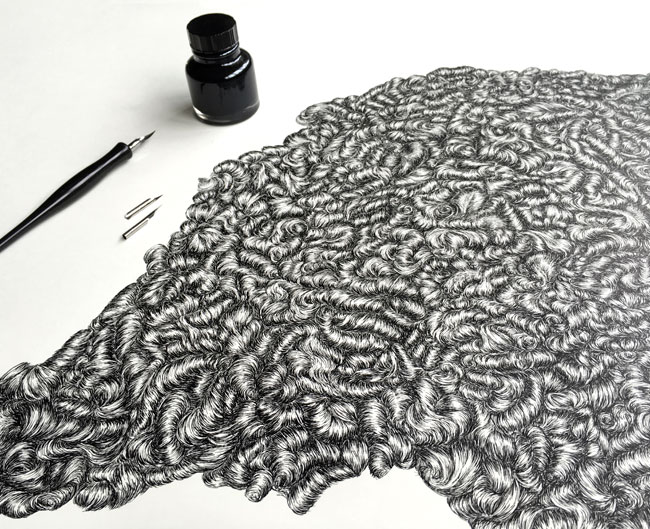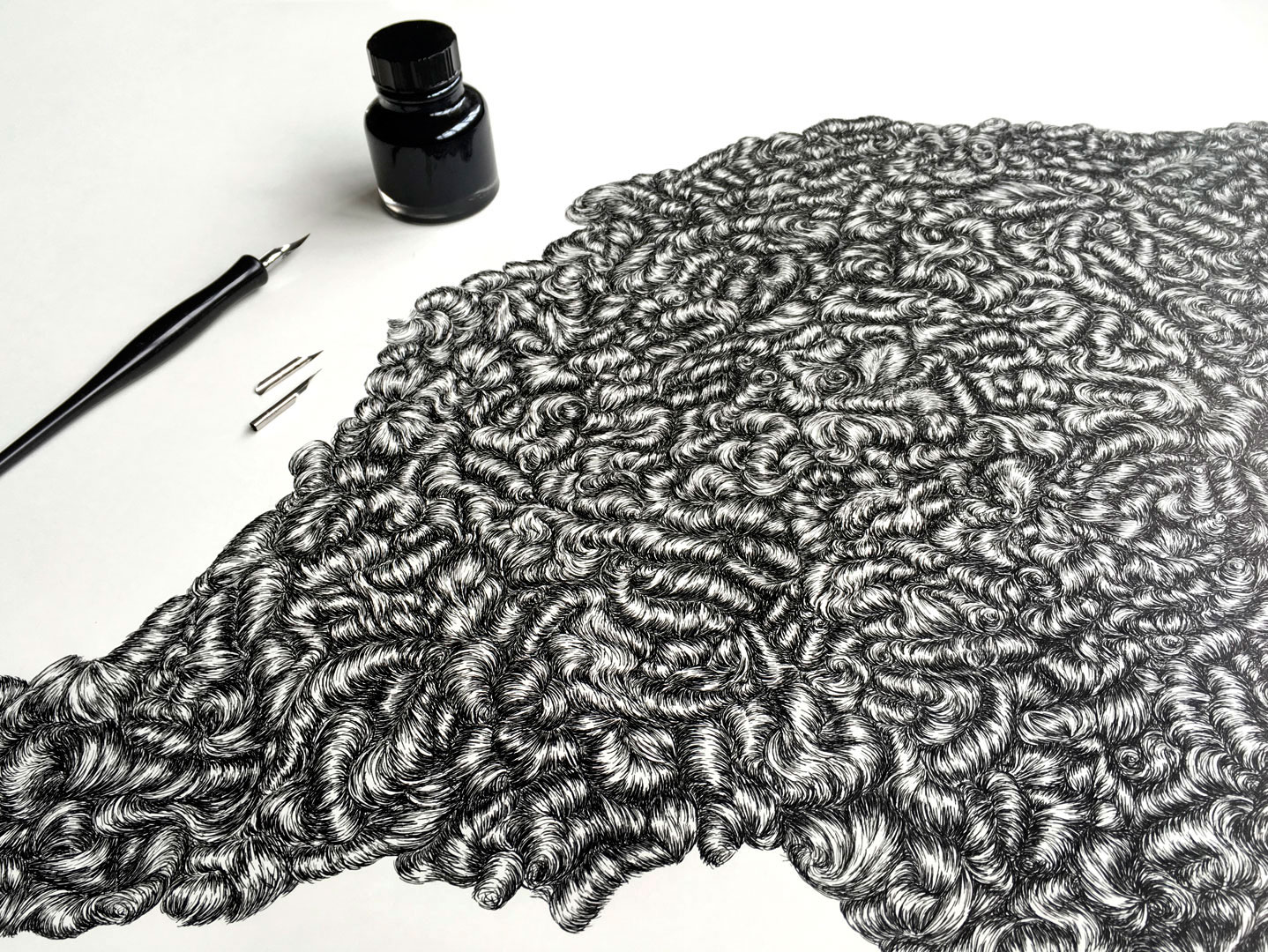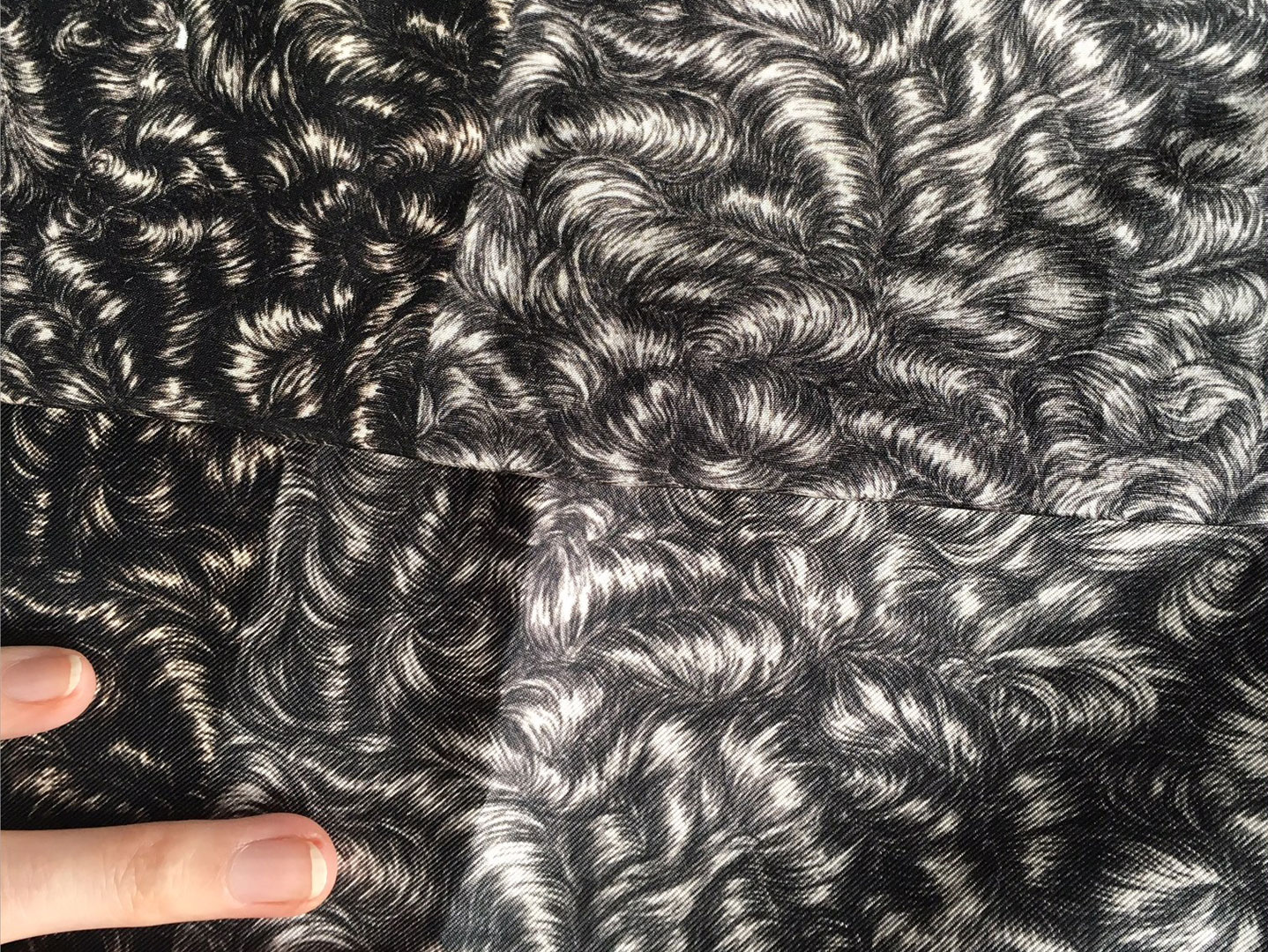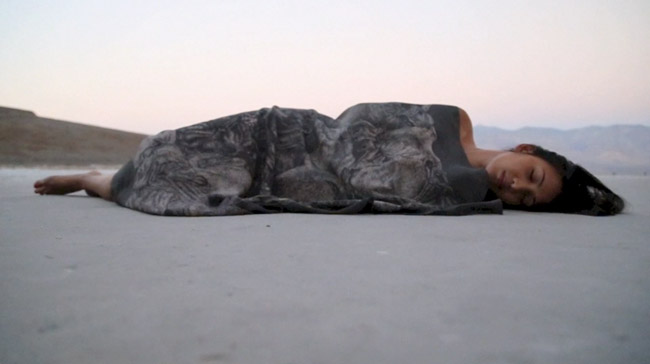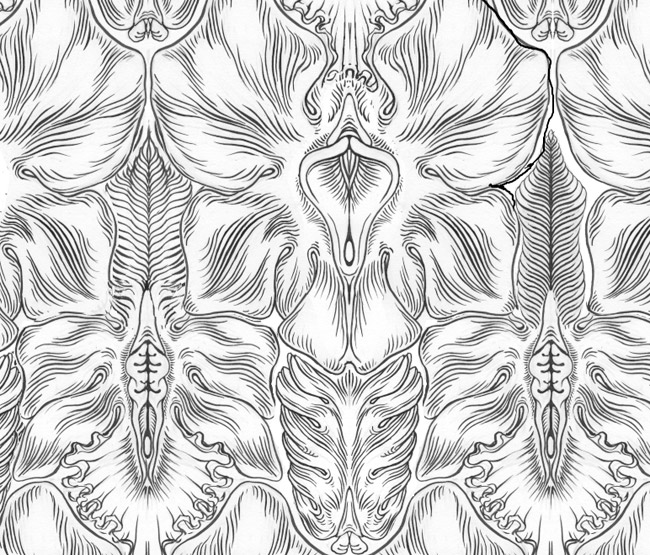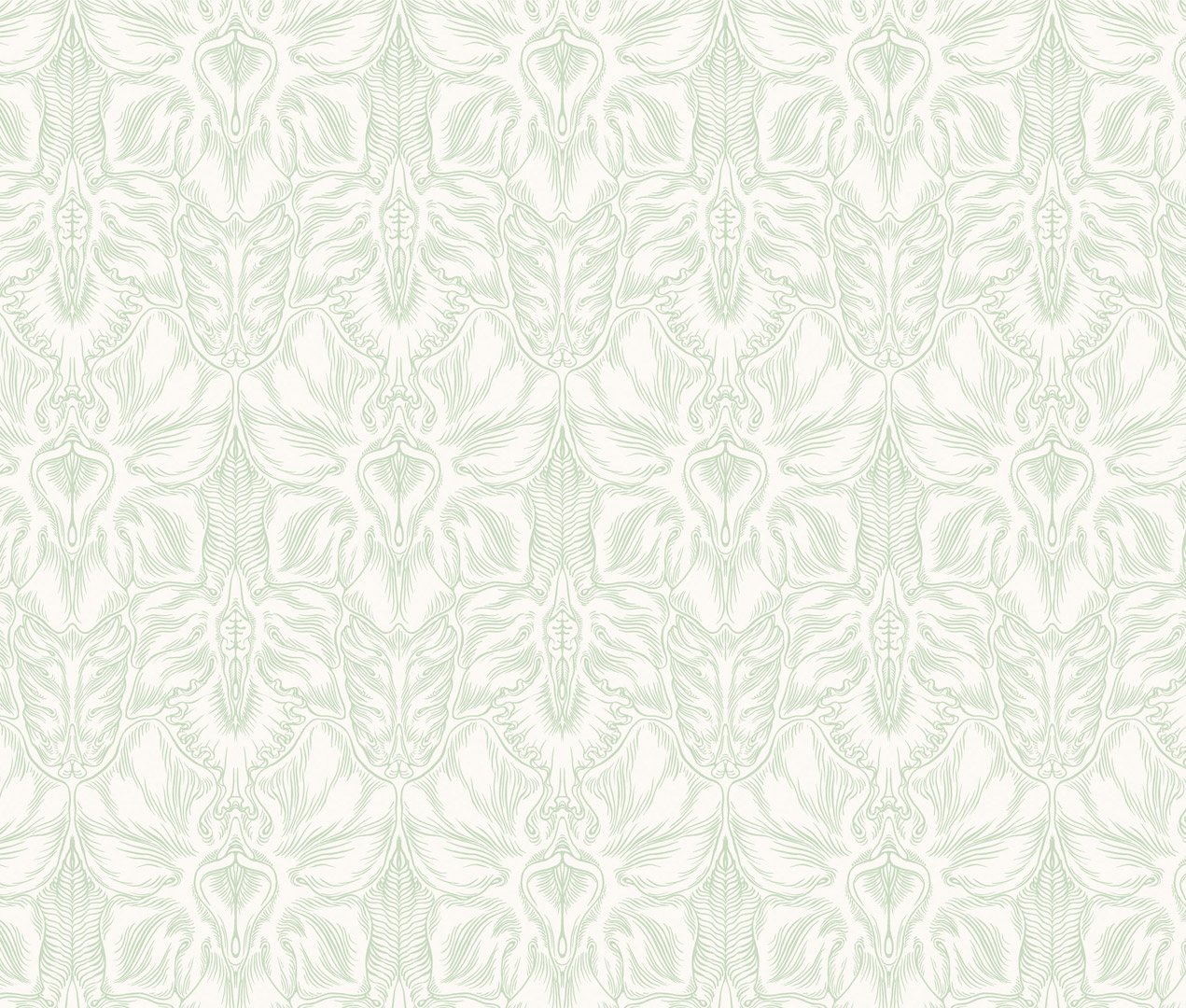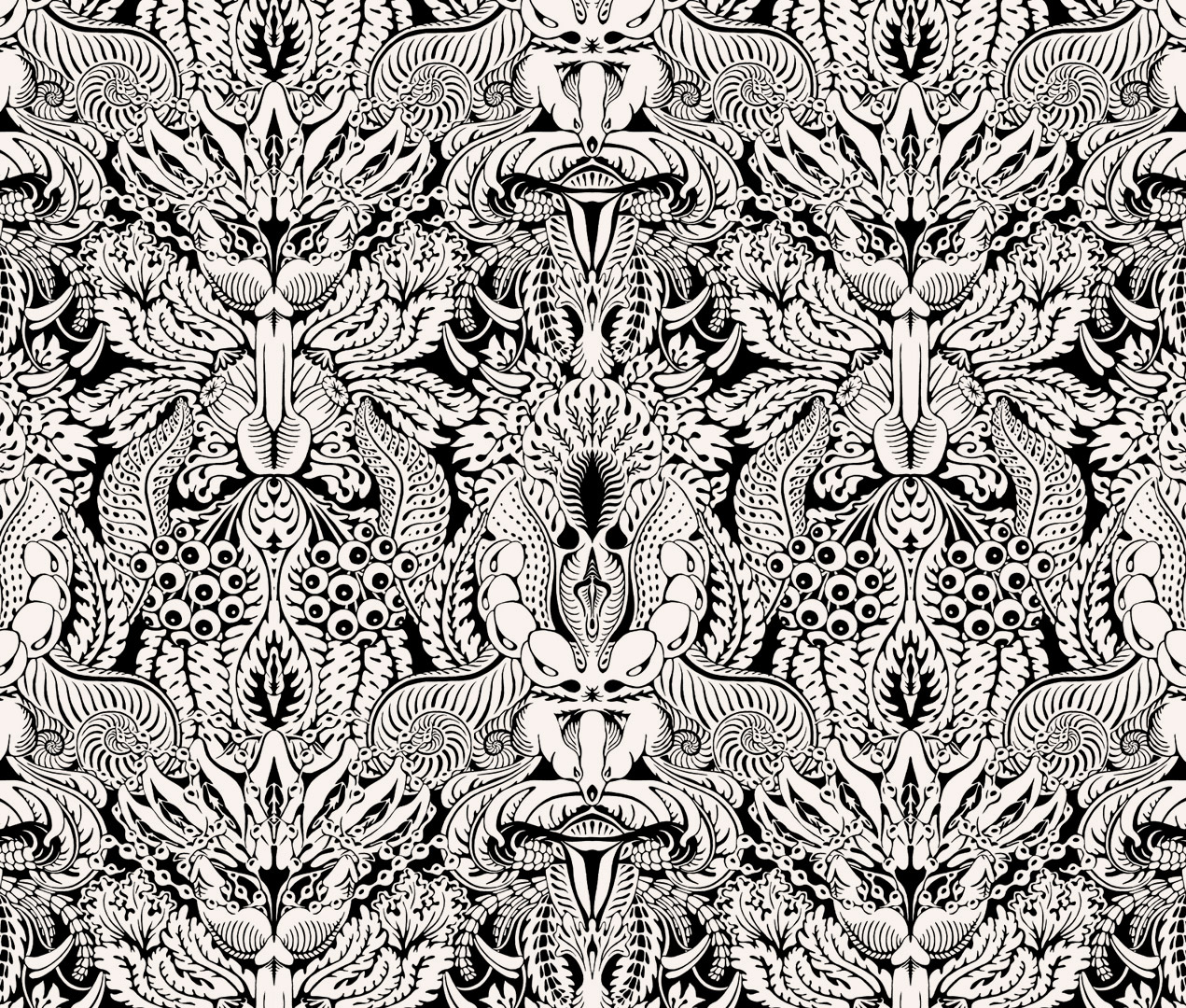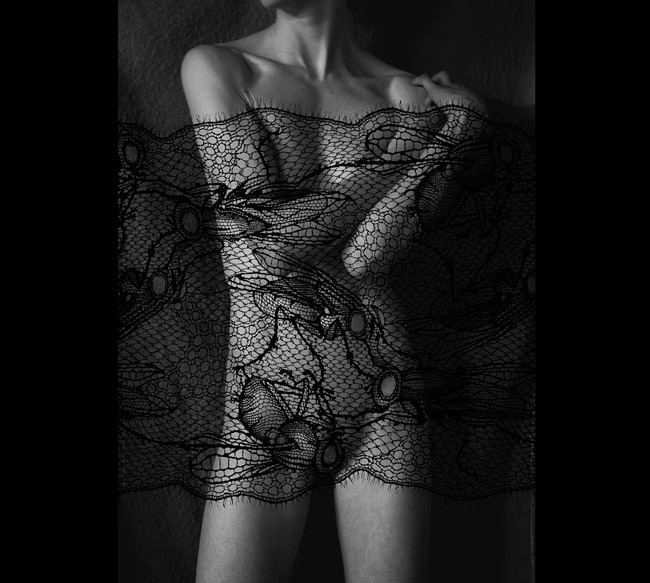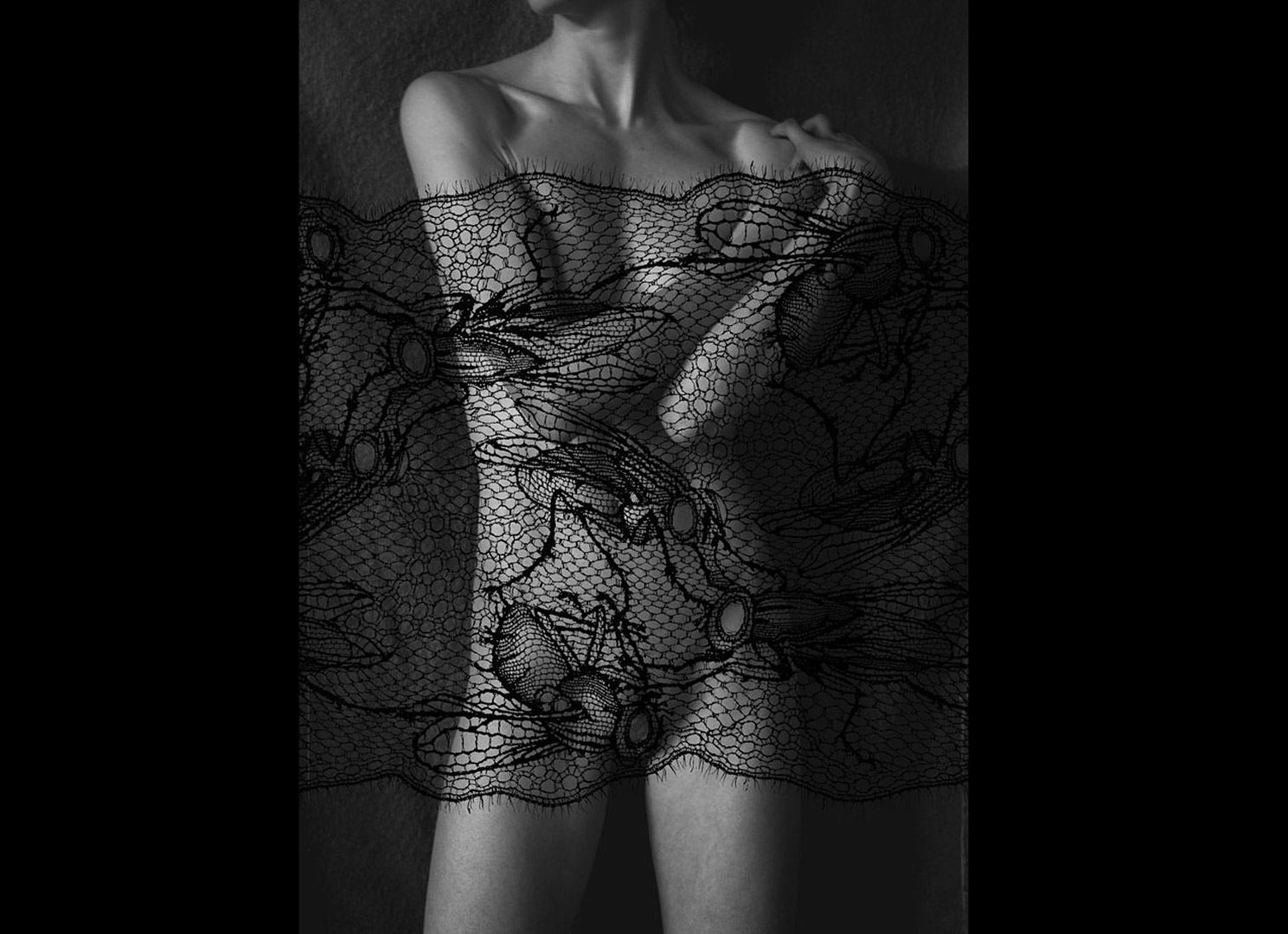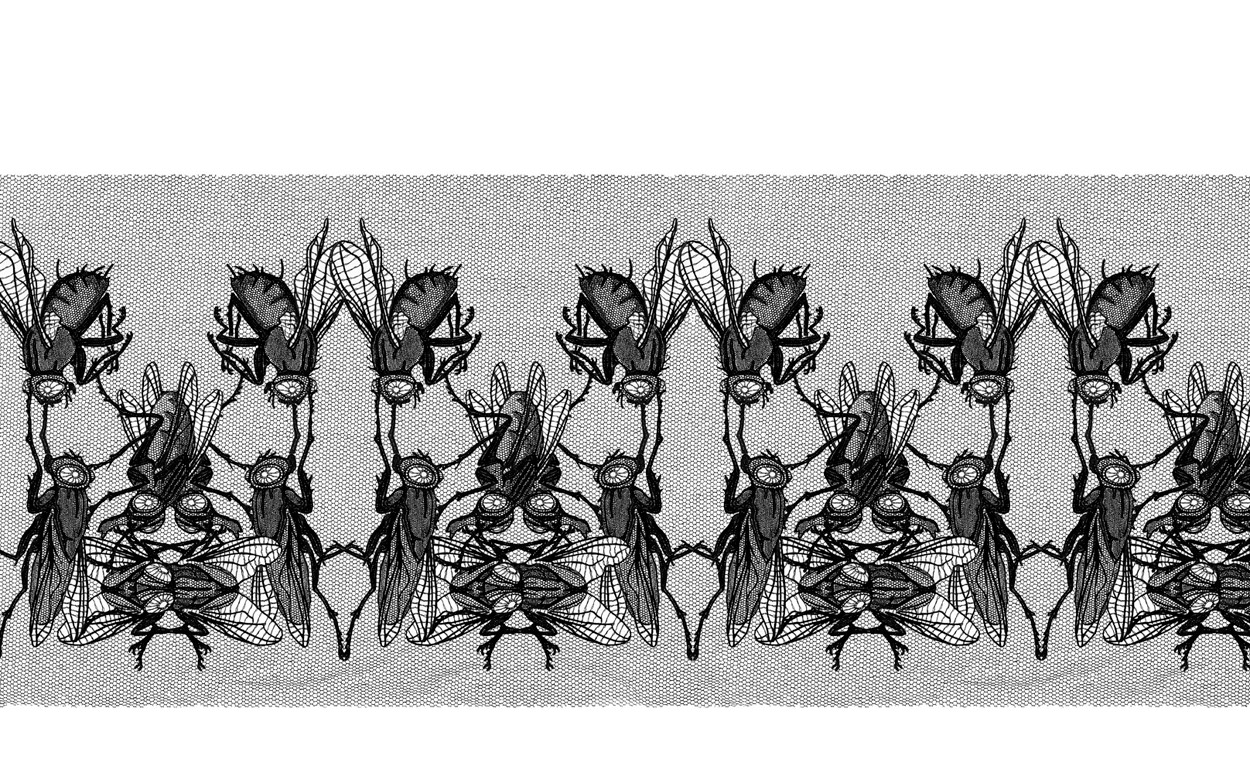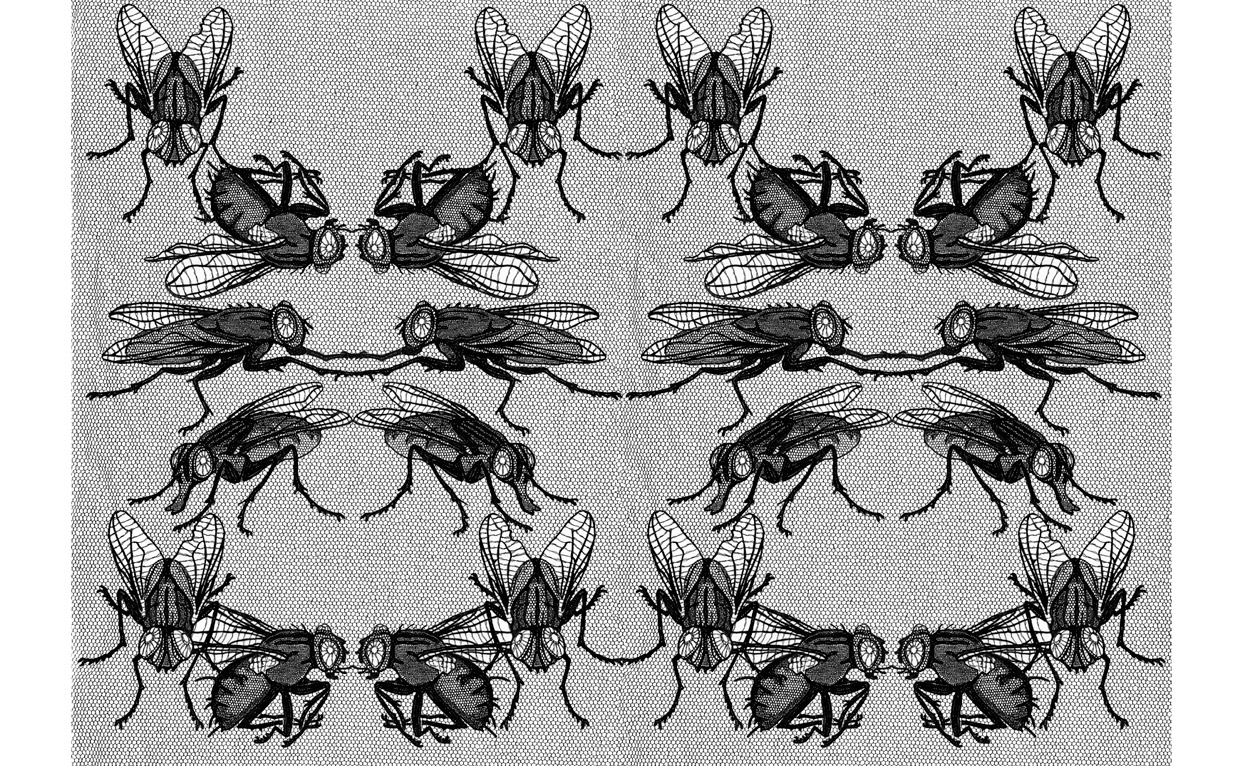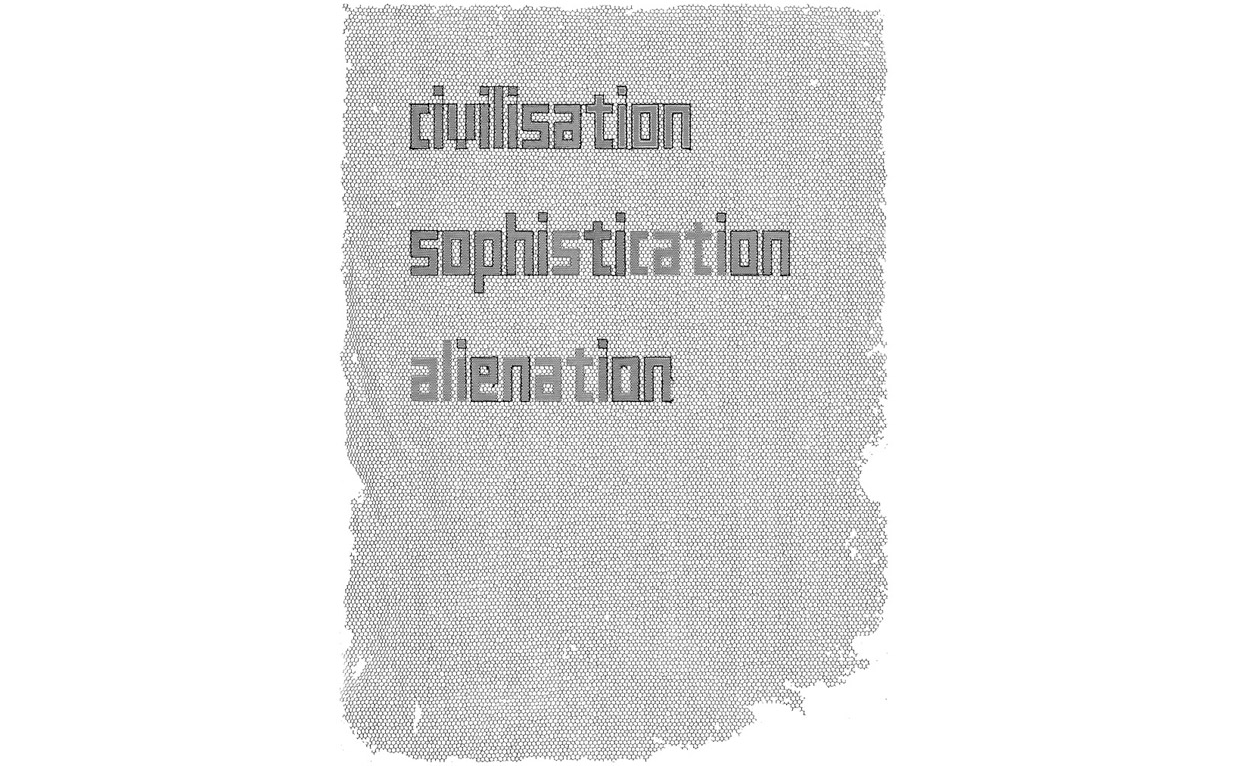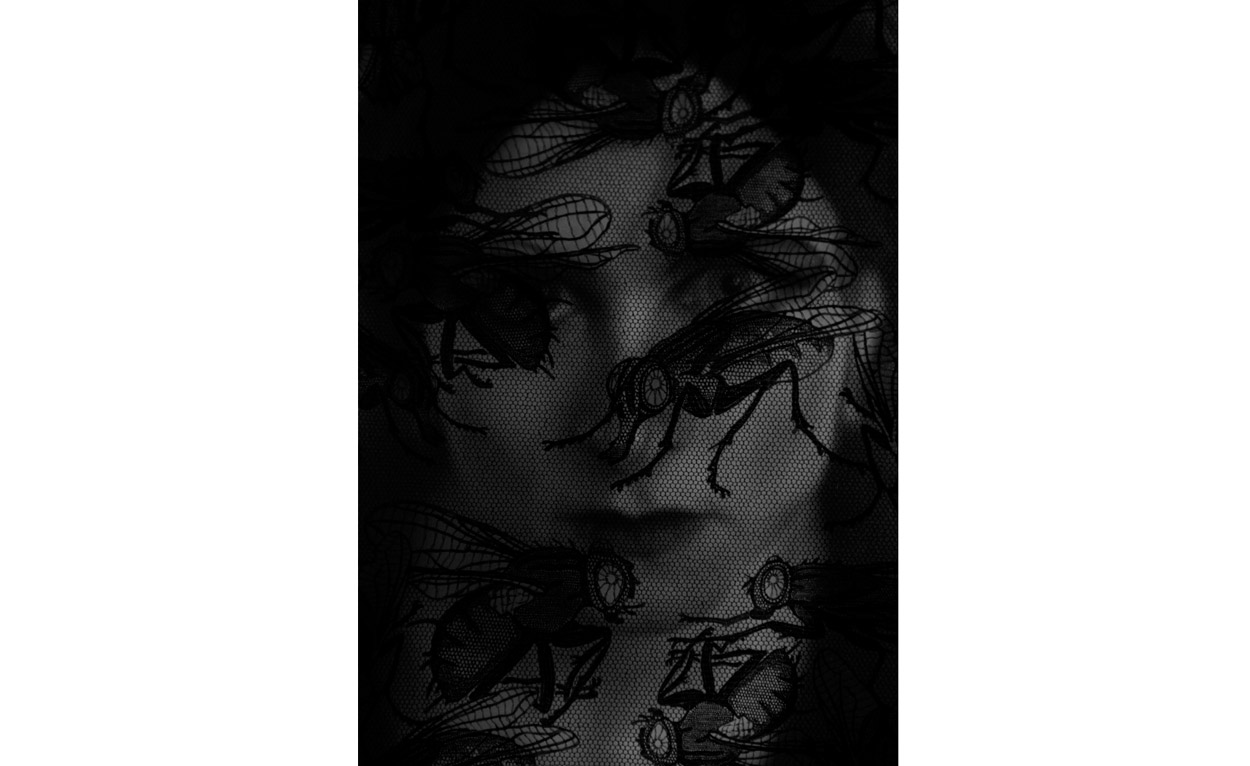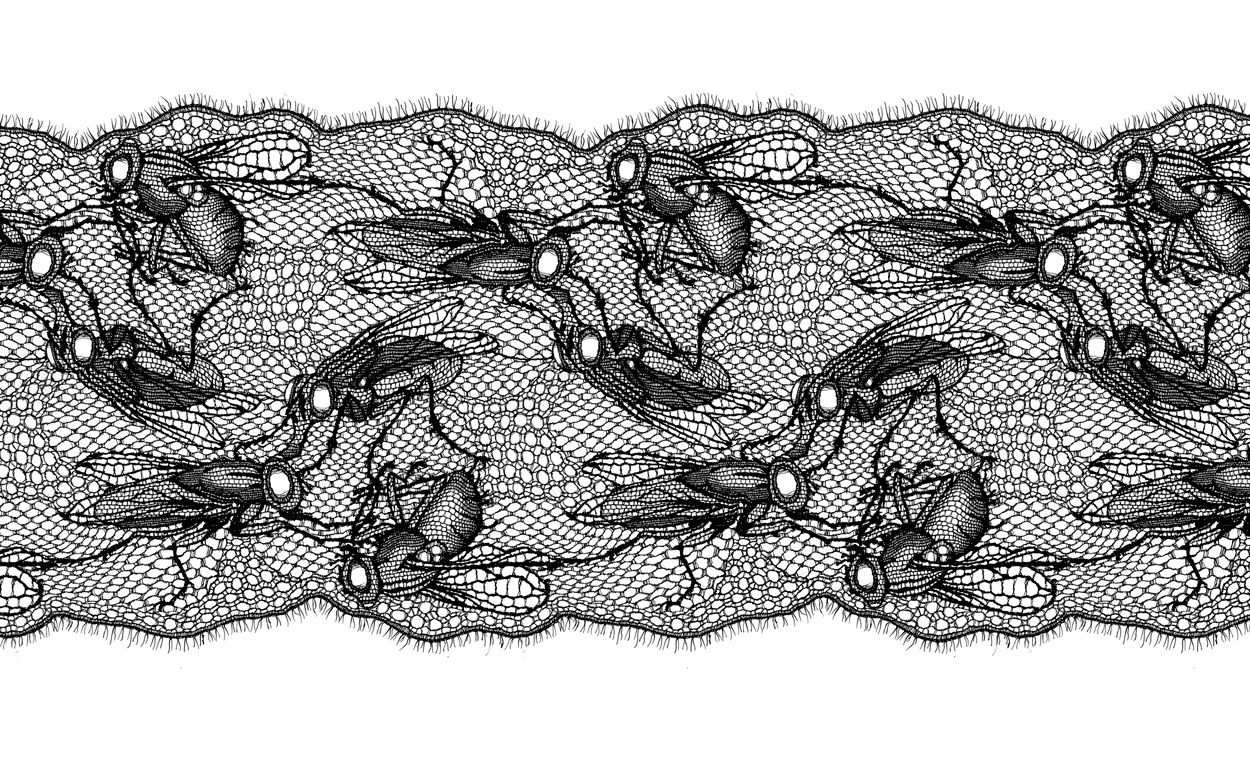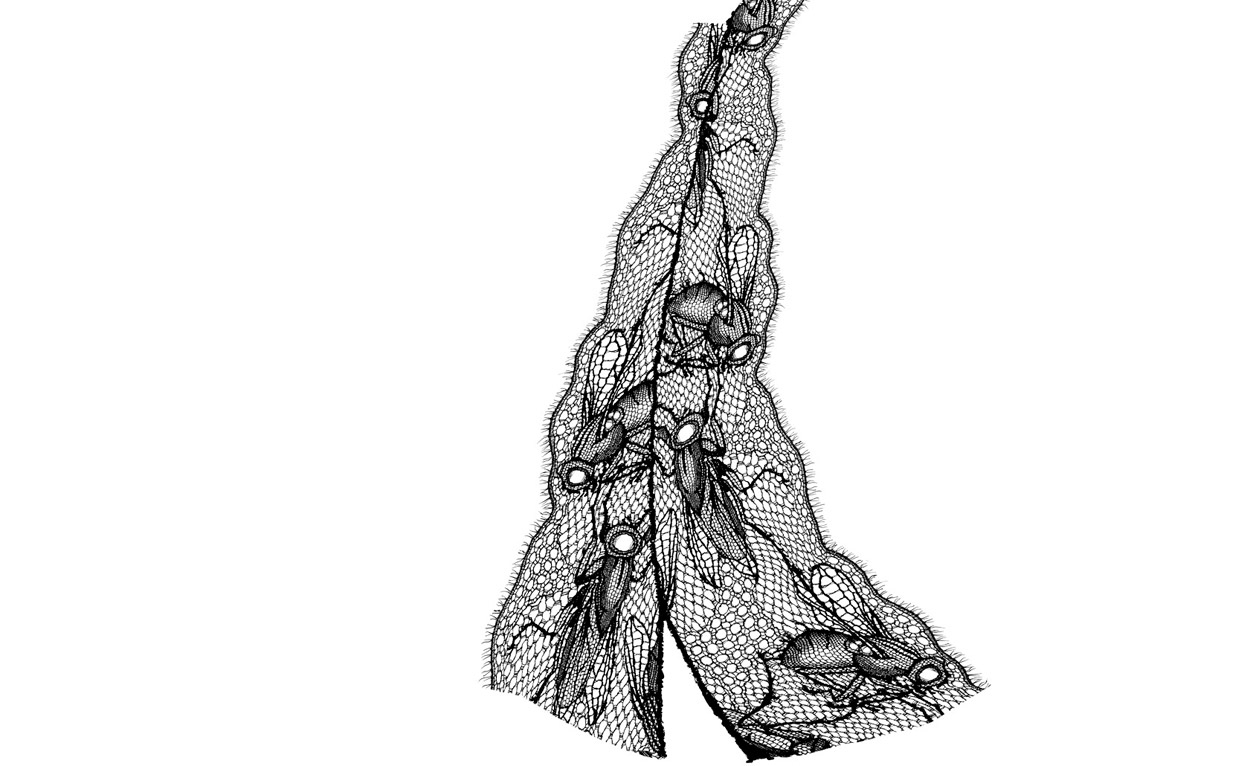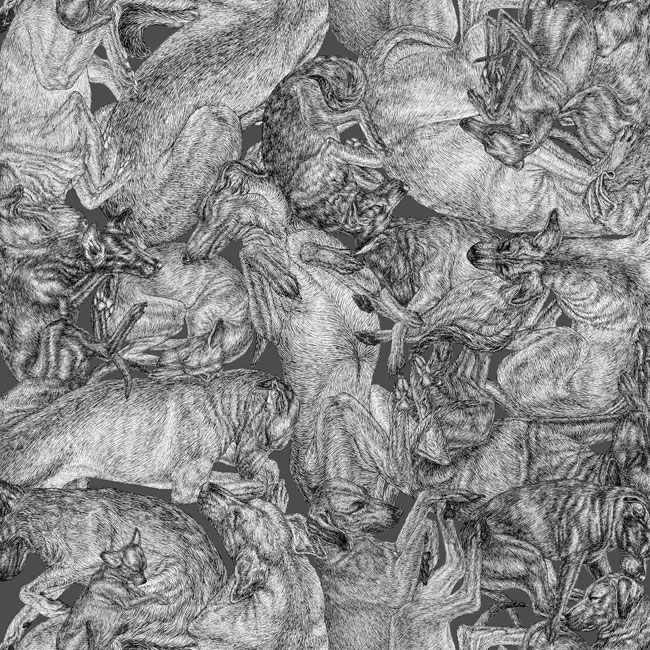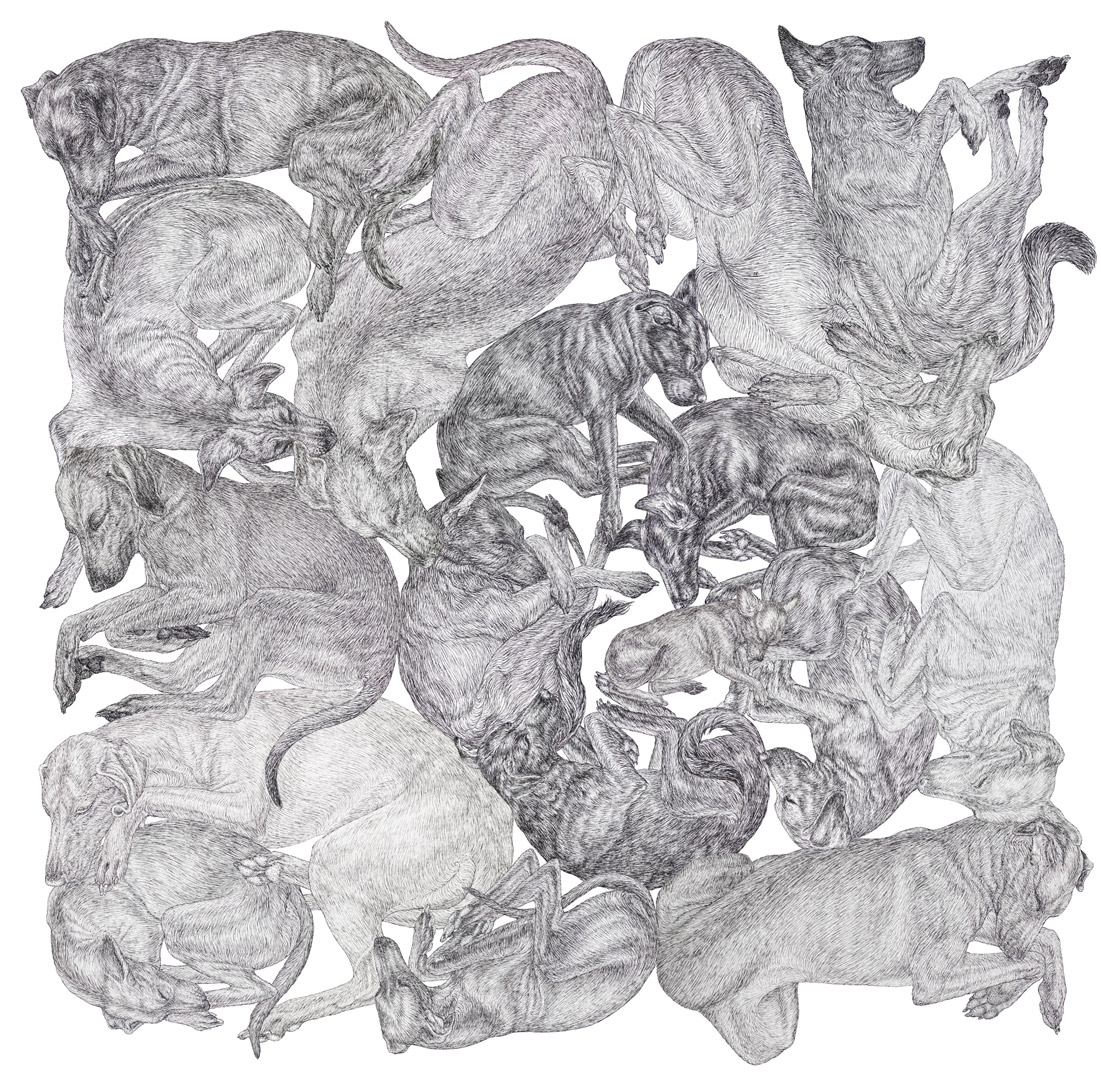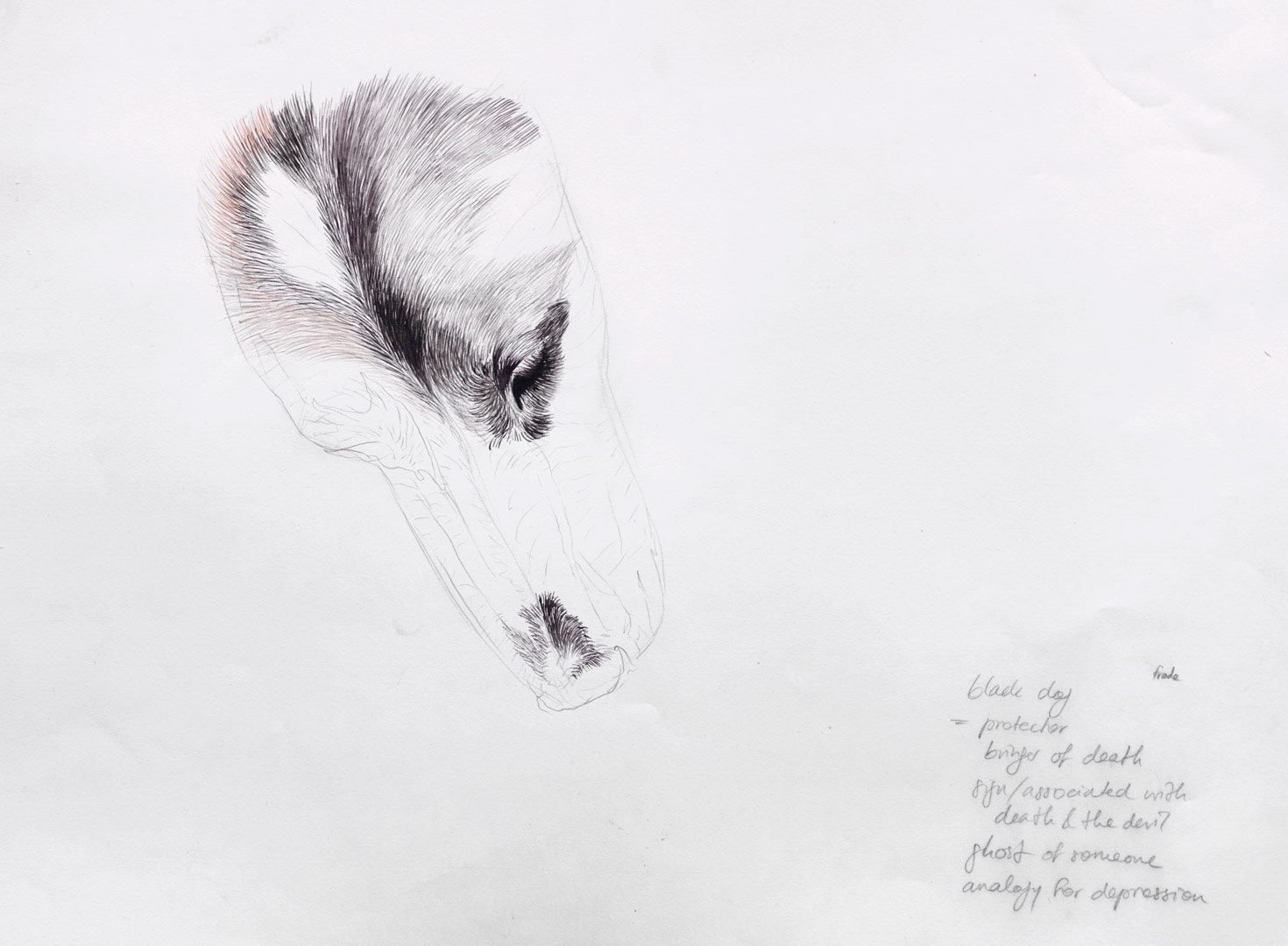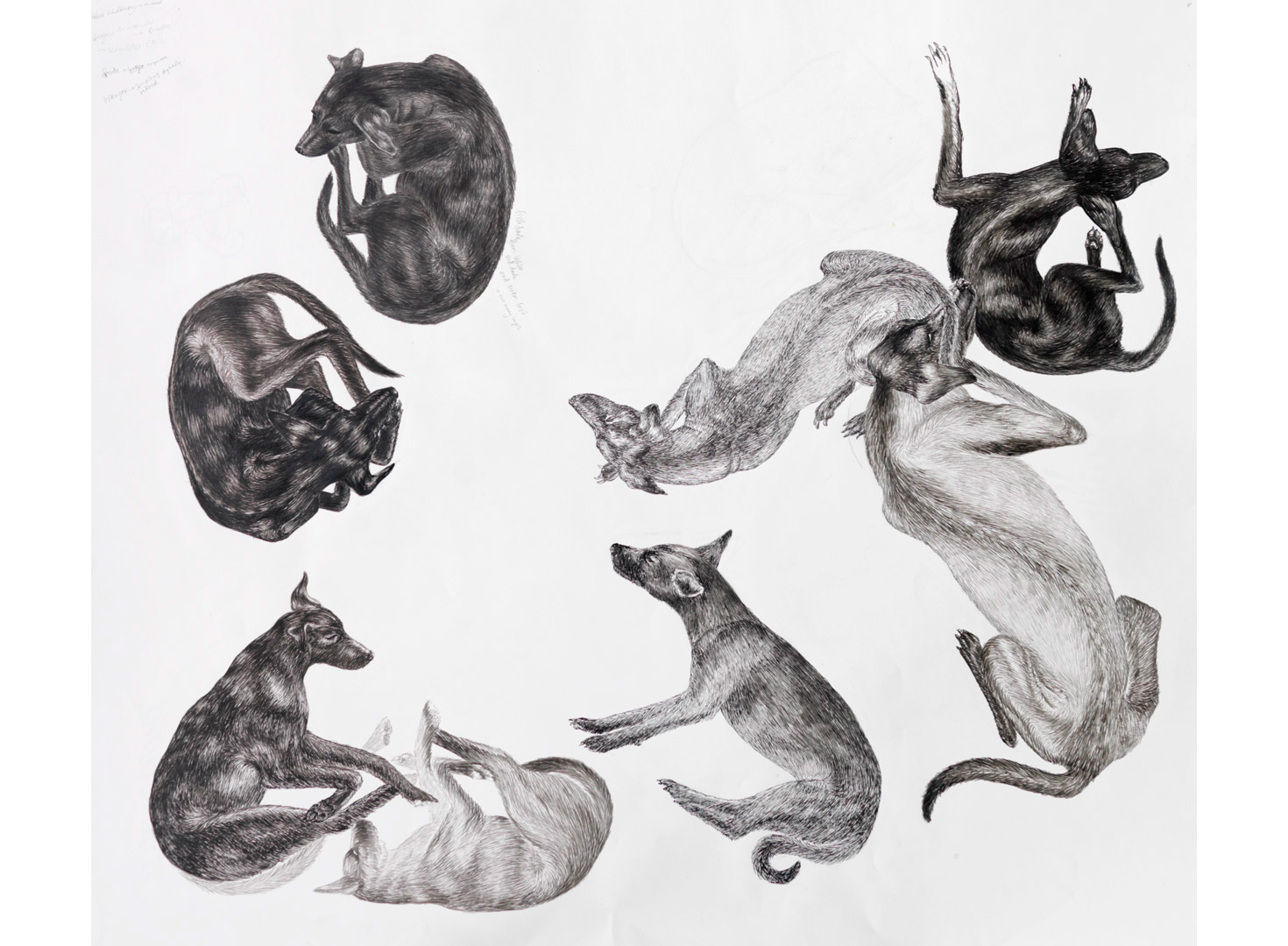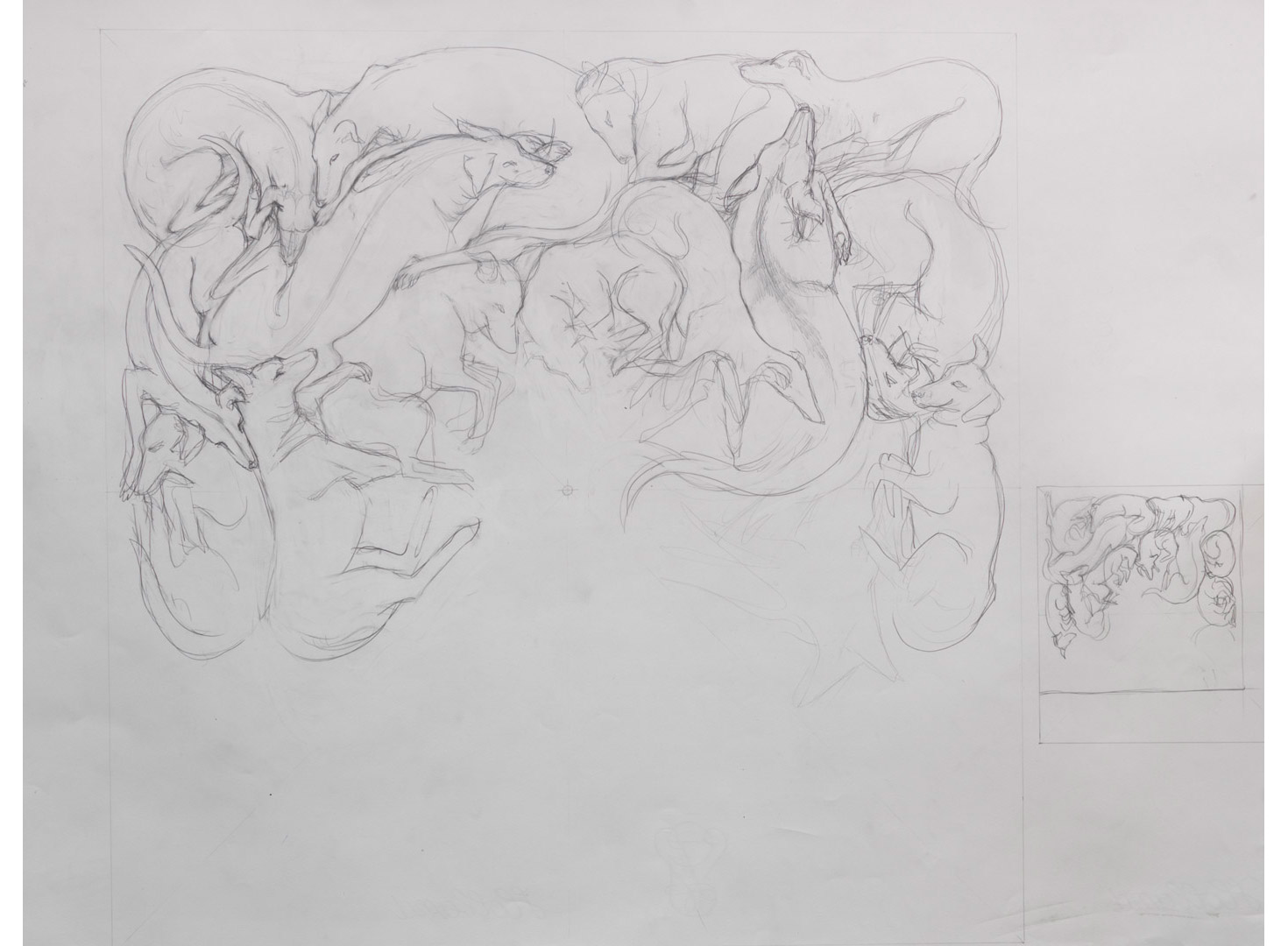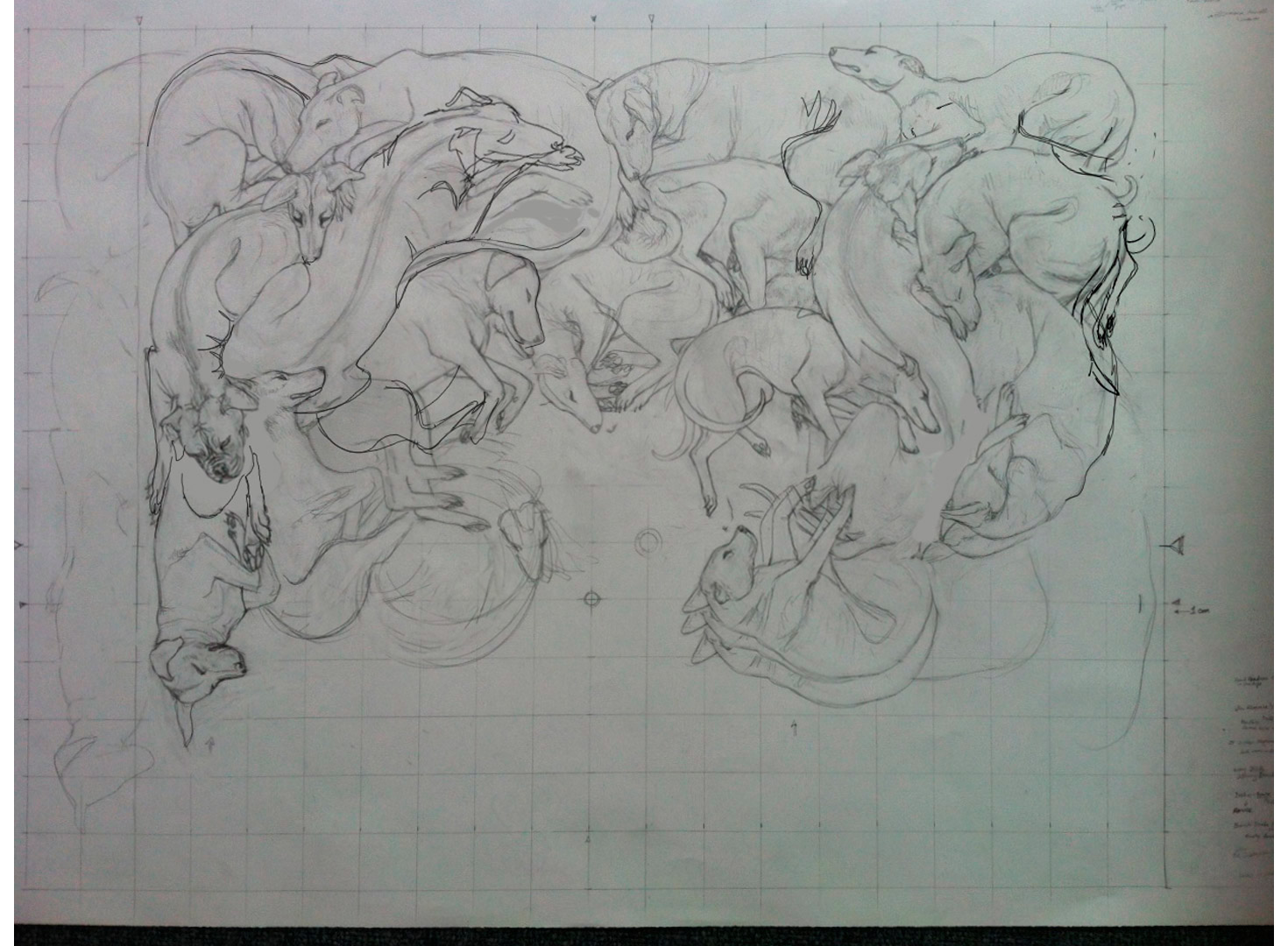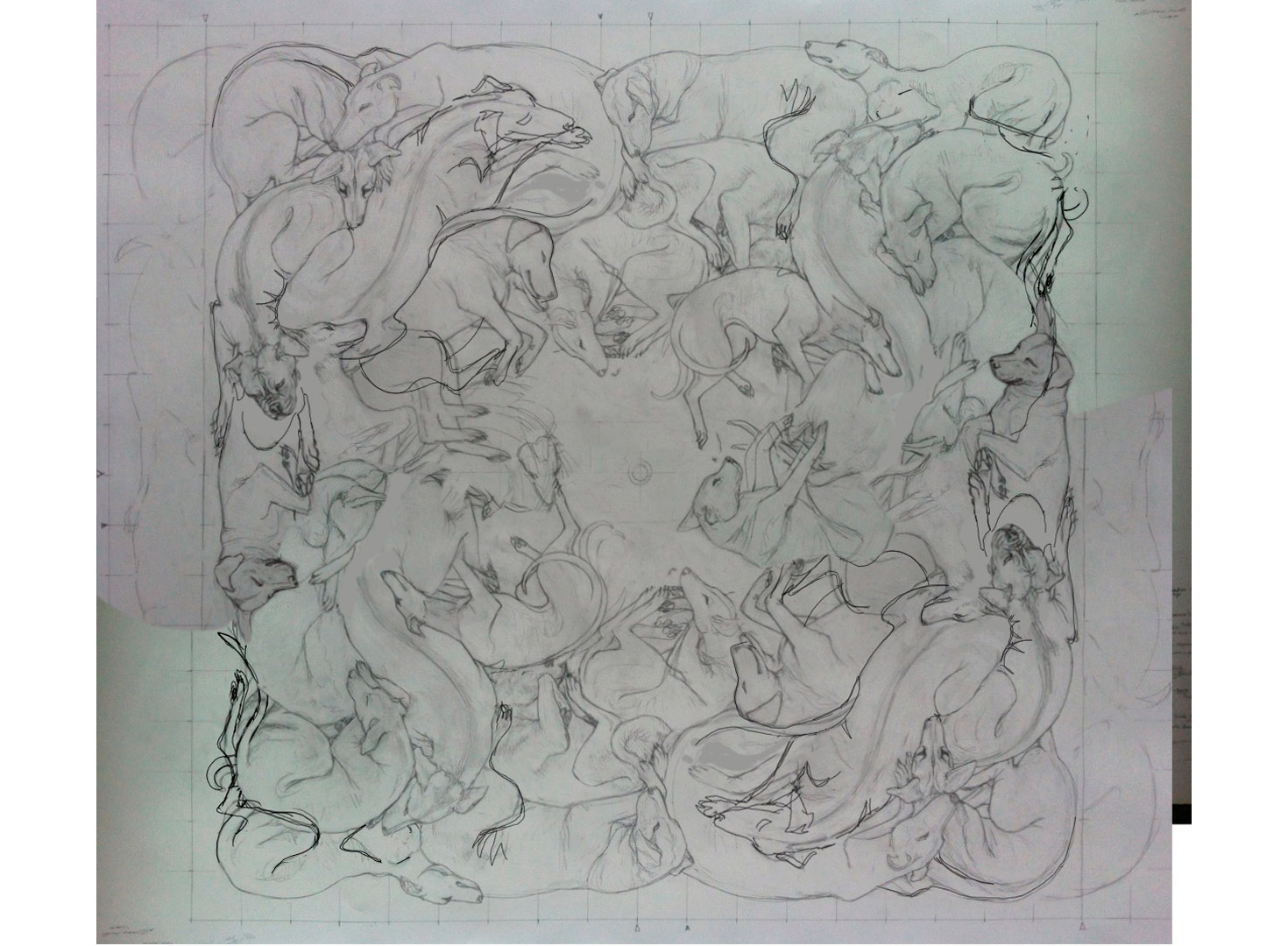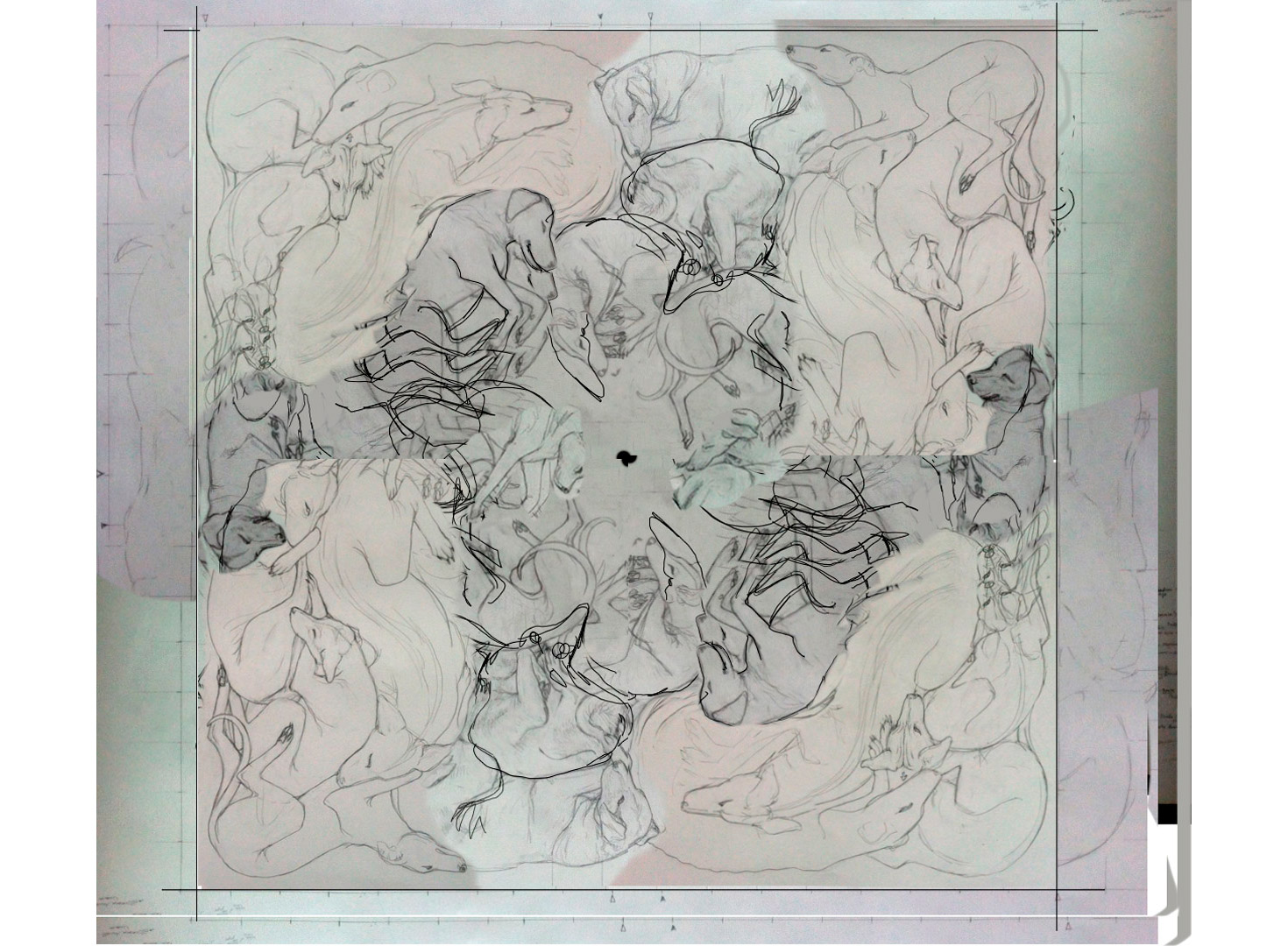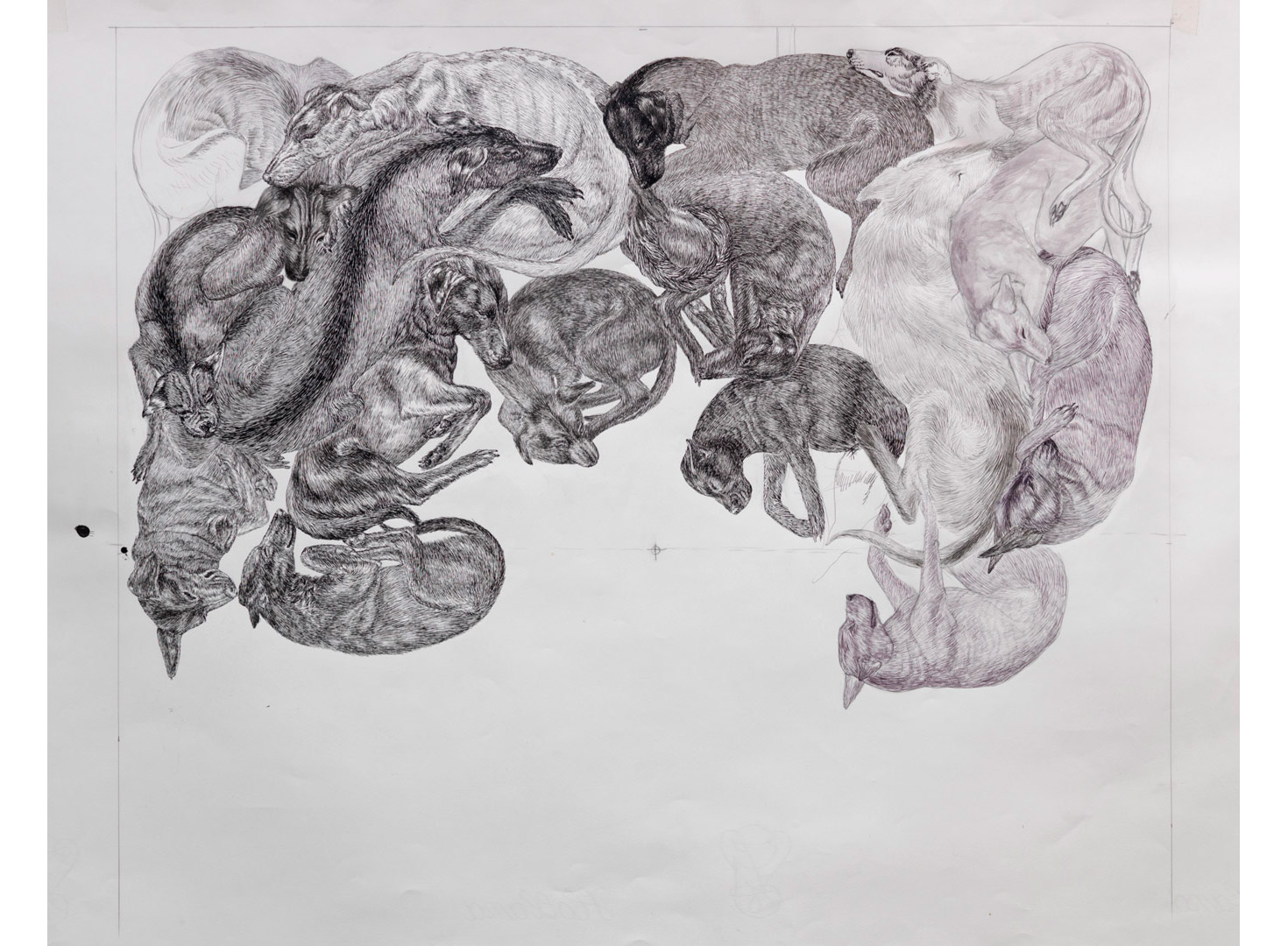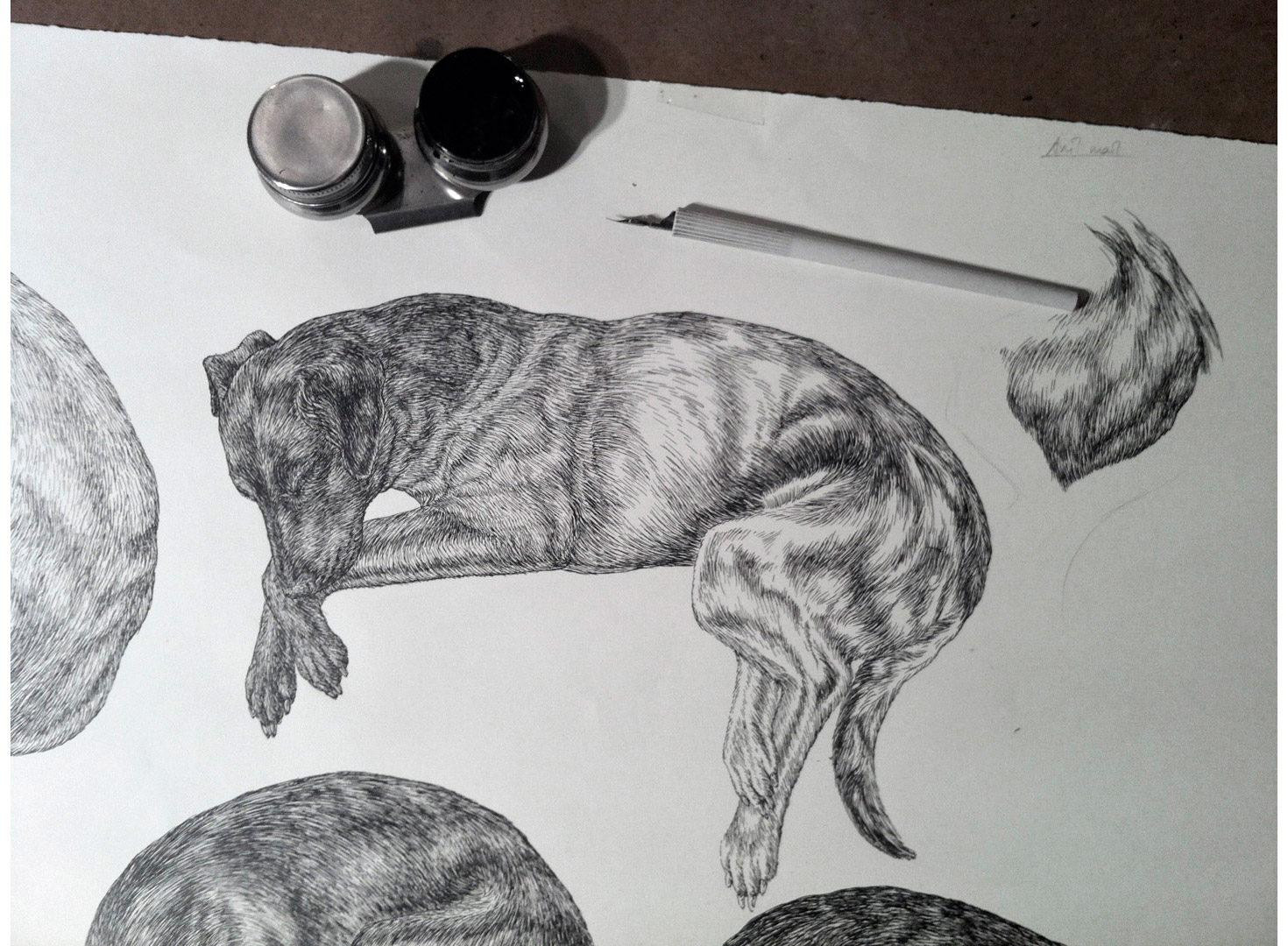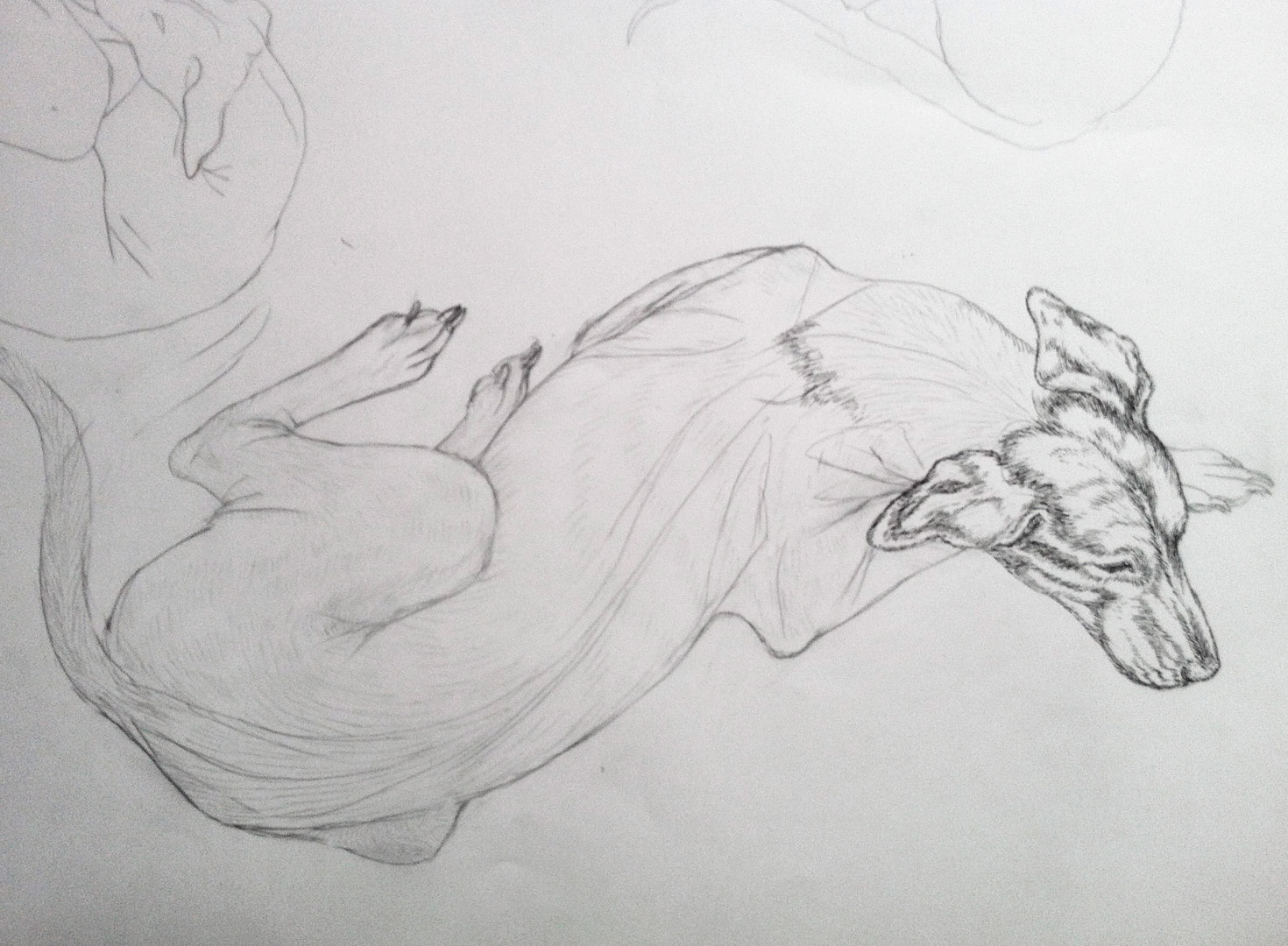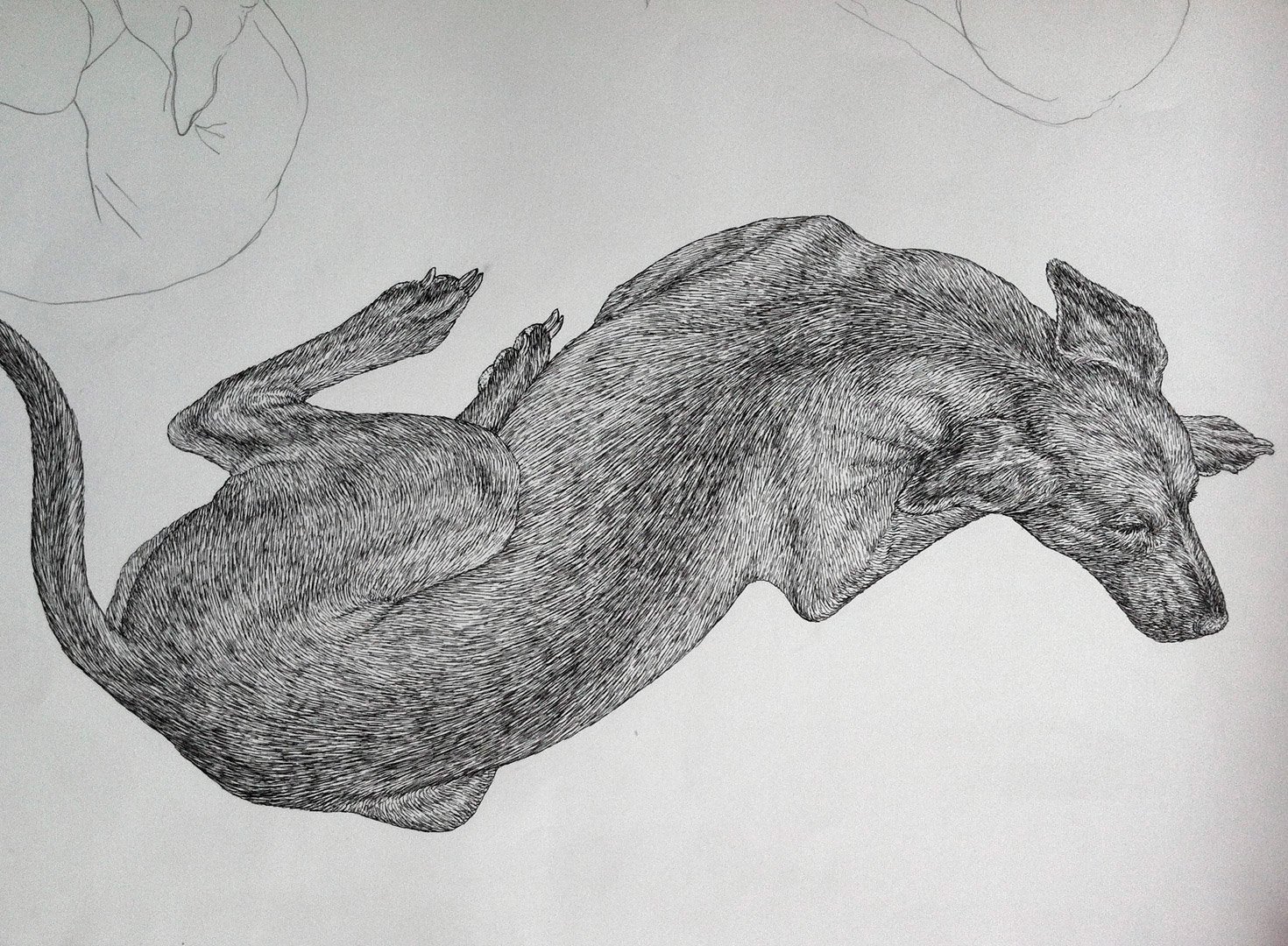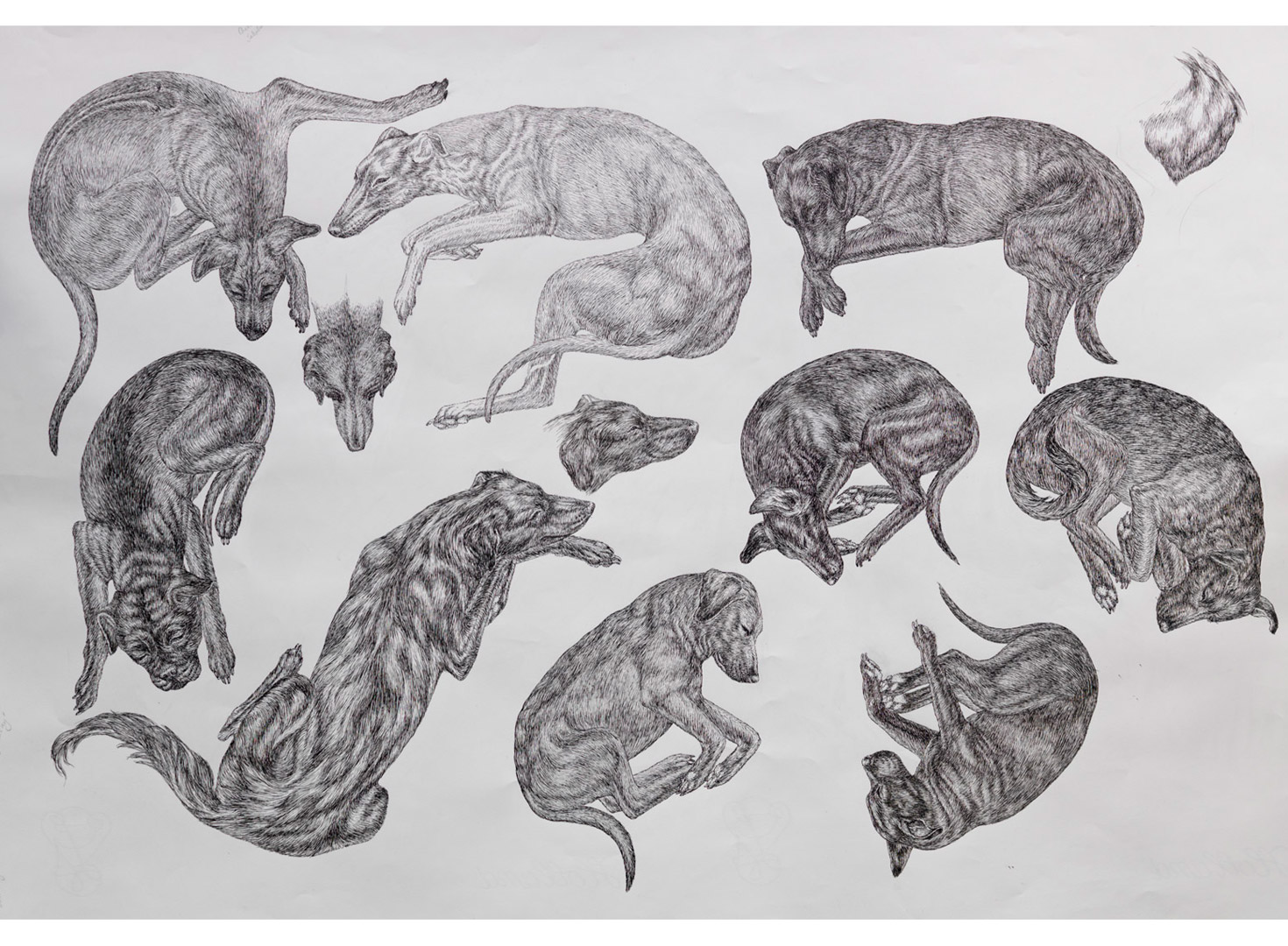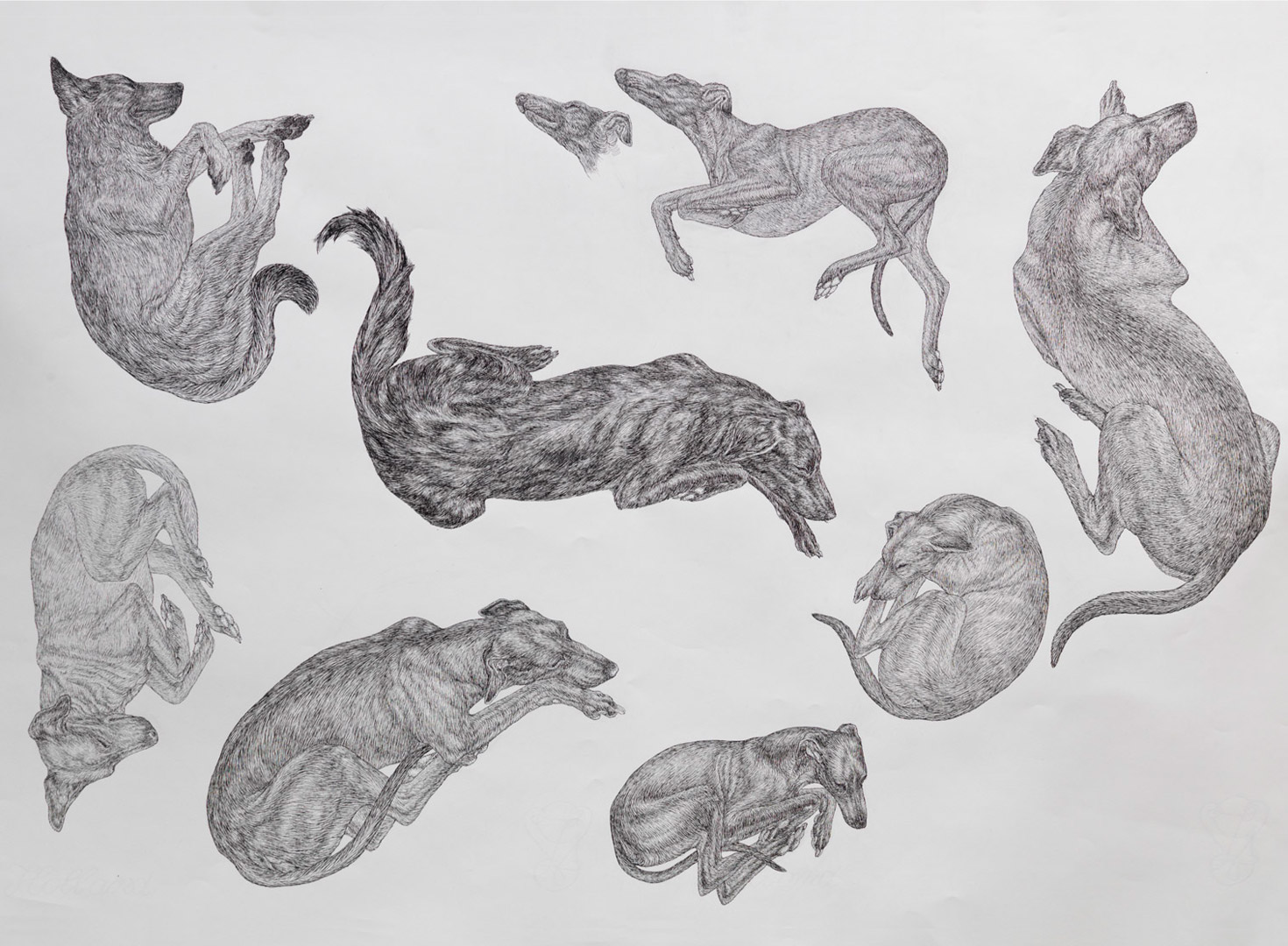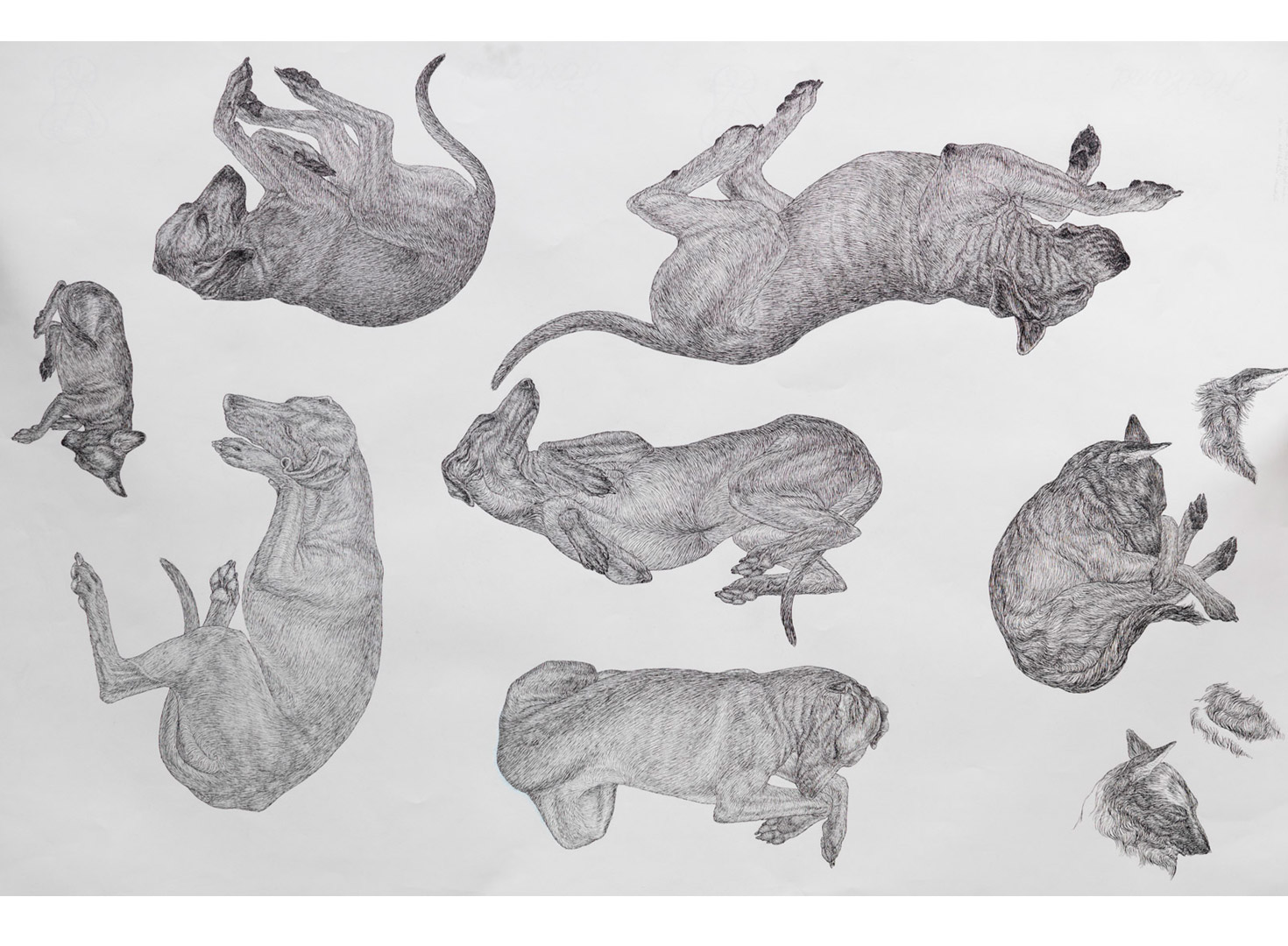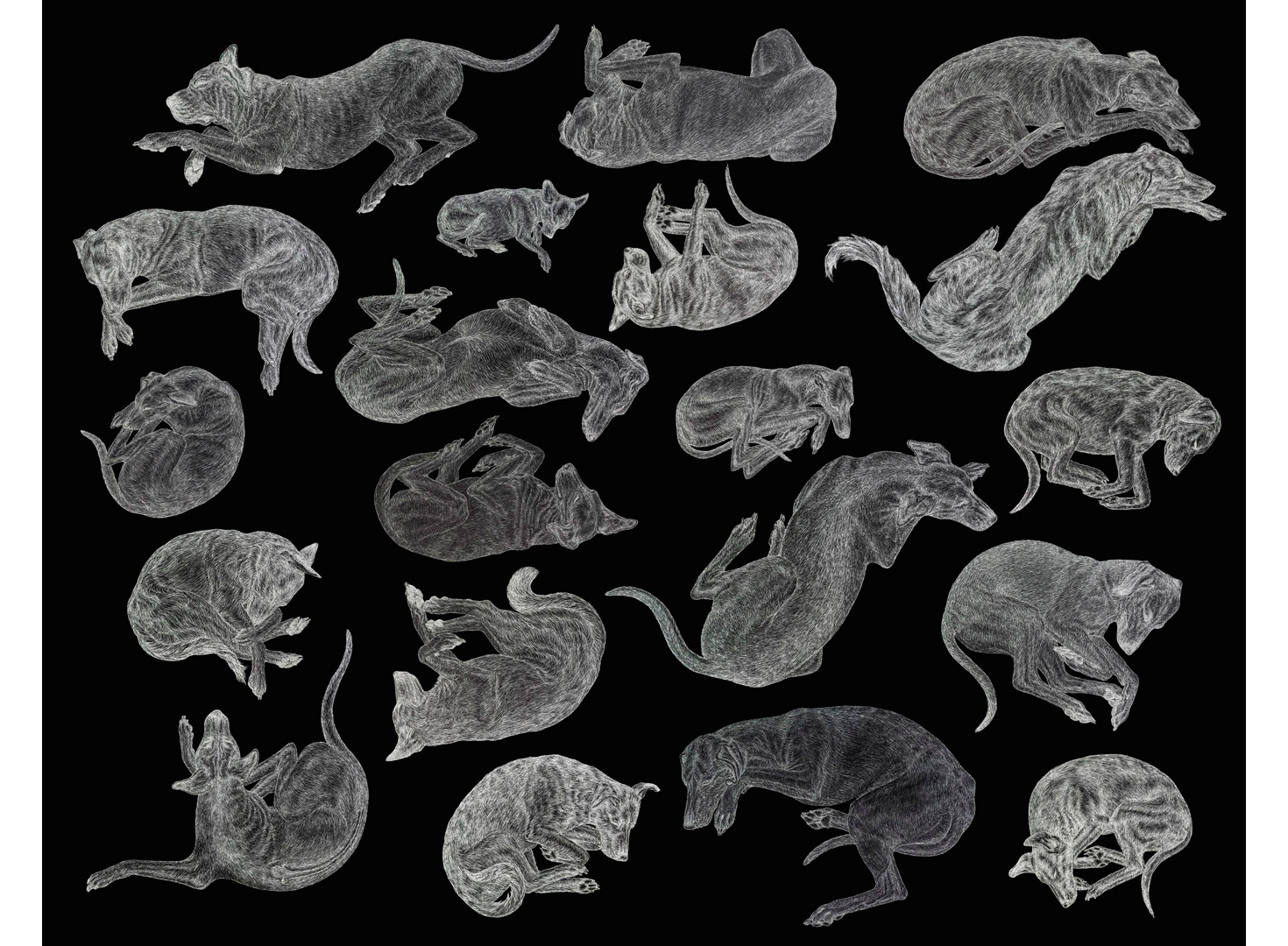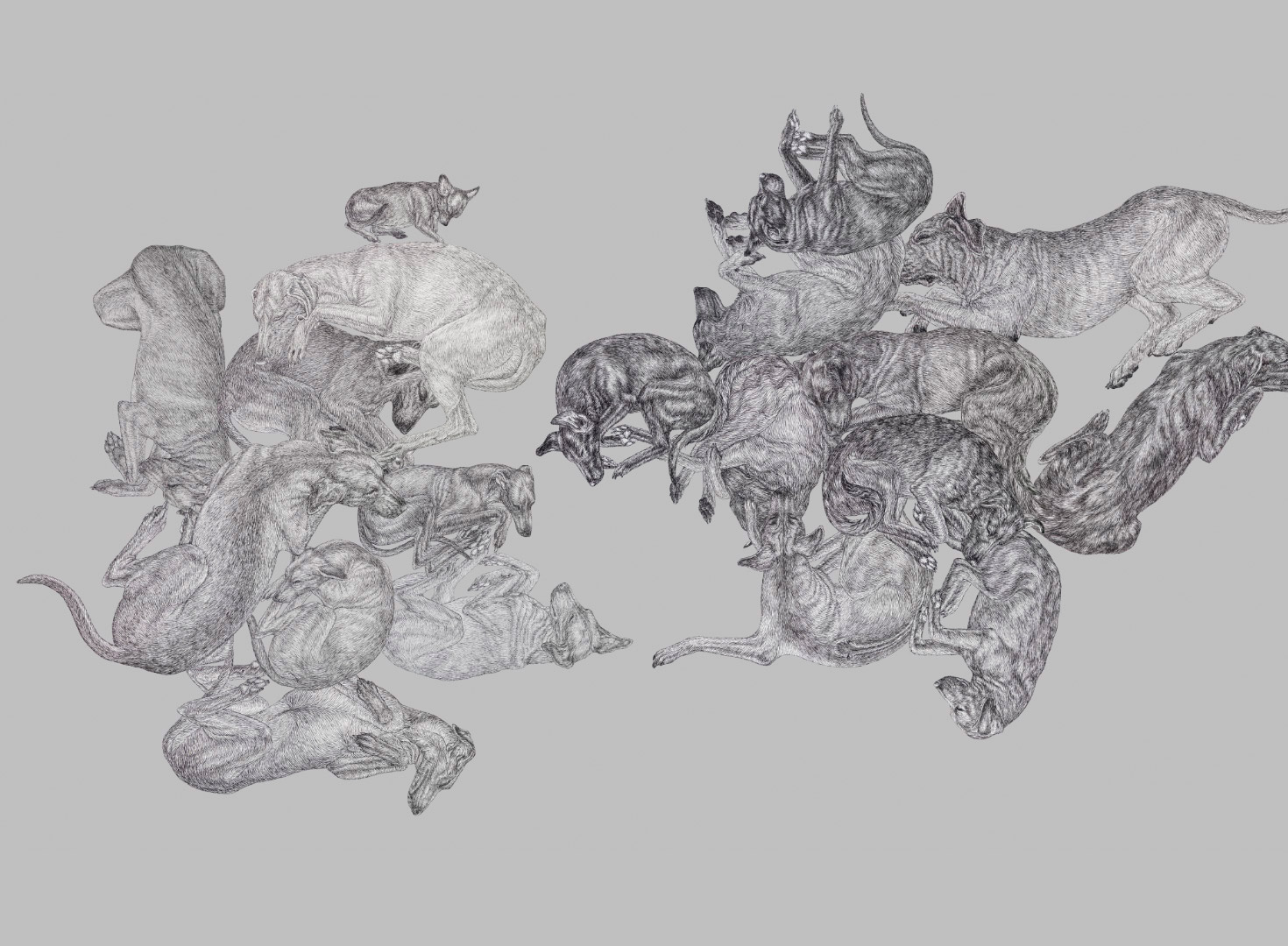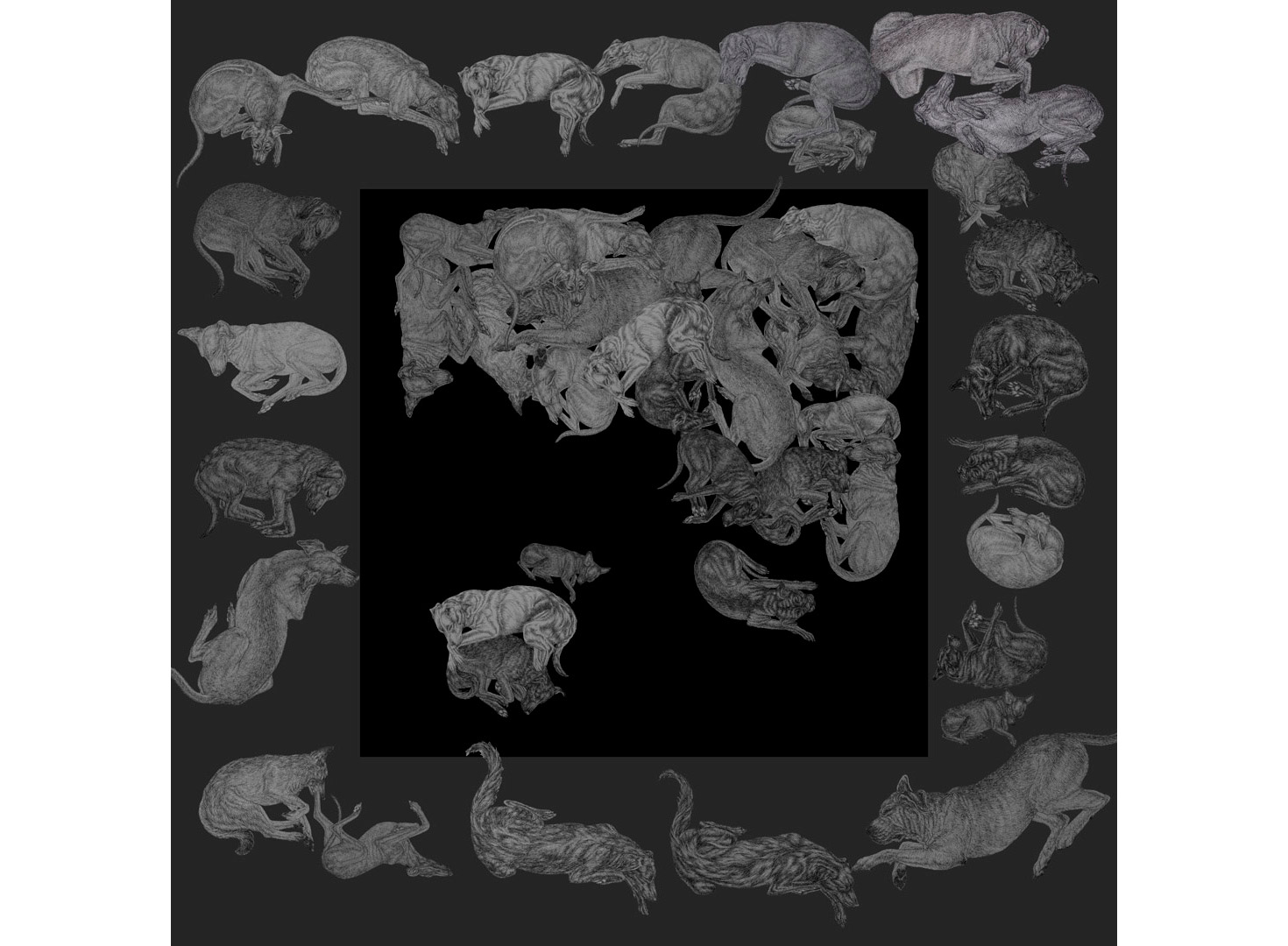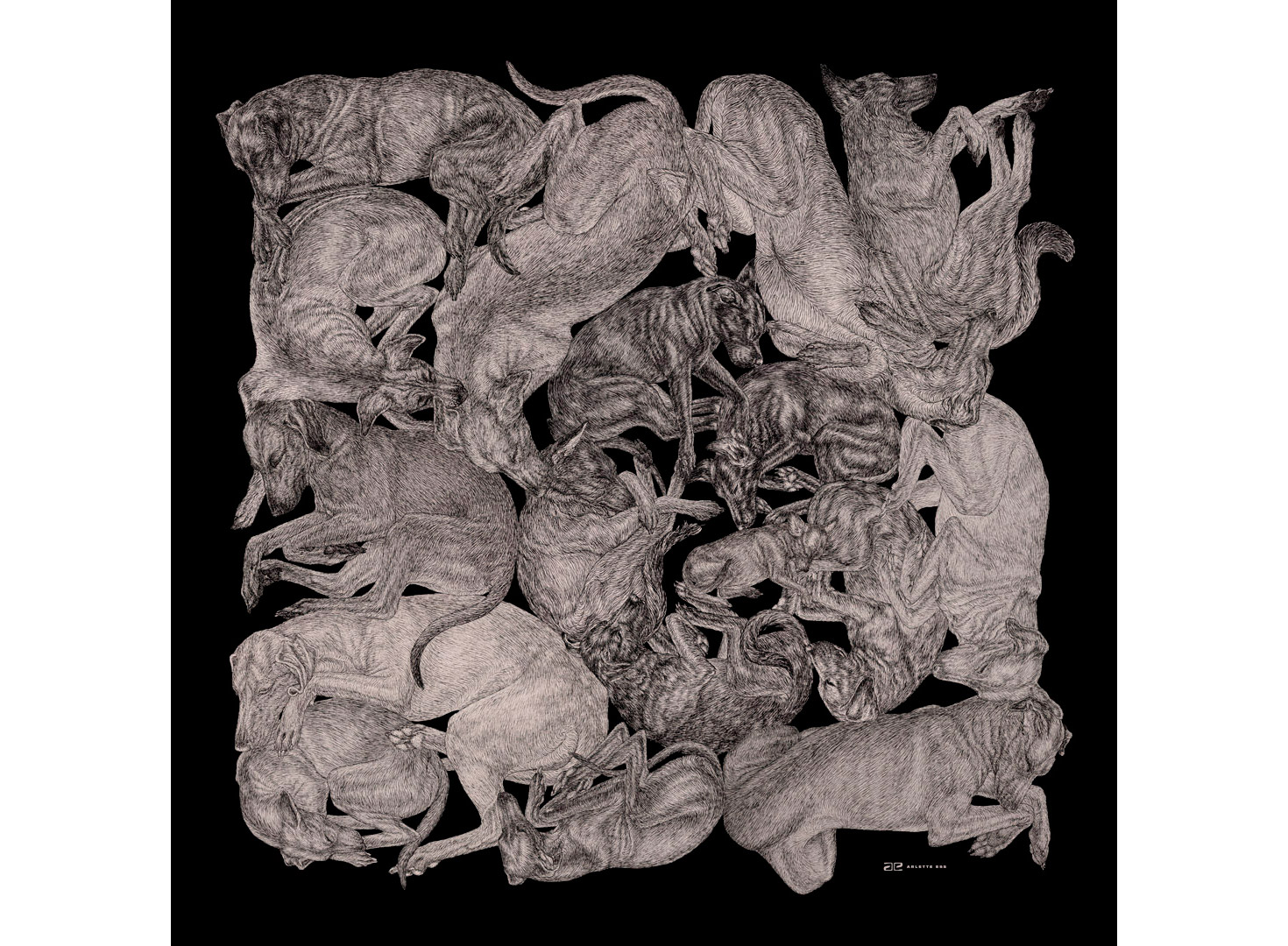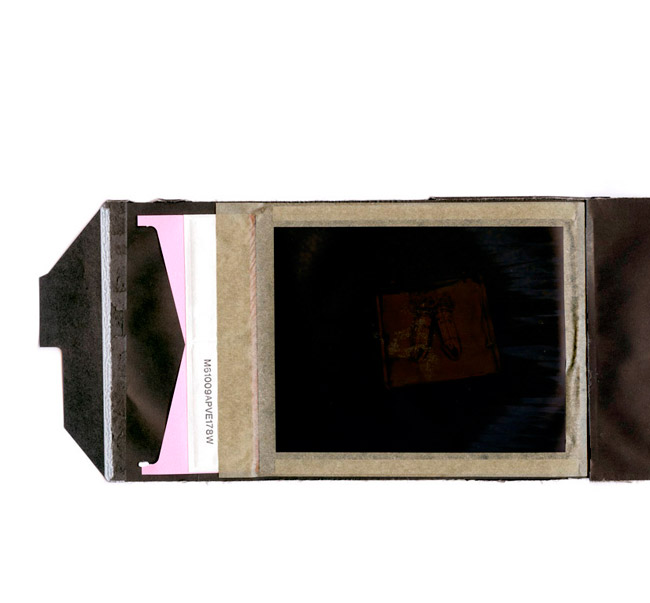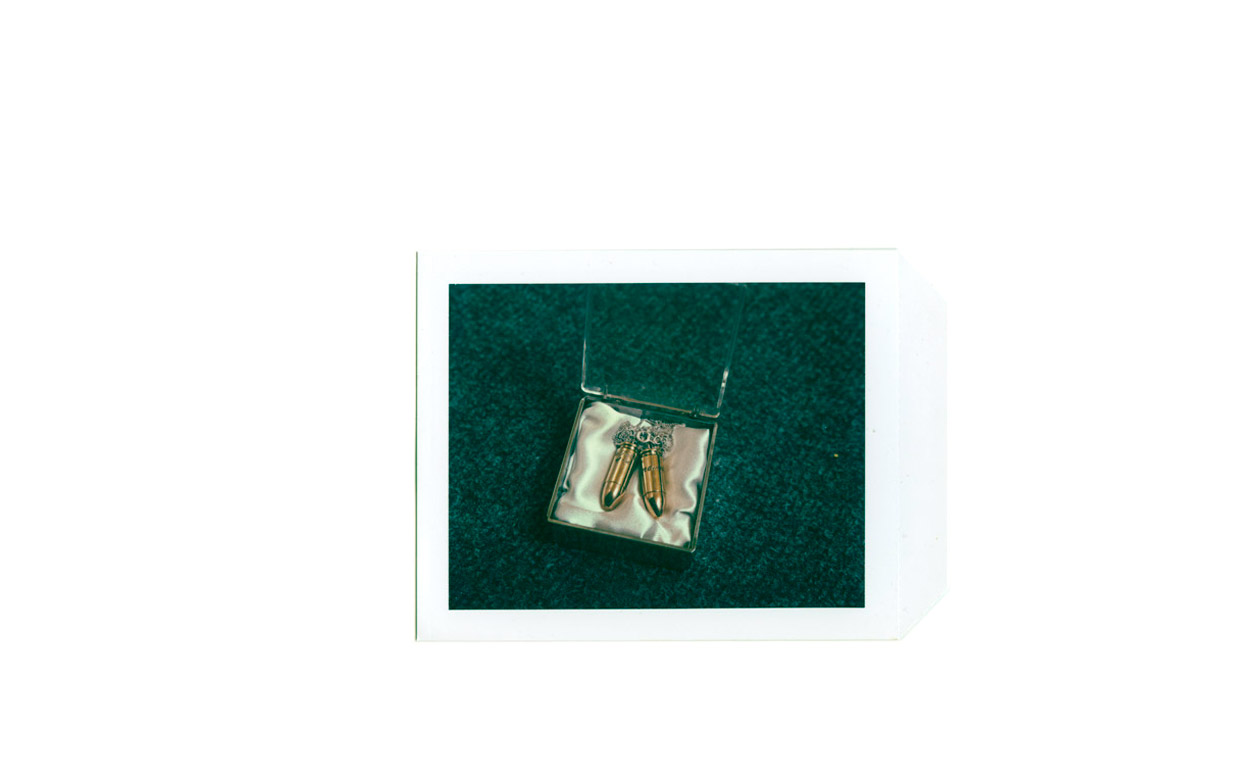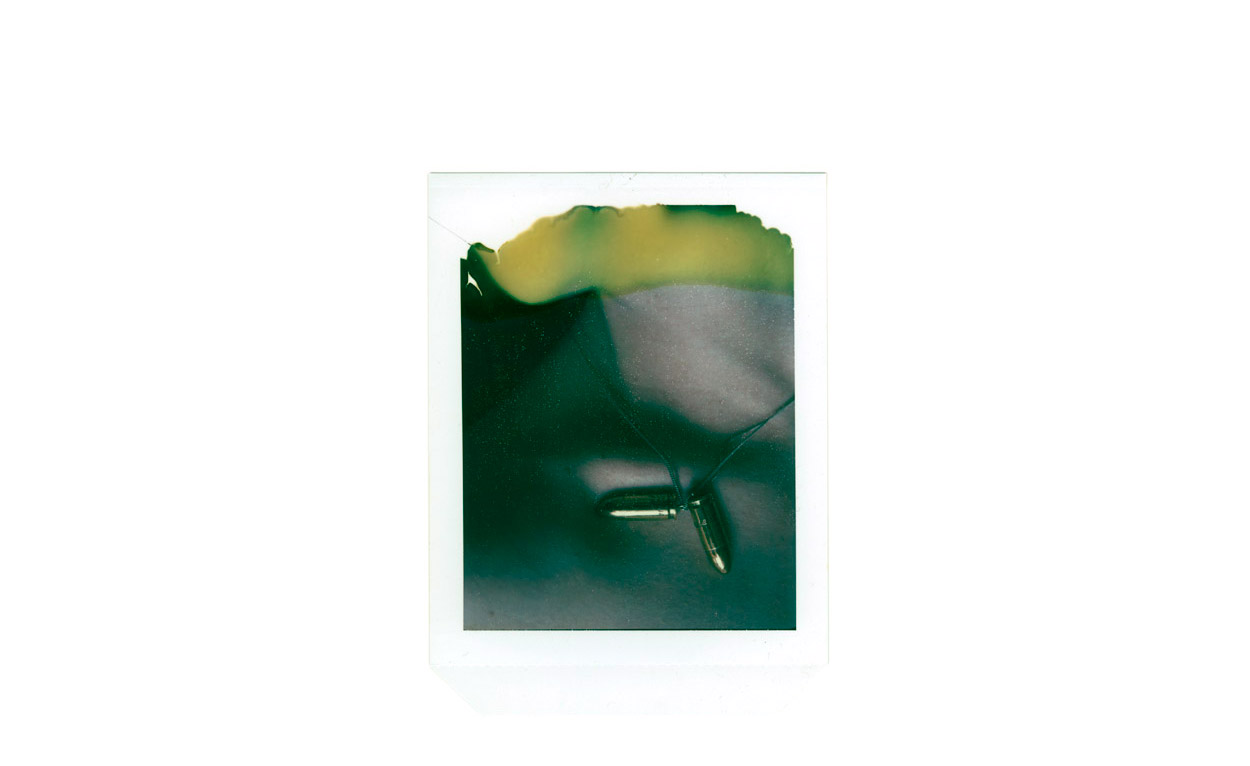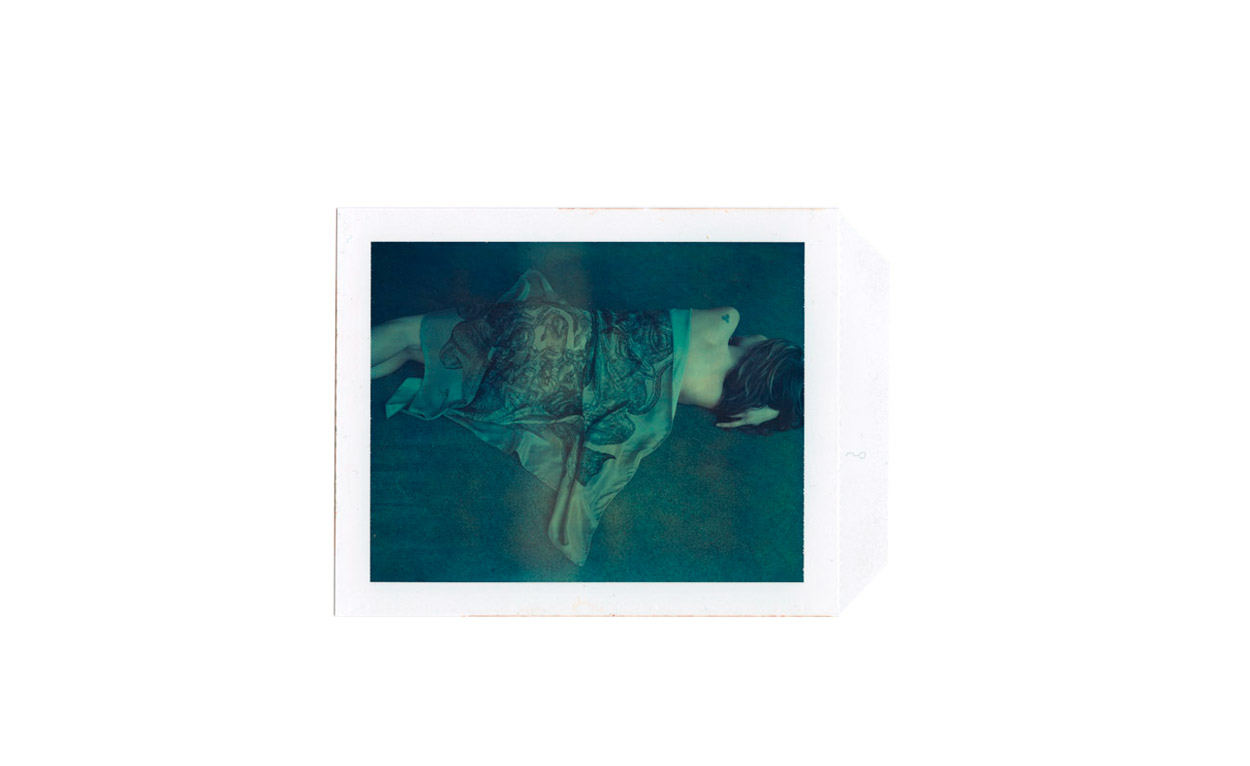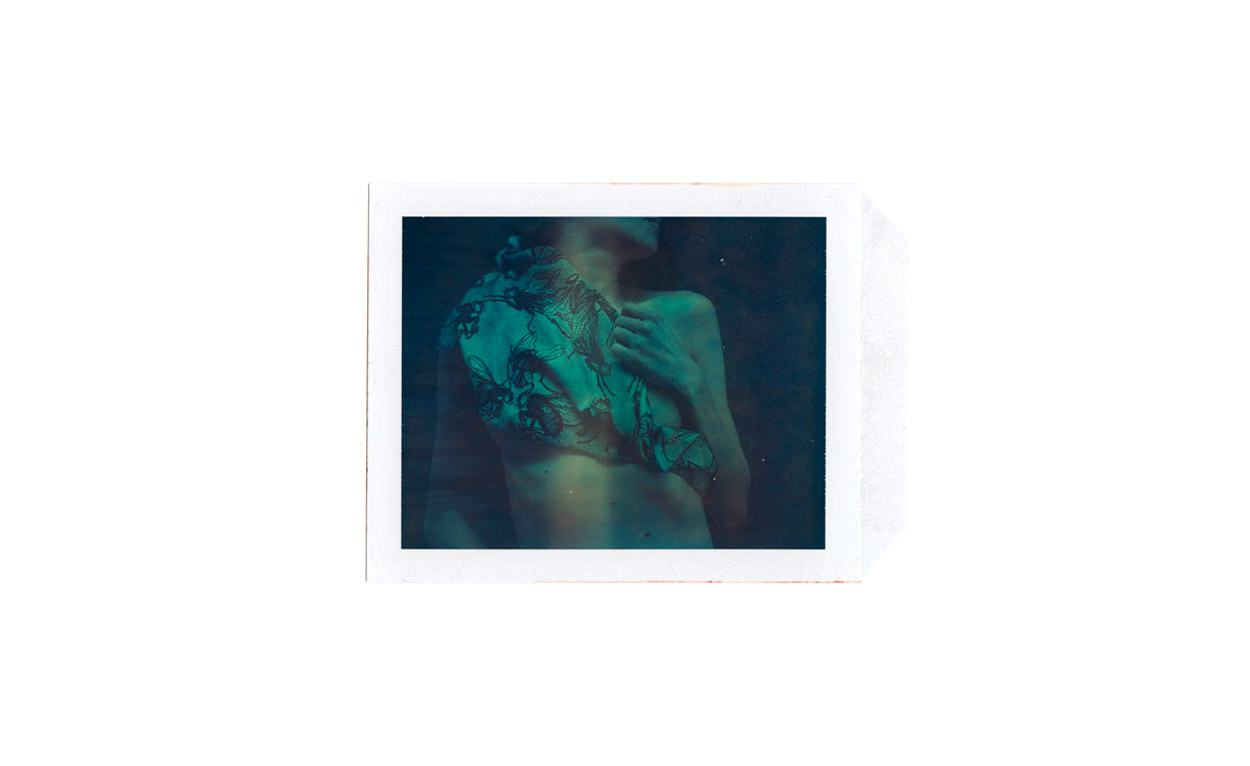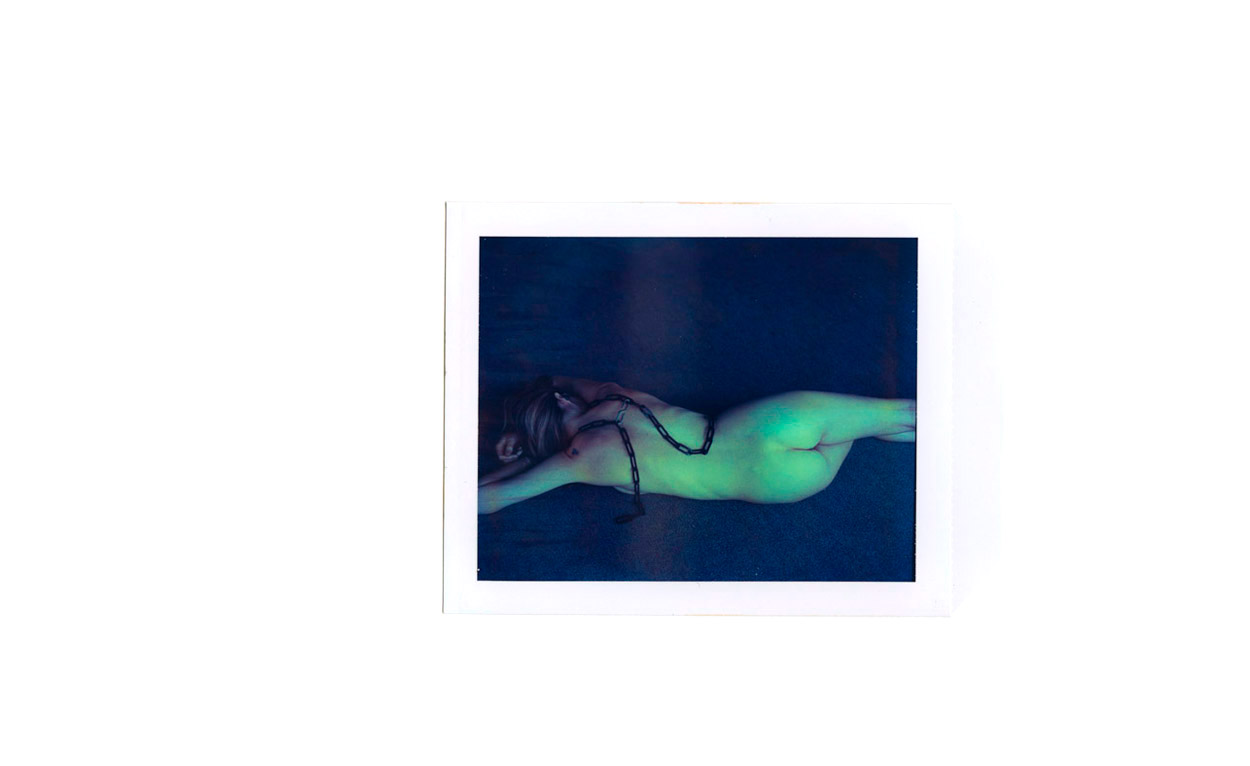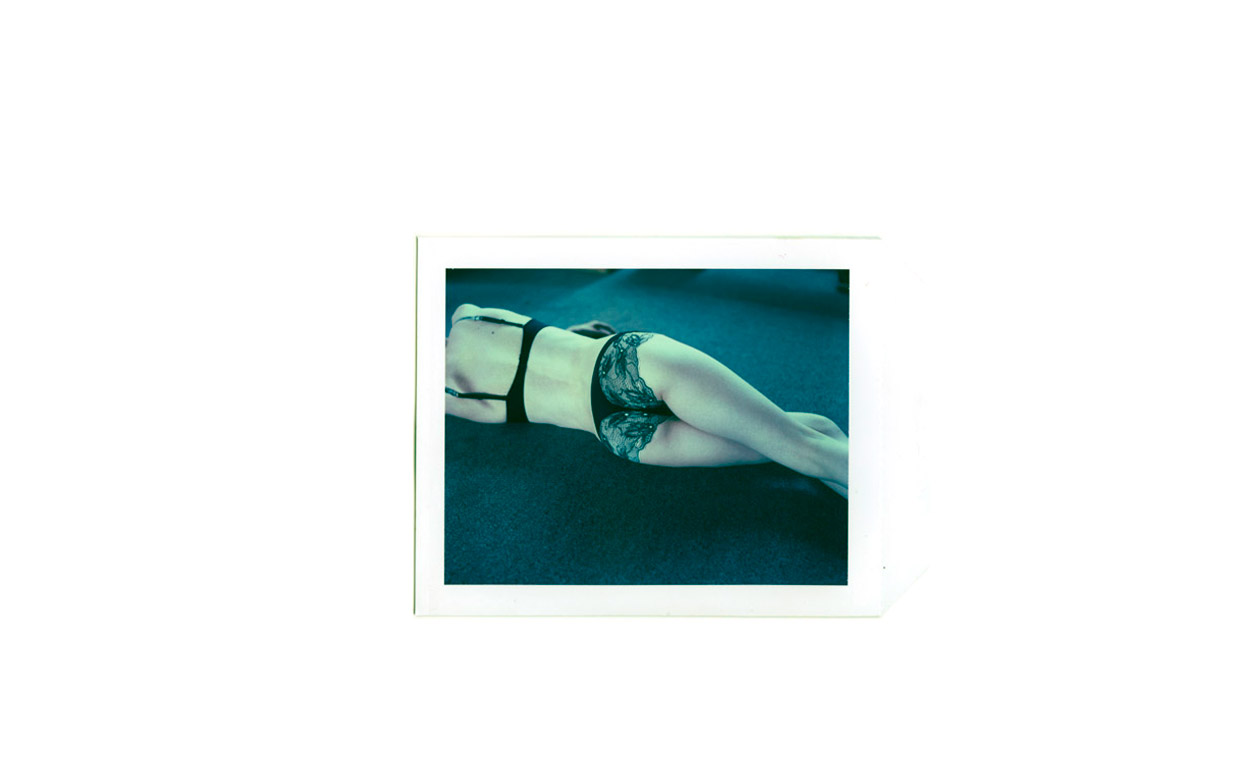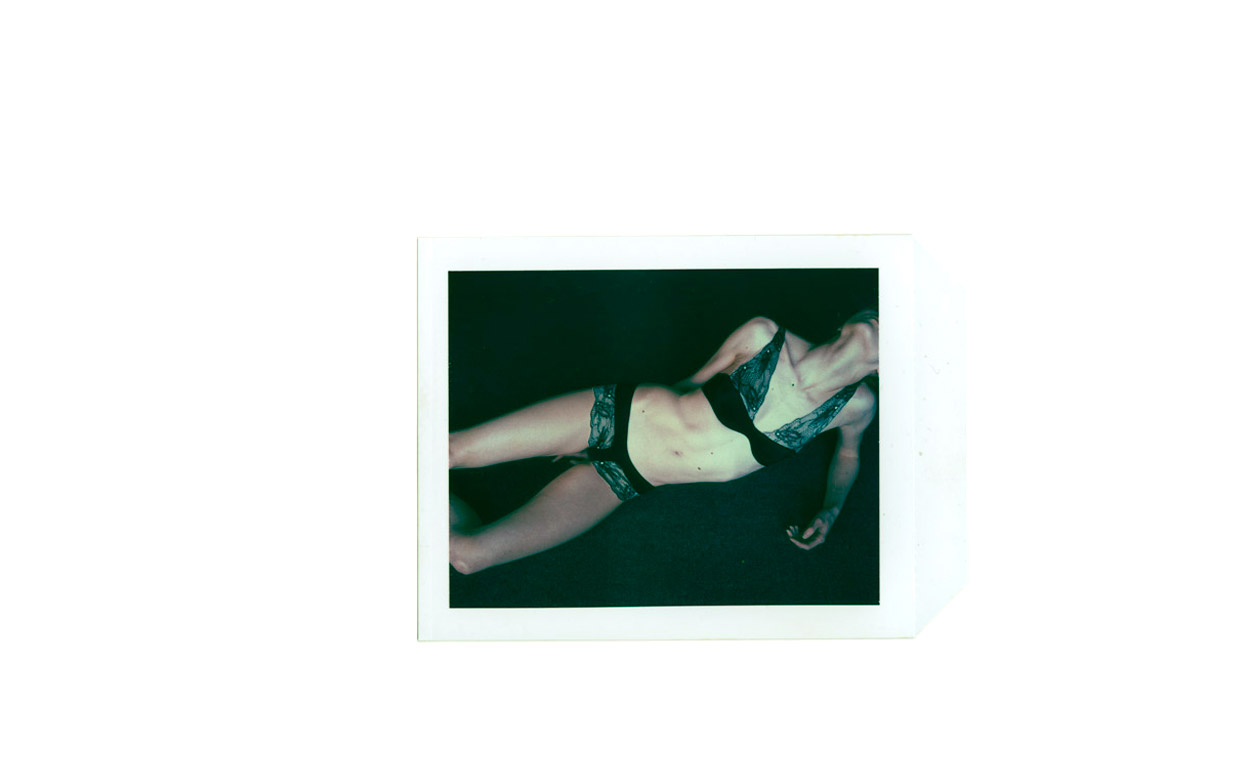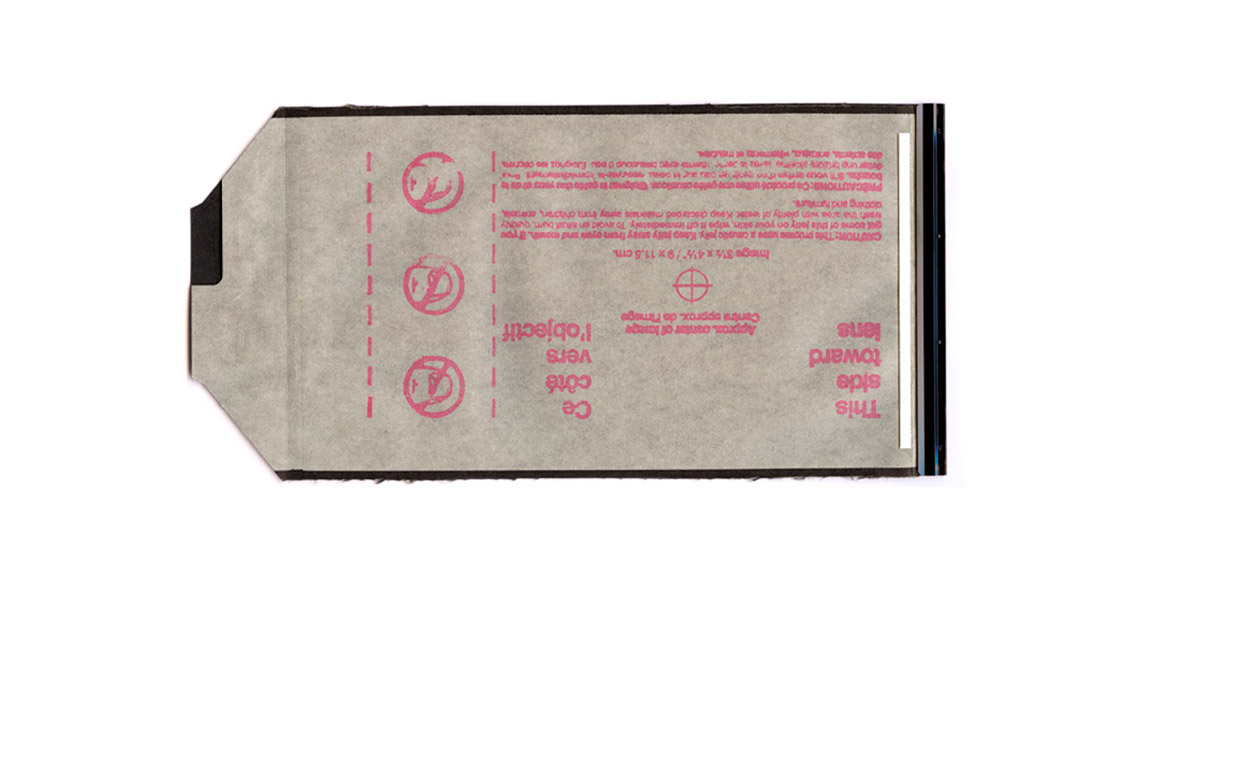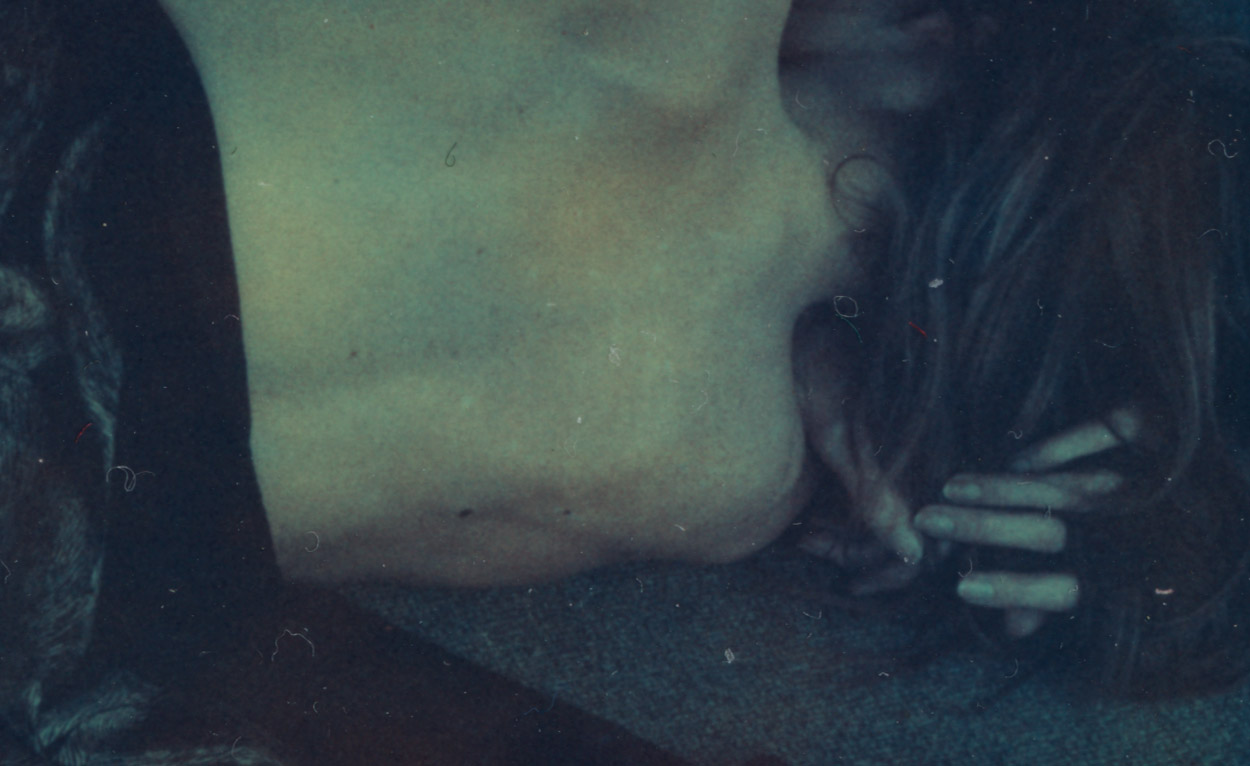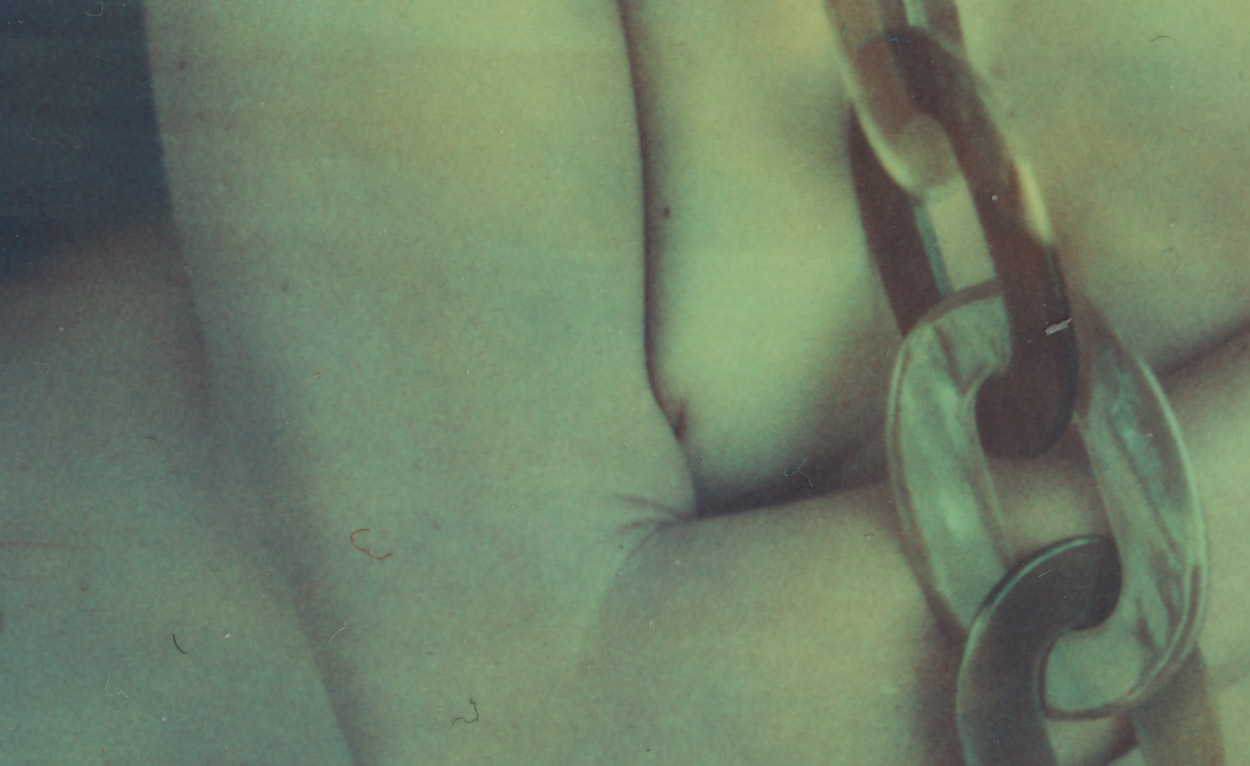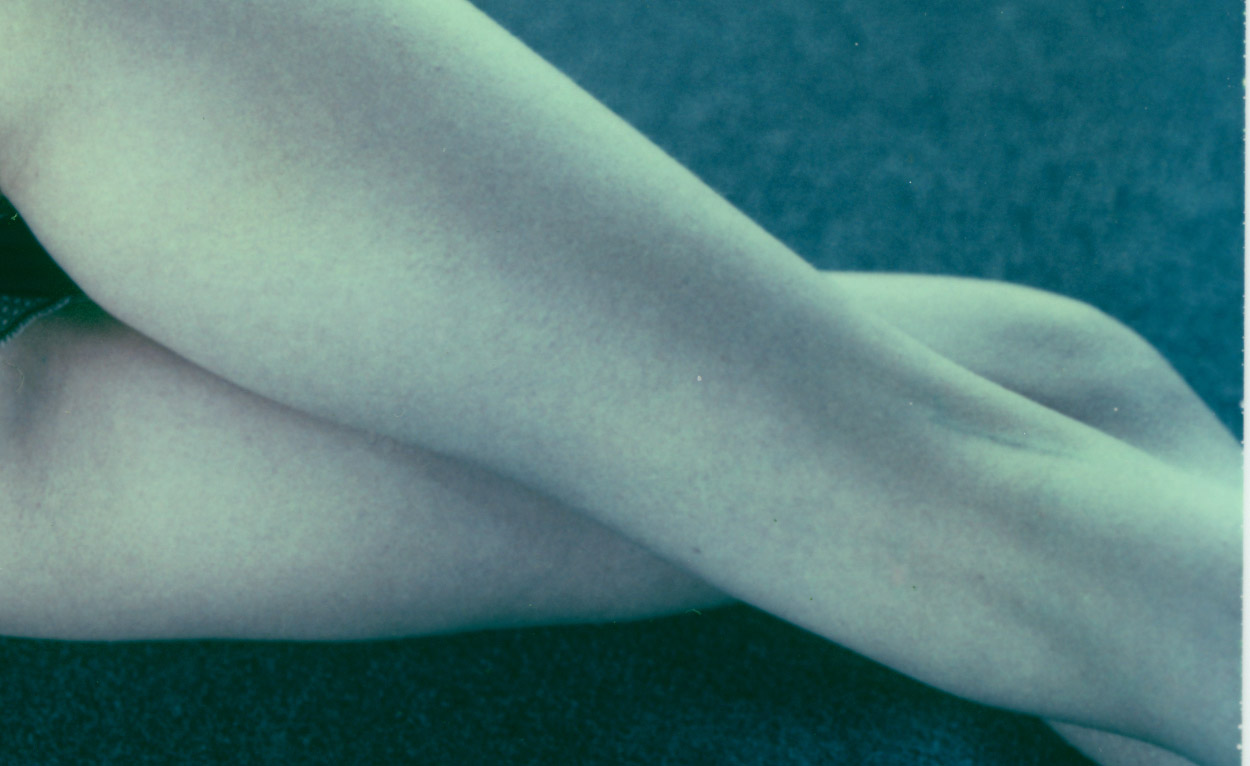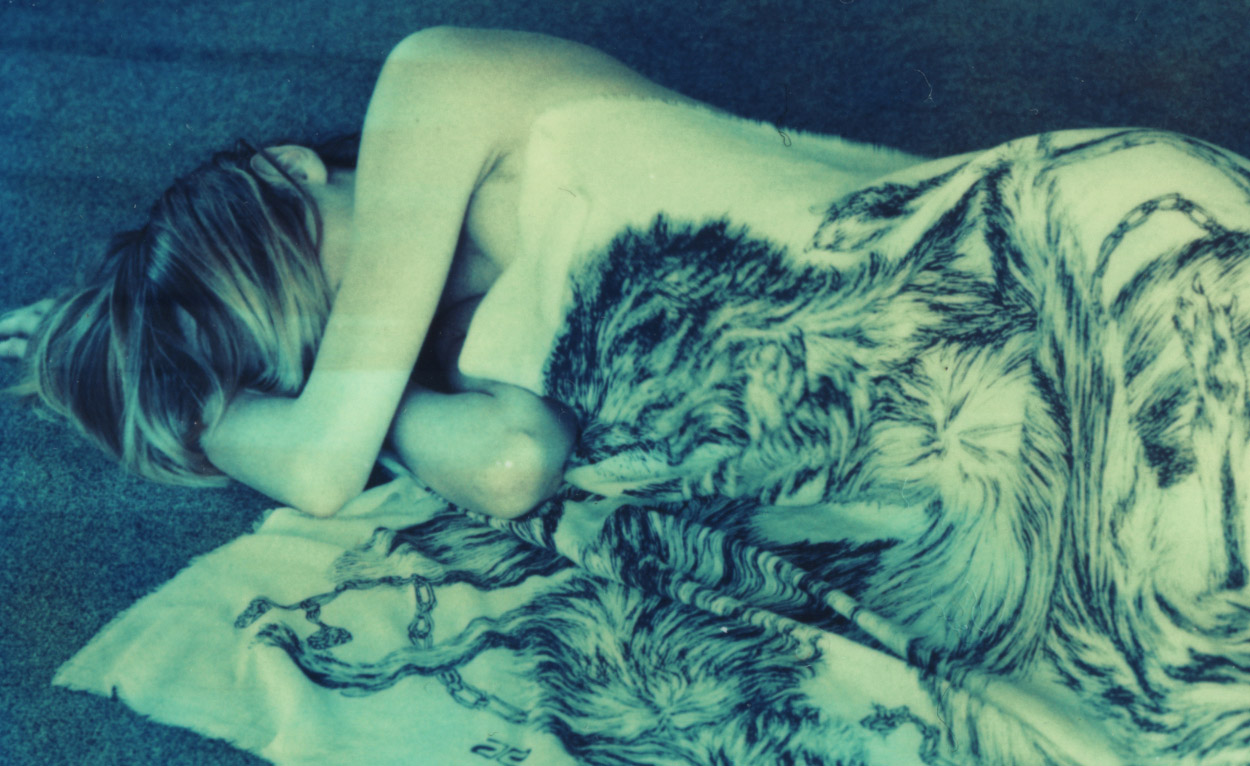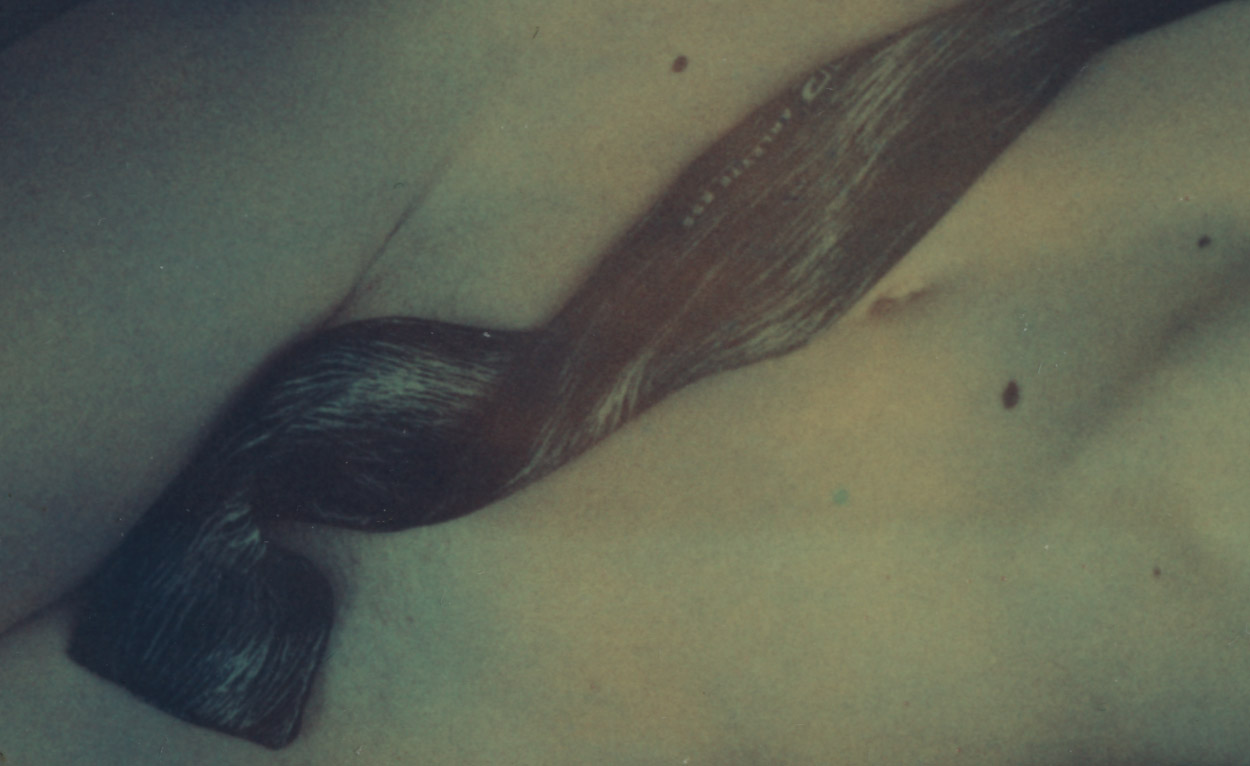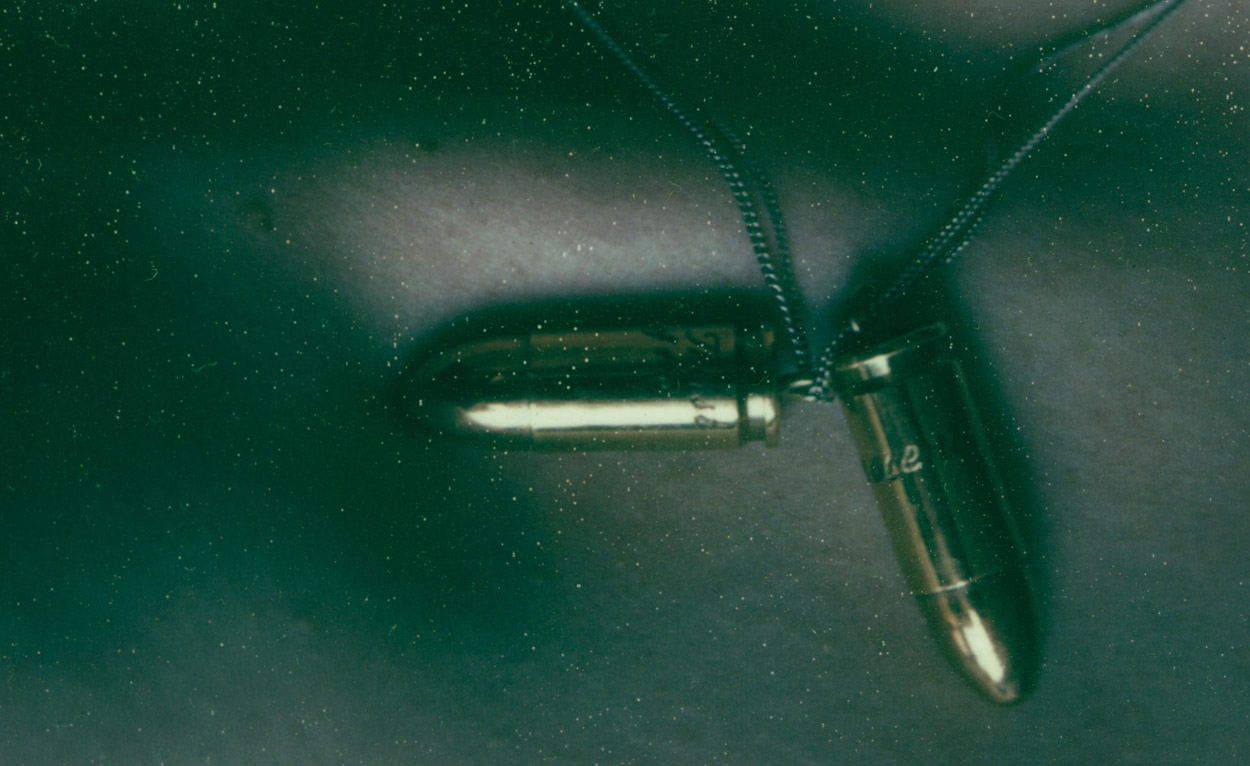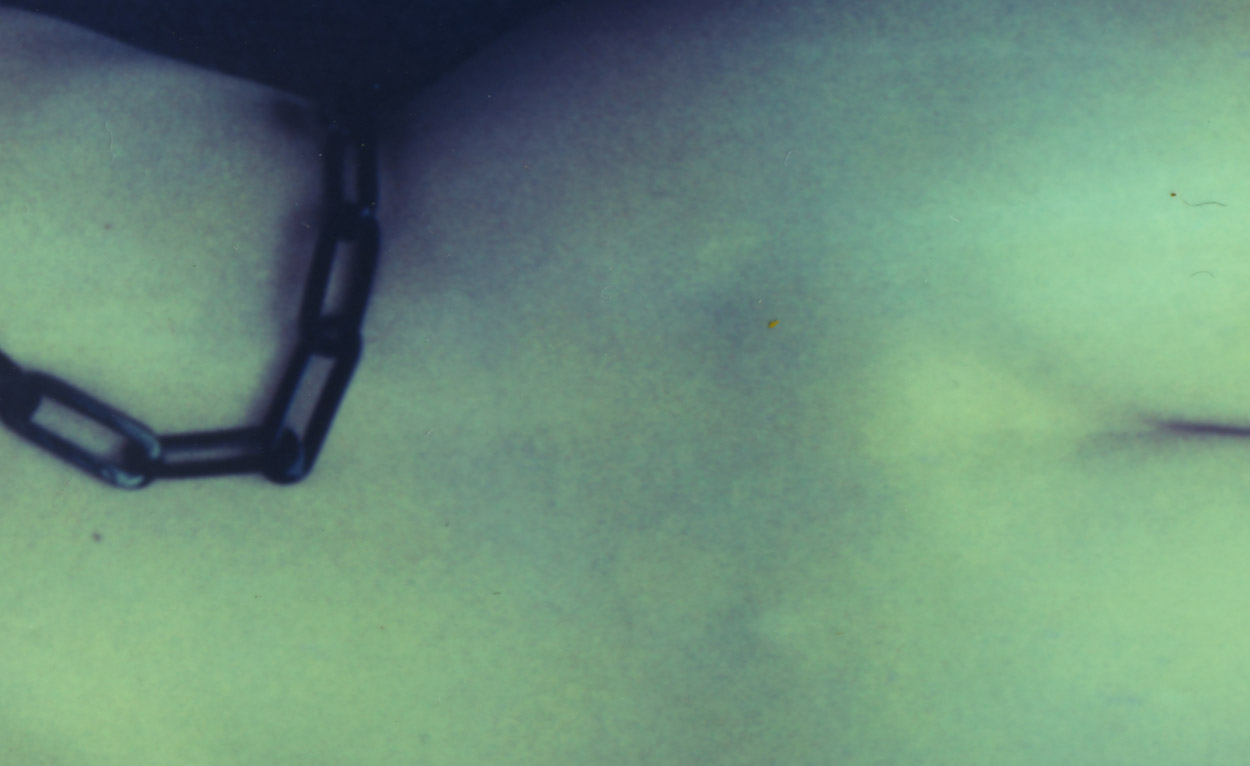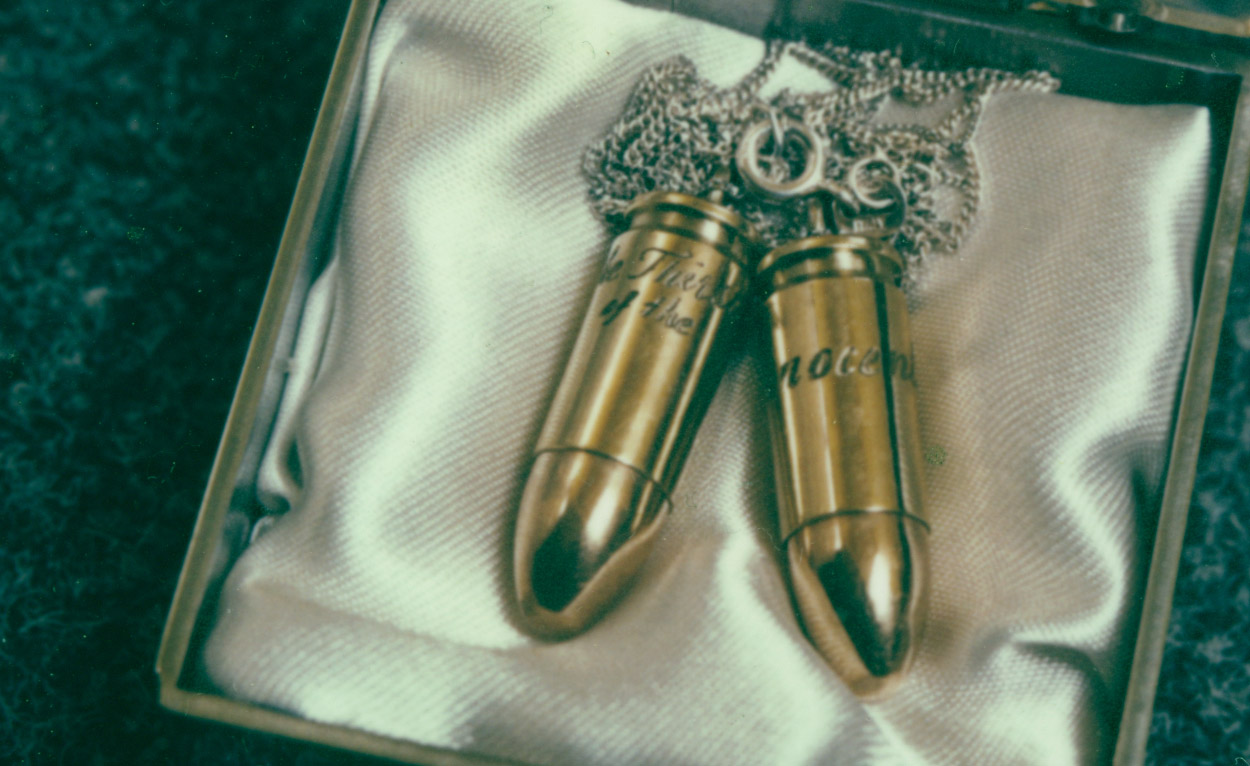Limited Editions Artwork
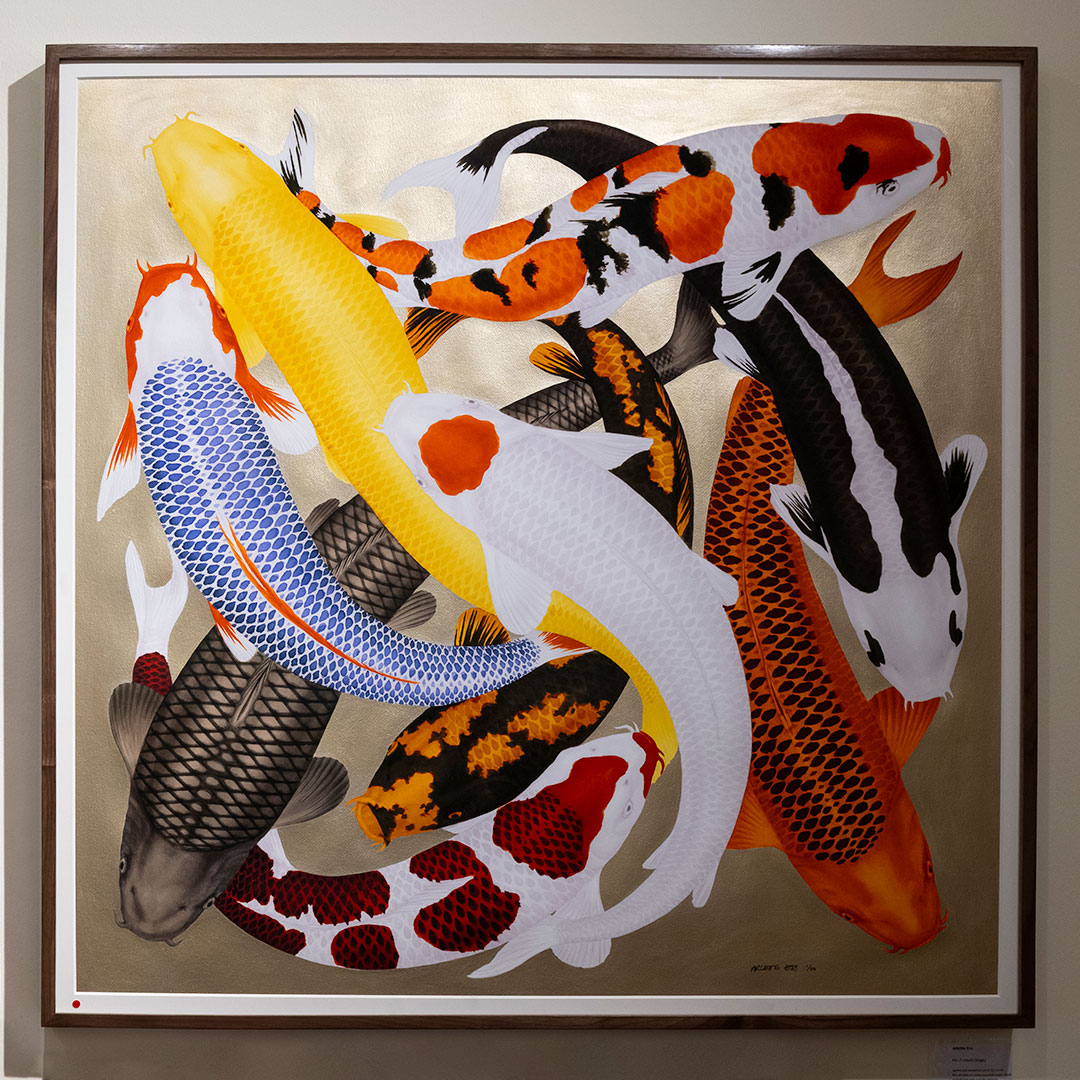
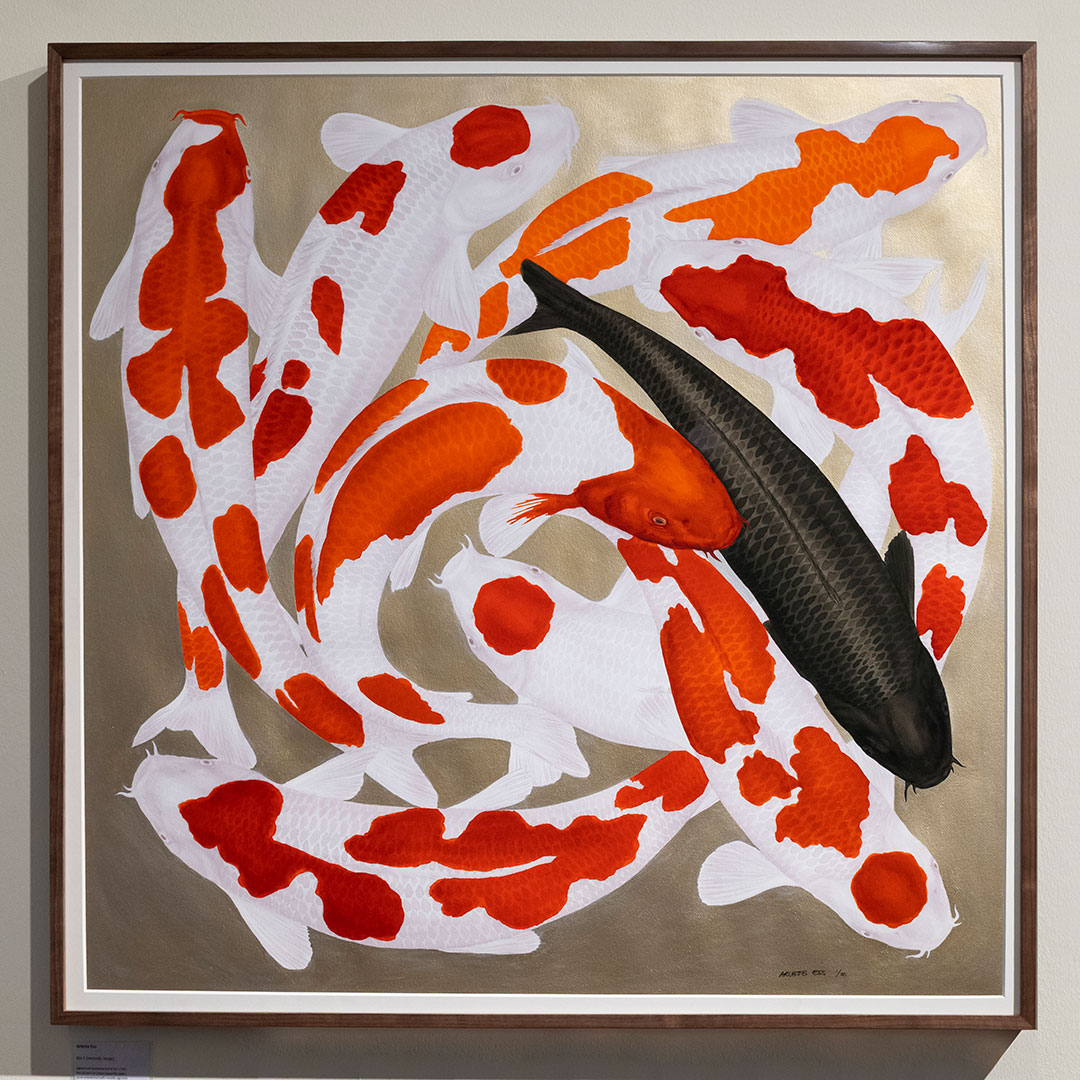
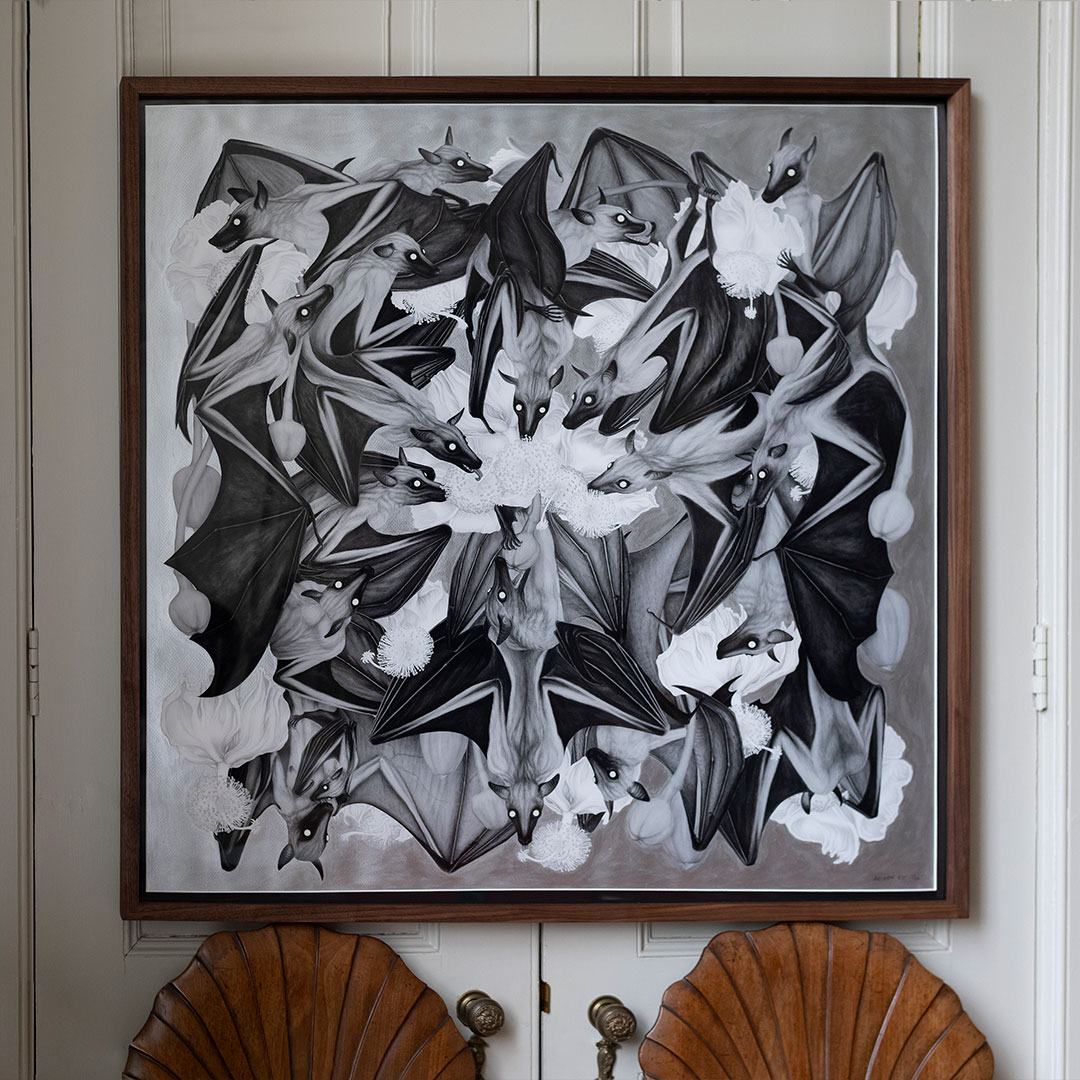
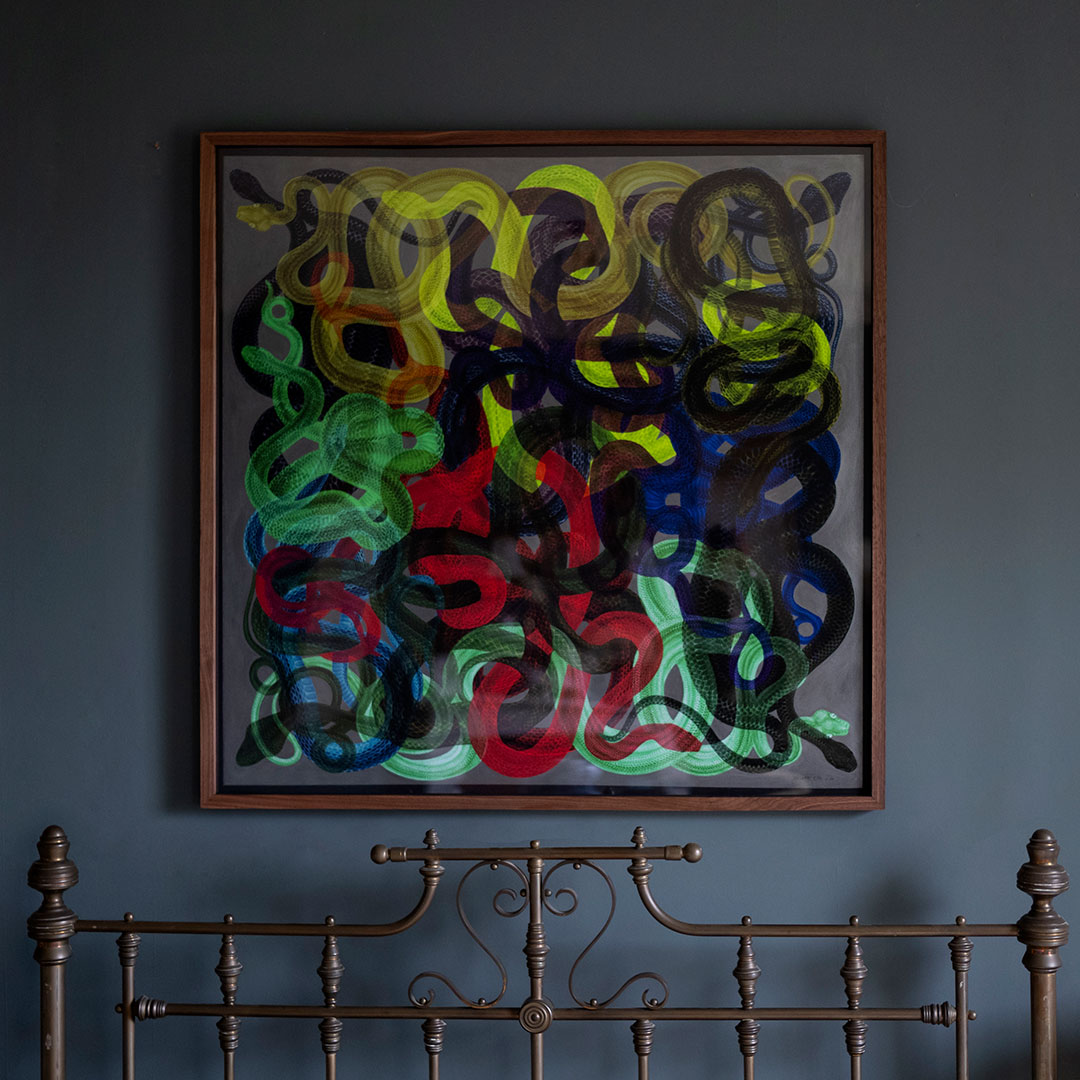
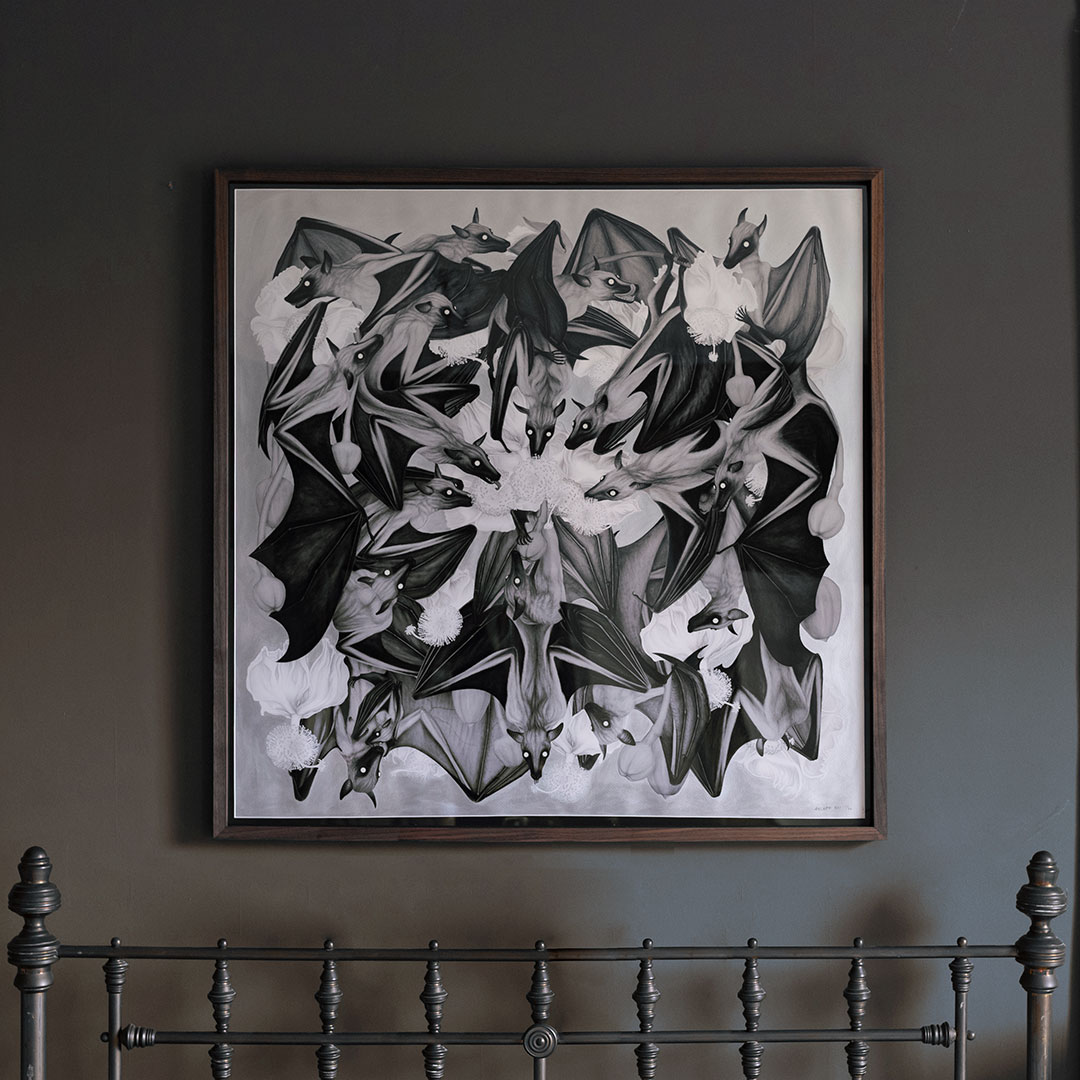
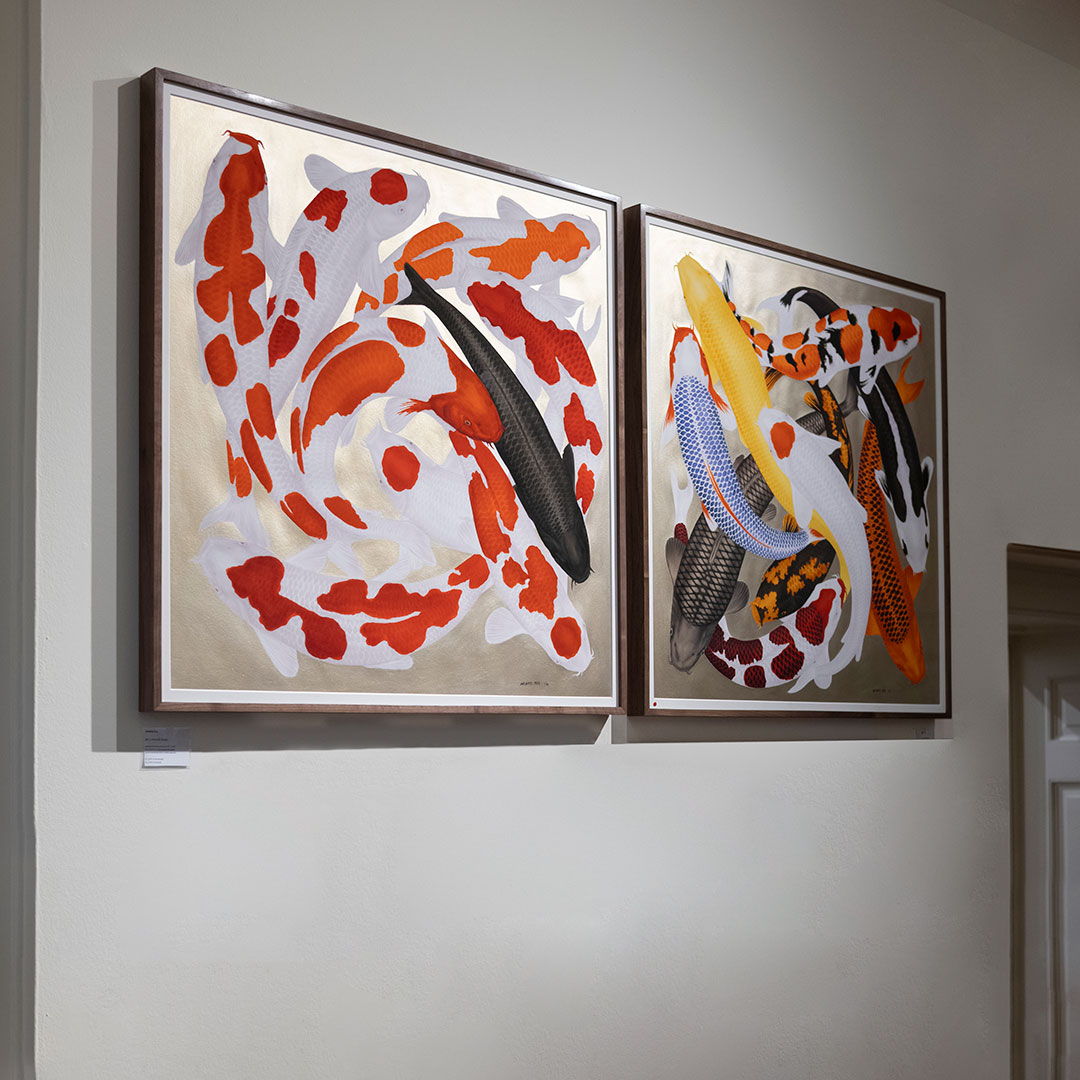
LIMITED EDITIONS
Some of the artwork is available as limited editions in two variations, initially on show in Somerset House for the London Original Print Fair in 2025:
- 100 x 100 cm (ca. 39.4 x 39.4 in) shorter edition of embellished archival fine art prints with hand painted metallic backgrounds, signed and numbered. (Images above). Enquire here (opens in new tab).
- 75 x 75 cm (ca. 29.5 x 29.5 in) archival fine art prints, signed and numbered. (Images below). These are available to order directly here.
Both are giclee prints on heavyweight Canson Aquarelle fine art paper in archival museum quality, available framed or unframed.
Works currently available are KOI I, KOI II, BATS I, and SNAKES I, with more to come.
To receive more info and a catalog (pdf) please enquire here.
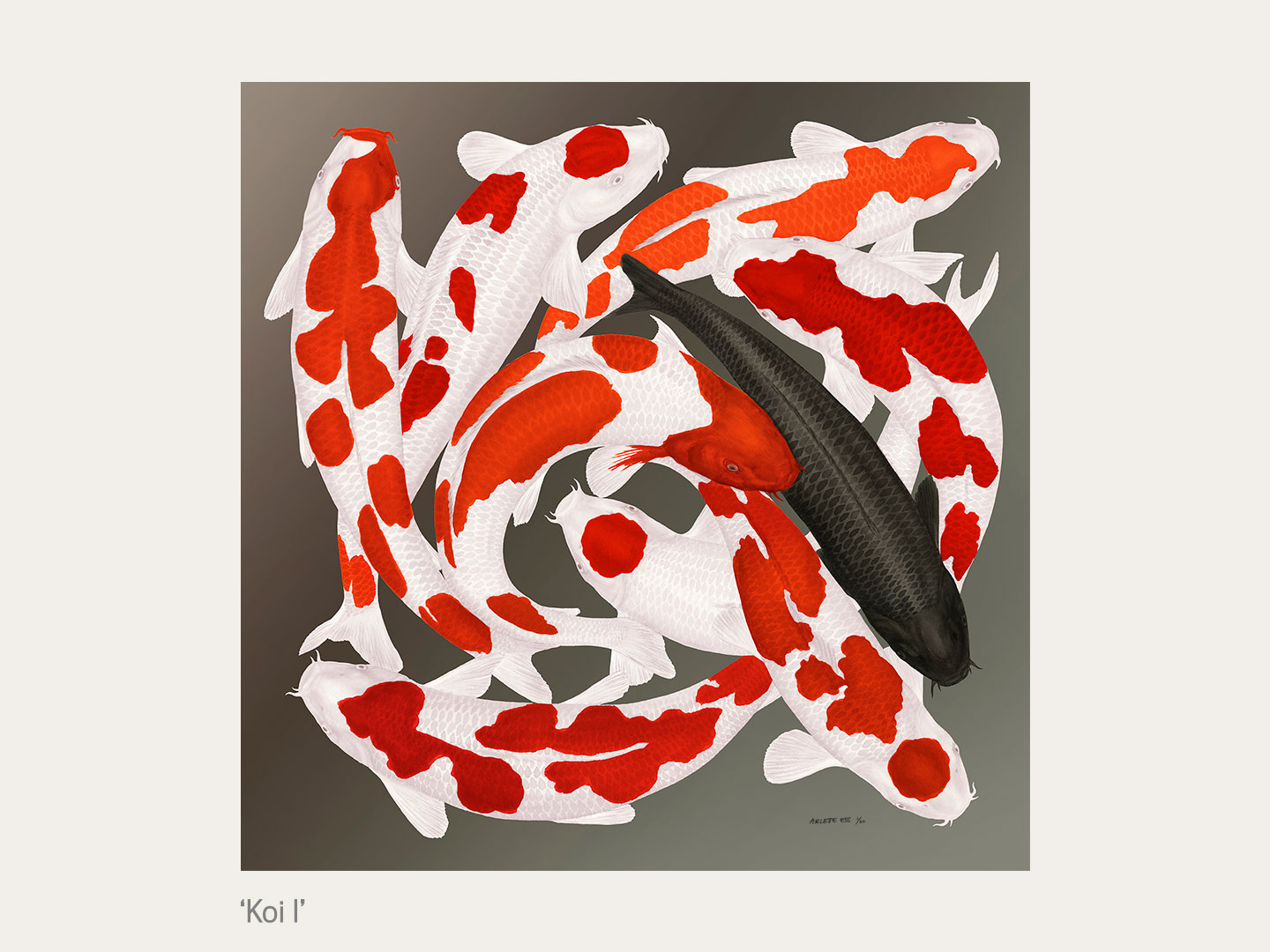
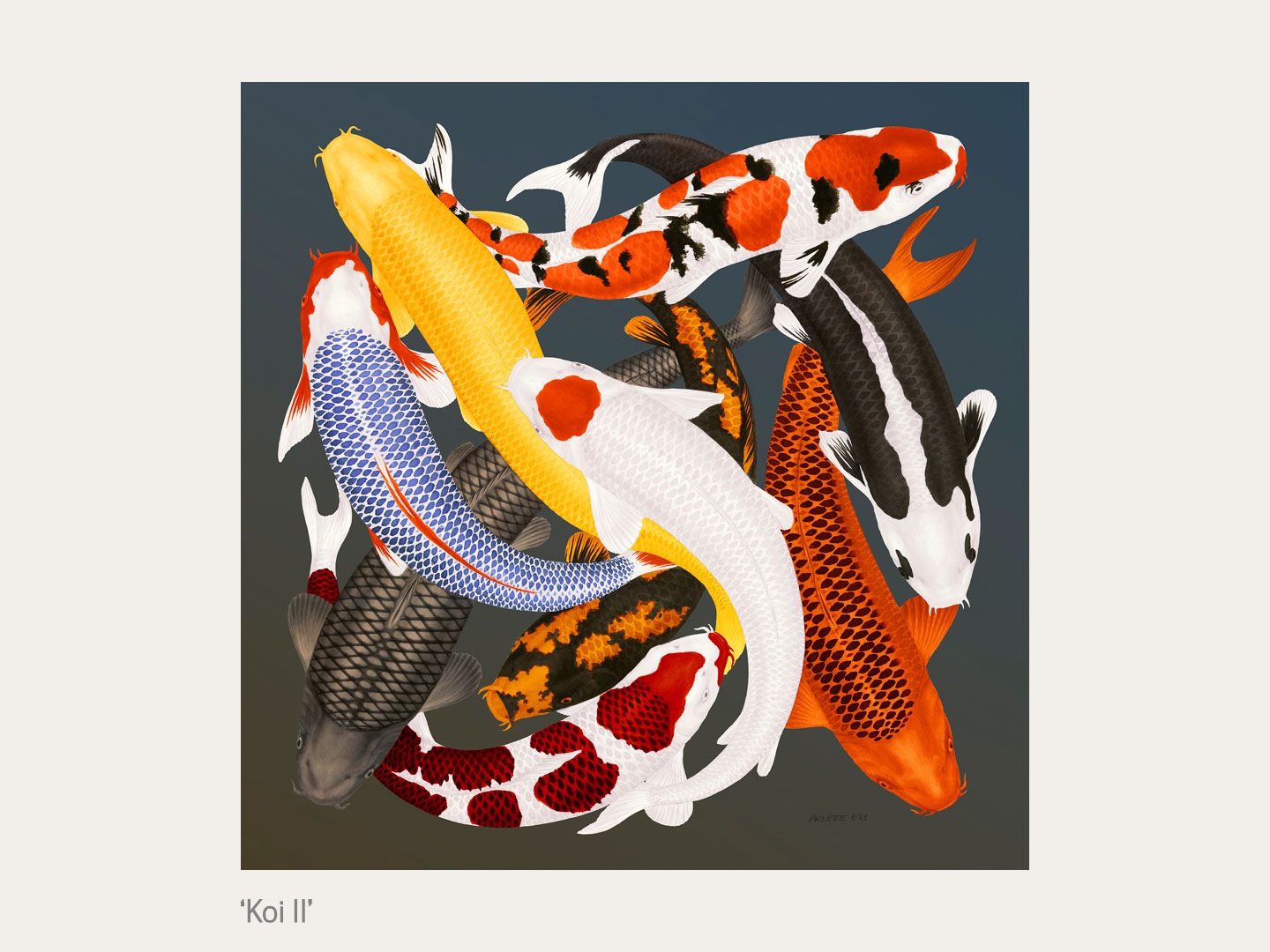
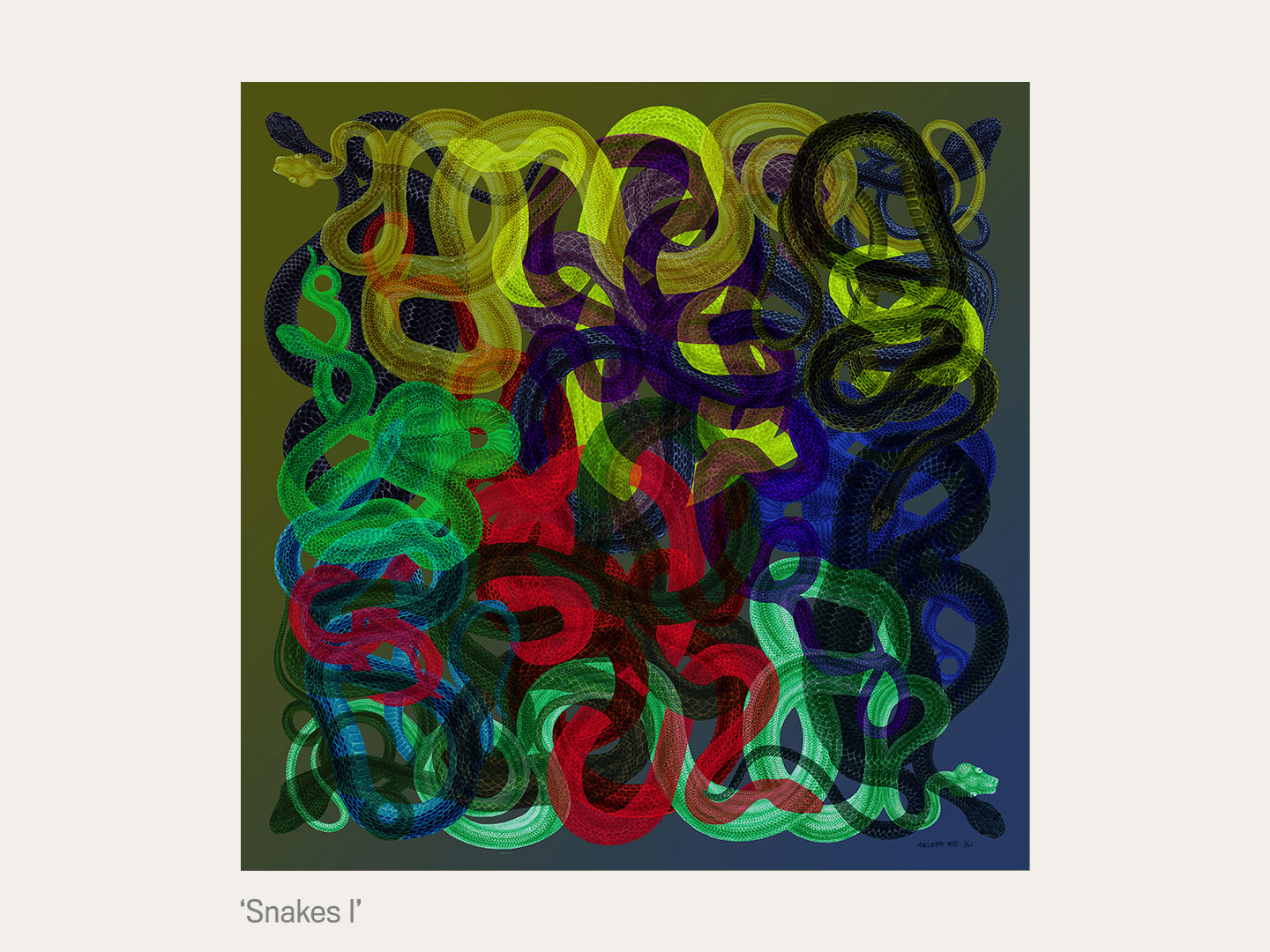
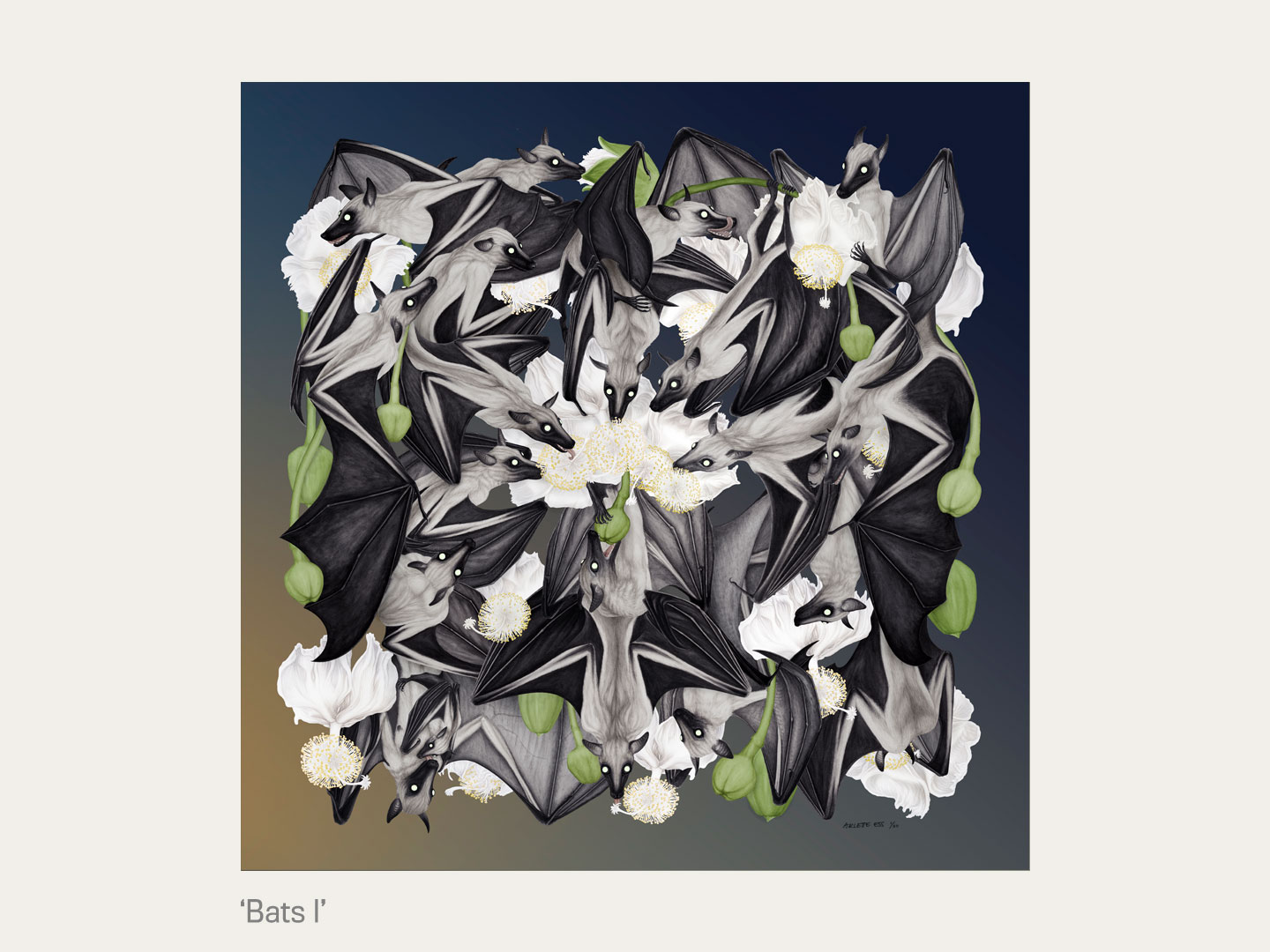
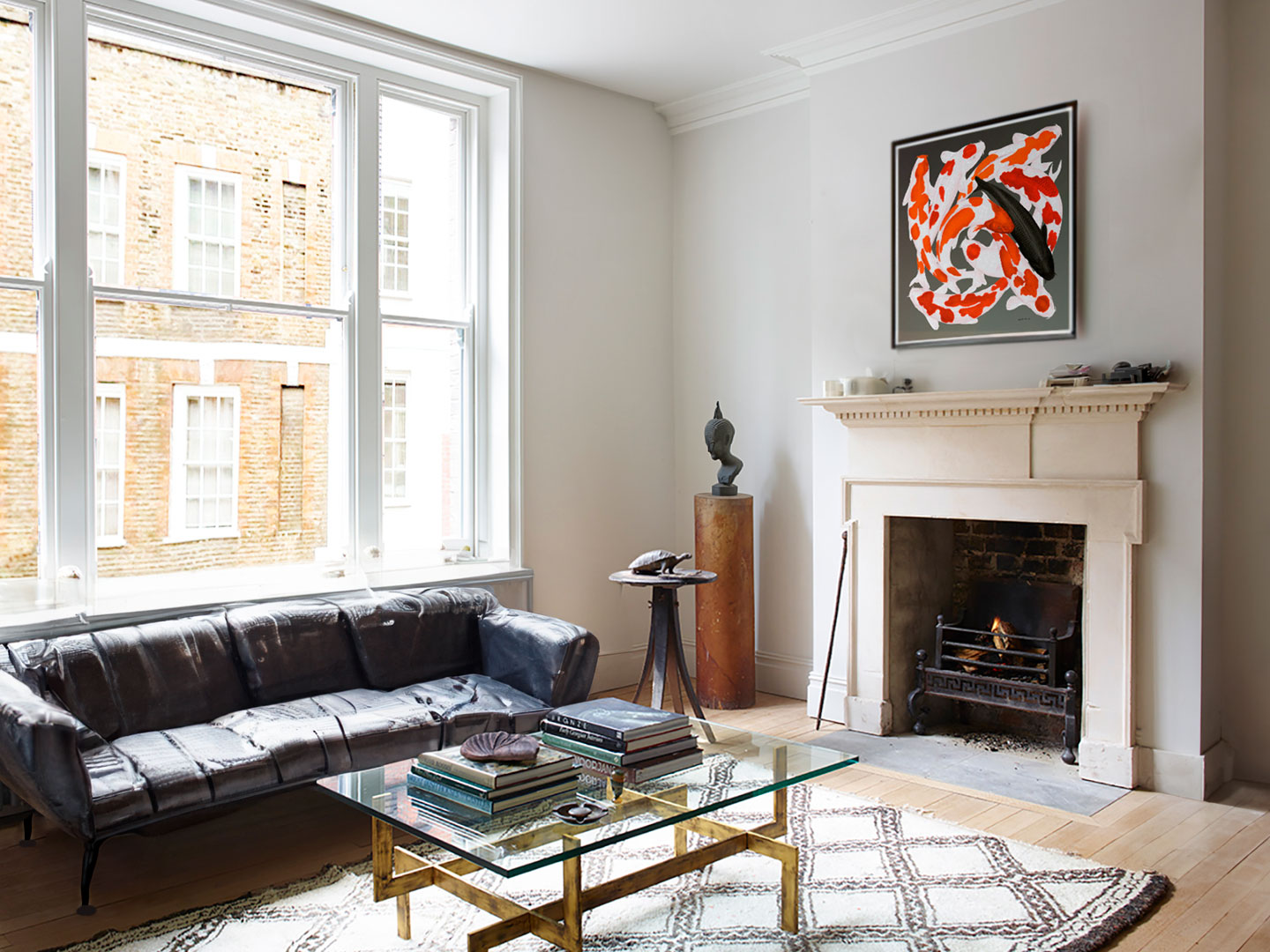
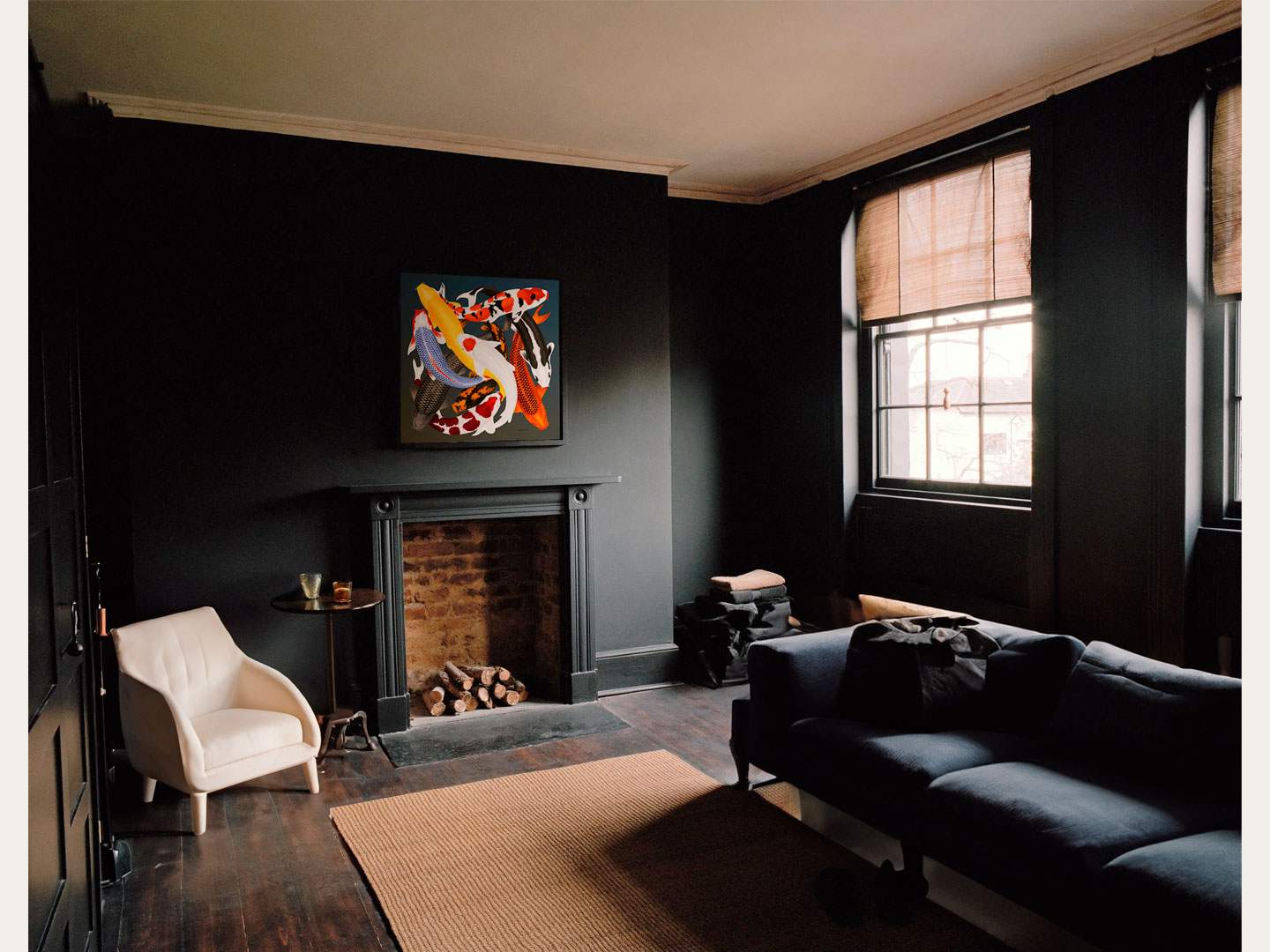
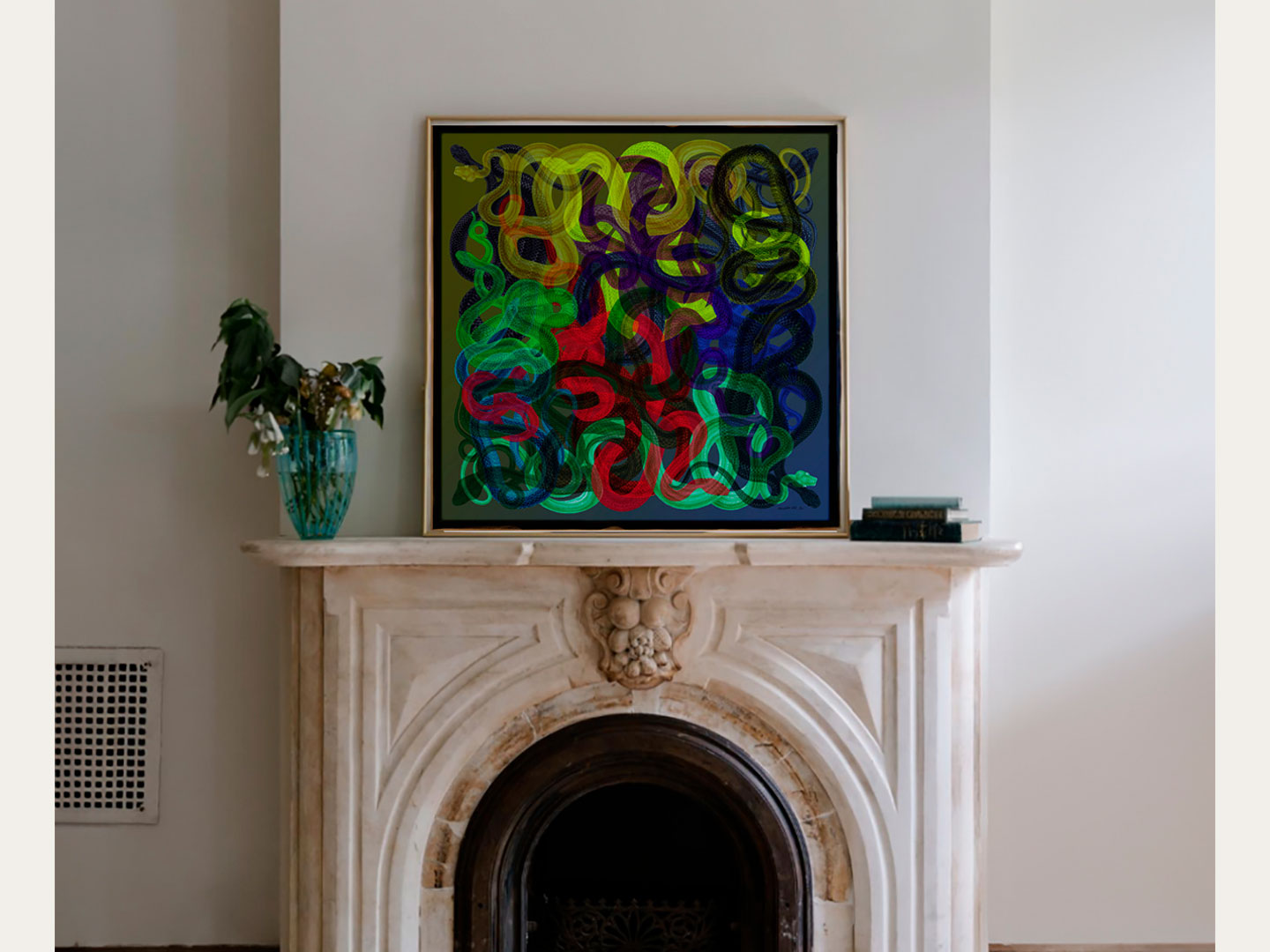
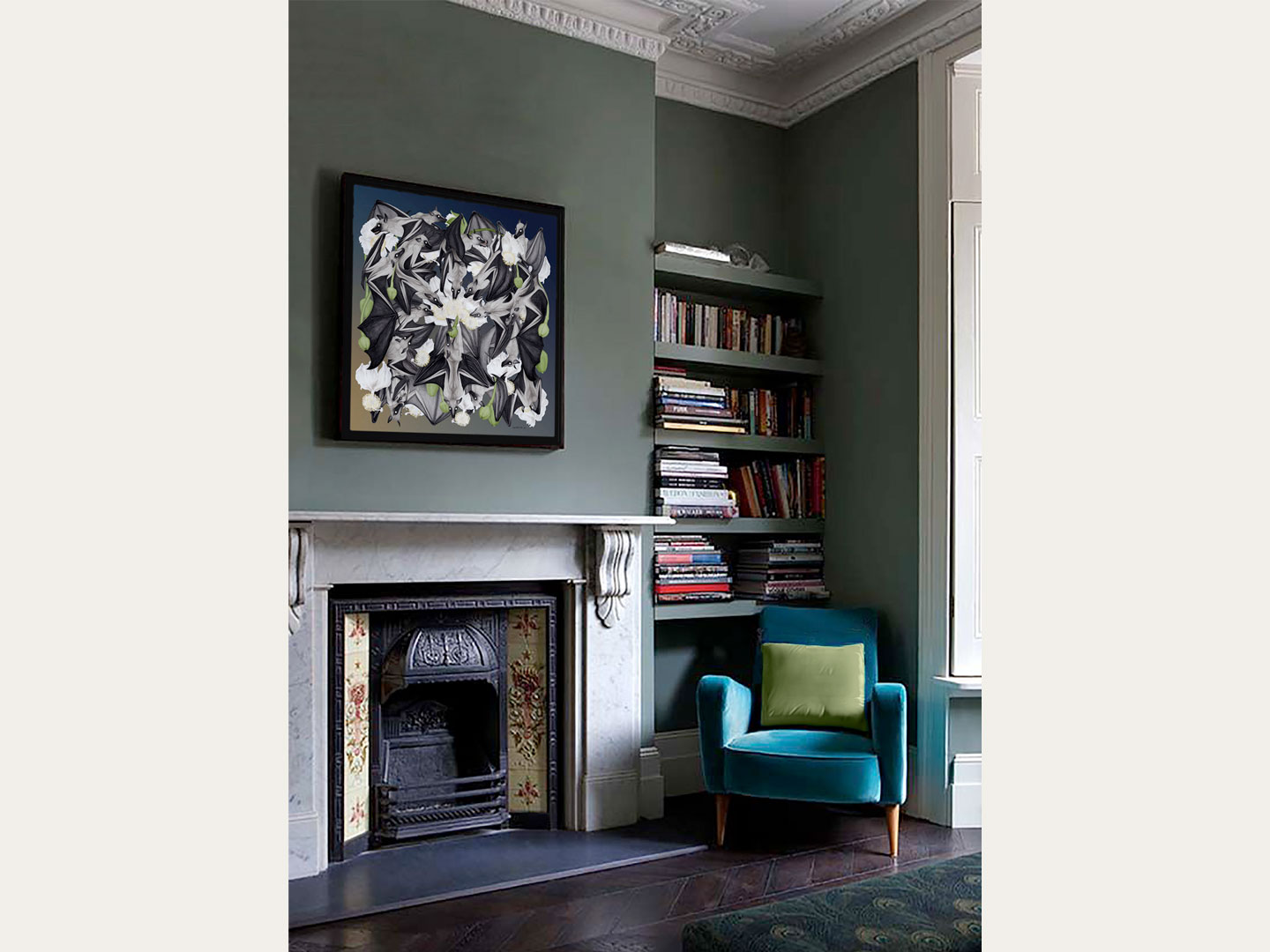
The 75 x 75 cm (ca 29.5 x 29.5 in) fine art prints currently available here (opens in new tab).
KOI I
This luminous composition features a dynamic arrangement of koi carp in vivid reds, ivory white and velvet black. It is created from an ink painting with digitally enhanced colours in Arlette’s signature naturalistic yet slightly stylised aesthetic, a balance between organic realism and graphic clarity. The Koi are structured around a circular flow that evokes natural motion and harmonious wholeness.
There are nine koi, eight red and white ‘Kohaku’ Koi, and single black. This combination is considered to be particularly auspicious, as it contains the lucky number eight combined with one black Koi which is believed to absorb bad luck. The artist plays with these symbolic associations, fascinated by our need to find meaning and influence in a complex and multifaceted reality.
Her work often operates in this liminal space, where pattern, form, and myth coalesce.
The tension between their material surface with its precise patterns and the tranquil abstraction of their movement evokes a bridge between two realms: the visible world and the inner one. The hypnotic formation of the Koi becomes a mandala-like portal between inner and outer states of being. Cyclical motion mirrors inner rhythms—loops of thought, instinct, meandering states of mind. The singular black koi introduces a note of contrast, a quiet disruption that gestures toward transformation, difference, or the shadow self that deepens the whole.
In this piece and in her art in general, she renders homage to the beauty of the natural world, simultaneously turning it into a contemplative mirror in which to sense the undercurrents of our own.
KOI II
Koi II features nine koi in richly colourful varieties in a dynamic composition, as if suspended in a moment of fluid harmony. The Koi depicted are all existing breeds, rendered with acute attention to pattern, colour and anatomy.
The interplay of form and negative space evokes a calm dynamism, a moment of movement stilled into meditative reflection. Motion and energy are implied in the dynamic flow of the composition and in the luminosity of saturated colour against a soft gradient ground. By balancing near-naturalistic representation with a distinctly contemporary clarity of vision, it offers a distilled version of reality that feels suspended between the real and the archetypal, inviting contemplation through beauty.
The piece speaks of variety within unity. Each fish carries a sense of individuation yet remains part of a greater, flowing constellation, mirroring how we are living a collective experience while remaining rooted in our individual mythologies.
Koi carp have long been revered as symbols of courage, longevity, and spiritual ascent. Like its sister piece ‘Koi I’, this work hints at the fluid boundary between the outer world and inner states, inviting quiet reflection on transformation, harmony, and the beauty of coexistence.
SNAKES I
Snakes I is derived from an original ink painting by Arlette Ess, digitally reworked to heighten its intensity and complexity. Dozens of vibrantly colored snakes are rendered in jewel tones of emerald, sapphire, ruby, citrine, amethyst and obsidian against a dark tonal background. Overlapping in semi-translucent layers, they appear to move organically in a spectral web of texture and form.
At once mesmerizing and slightly unsettling, the work plays with ancient symbolism and ambiguity alongside contemporary ideas, creating a meditation on complexity, interdependence, and the beauty found in entanglement. This work invites the viewer to confront a multifaceted reality, to embrace layered truths, and to find flux within form. The visceral beauty of natural form is both celebrated and abstracted into an intertwined whole, embodying an existential tension between individual and pattern.
Across cultures and centuries, the snake has been a potent mythological symbol, at once revered and reviled. It coils through our collective unconscious as healer and destroyer, protector and deceiver. From the ouroboros of ancient alchemy to the serpent in Eden, from Kundalini energy to the feared viper, the snake elicits a uniquely dual emotional response of fascination and fear in equal measure. However, in Snakes I there is no value judgment, the symbolic ambivalence that snakes have carried through history is merely infusing the image with more layers of complexity.
BATS I
‘Bats I’ is based on original Indian ink paintings of African Straw Coloured fruit bats feeding on baobab flowers. Against a backdrop that subtly shifts from dusk to deep night, the fruit bats form a rhythmic assembly, their wings and furry bodies folding like dark petals around the pale blossoms.
These flowers bloom only for a single night, glowing with ephemeral brilliance and releasing a heady scent that draws the bats from great distances. The trees rely on the bats for their survival, and the bats feed on the flowers. It is an exchange both ancient and vital: the bat pollinates, the flower nourishes.
Flowers and bats, their forms at once anatomical and dreamlike, are composed into a pattern that feels both organic and sacred. The baobab blooms open only under cover of darkness and perish with the dawn, symbols of transience and fertility. They act as luminous anchors in the composition: ghostlike, ephemeral, and luxurious. We are witnessing an ancient ecological ritual, one of the myriad of unseen threads of interdependence that uphold the living world which sustains us all.
Fruit bats, so frequently misunderstood or maligned, are here elevated to mythic stature—guardians of night gardens, mediums of regeneration. Their presence with their luminous gaze and nocturnal grace is not ominous but reverent. They become quiet deities of dusk, participating in a cosmic act that perpetuates life.
Bats have long occupied a liminal space in human imagination. In many traditions, they symbolise intuition, rebirth, and the permeability of boundaries between worlds.
This piece, faithful to Nature but resonant with myth, may also be read as a visual evocation of the collective unconscious. The bats evoke archetypes of the hidden, the intuitive, the transformative. In their layered near-symmetry and dreamlike rhythm, they suggest unseen networks of connection – ecological, psychological, and spiritual. We feel a familiar sense of pattern beyond reason, pointing to the encoded logic of nature and the psyche alike, a pattern that feels both organic and sacred.
‘Bats I’ hums with a quiet reverence: for Nature, for the night, for the overlooked, and for the archetypal forces that connect all living things. The image draws us into a mythic space where the ecological and the archetypal meet.


